-

Lundis-Livres : Céline Cerny et Line Marquis
Le feu et les oiseaux. Talisman pour le monde qui viendra
What are books for? What role should they play in an art and design curriculum? How does fiction inform critical writing—or is it the other way around? And, for that matter, how does the form of a book enhance the meaning of its content?
The Lundis-Livres podcast shares unique moments of conversation with figures from the fields of art and design, whose publications enrich and advance creative practice.
-
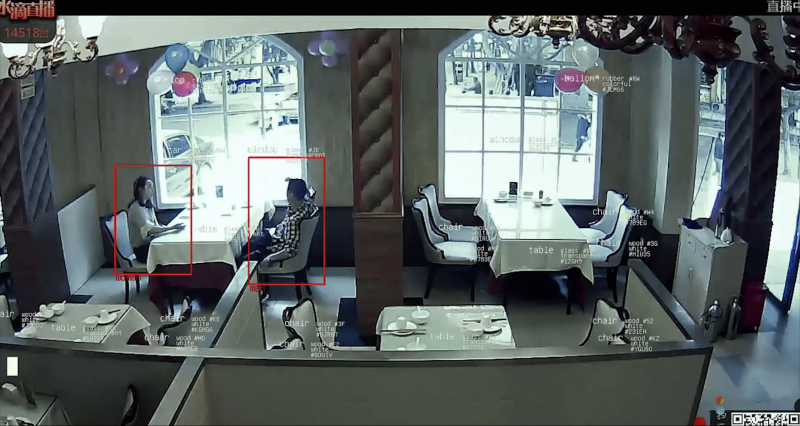
Dyslinear mise-en-fiction of surveillance images in Dragonfly Eyes by Xu Bing
The film Dragonfly Eyes (Xu Bing, 2018) constructs a linear fictional narrative – a classic love story between two young workers – led by the soundtrack, which unfolds alongside images from multiple surveillance cameras installed in China. The low resolution of the images makes a dystopian narrative possible as the film’s characters gradually adopt a ‘common’ face through cosmetic surgery, hyperbolically disrupting the omnipotence of state surveillance.
-
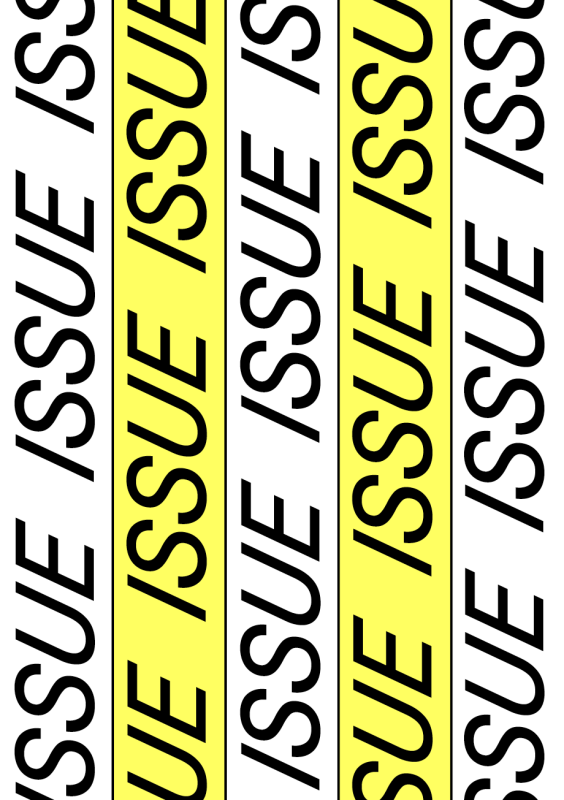
« La mission de graphiste dépasse largement le domaine de la mise en forme »
Entretien avec E+K (Élise Gay et Kévin Donnot)
ISSUE fait peau neuve ! Depuis le mois d’avril 2025, ses lecteur·icexs bénéficient d’une interface plus attrayante et de fonctionnalités qui permettent d’explorer de manière plus dynamique les contenus existants et futurs. Initiée en 2023 à la demande de l’équipe d’ISSUE, cette refonte éditoriale a été orchestrée par l’atelier de design graphique E+K (Élise Gay et Kévin Donnot). Il et elle ont accepté de raconter ce projet de l’intérieur, dans cet entretien qui met en lumière ce qu’est le travail de « design » (au sens le plus riche du terme) d’un médium éditorial numérique.
-

Dossier #28
Animals
For animal individuality
‘The animalisation of animals is a perpetual condemnation.’ (Kaoutar Harchi, Ainsi l'animal et nous, Arles, Actes Sud, 2024, p. 23)
In her latest book, Ainsi l’animal et nous, published by Actes Sud in 2024, author and researcher Kaoutar Harchi traces the long, drawn-out trial to which humans have subjected animals over the centuries. Debating at times their right to exist, at others their right to feel, human society has gradually reified animals. From there, Harchi points out, ‘all that will remain of animals is the animal. A form that is the inverse of the human form, the immutable and radical form of the other, an absent, present, private and appropriated form, the form of the norm and that of deviance, the border form, a form ever so useful for delimiting the worlds of life, the form of waste, of fear and desire, a vacant form, stripped bare, stuffed, a form on display, a form that is there, at our disposal, a form that is available.’ (Ibidem, pp. 23-24)
Whether as an object of belief, a vehicle for perception or simply a reflection of societal change, animals are examined in this new feature through the prism of their representation. At a time when human violence towards the environment is increasingly denounced, animal media coverage calls into question our relationship with others and, more broadly, ‘the living’. Art and design offer a possible reinvention of this relationship, providing the space for speculation necessary to renew our system of representation.
In his article on animal domesticity, Javier Fernández Contreras questions the coverage of pets on social media. As puppets of human owners who care little for their consent, domestic animals become their owners' spokespersons or avatars on social media while, as Fernández Contreras tells us, ‘their corporeality, constrained by human intervention, blurs the lines between subject and object’. Echoing this analysis, the architect Lluìs Alexandre Casanovas Blanco reports on the explorations carried out during an MAIA Master's workshop, in which the interior spaces encourage us to shift our gaze and rethink relationships between human and non-human living beings in a more horizontal way. By studying the differentiated needs of wild and domesticated animals and taking into account well-being and emotions in adapting interior spaces for mobility, students developed a forward-looking and critical approach to the cohabitation of species.
The overuse of pets on social media is thus being countered by initiatives that encourage the deconstruction of stereotypes.
Inspired by the test devised by Alison Bechdel to identify instances of non-discriminatory scenarios for women in cinematic fiction, HEAD graduate illustrator, Fanny Vaucher, has created the SIMBA test, adapting the concept to the representation of animals. Many thinkers have established a link between the oppression of minority populations and that of animals, which, like them, are often deprived of individuality or reduced to their relationship with others. How can fiction reinvent itself by making room for the animal's point of view? Fanny Vaucher answers this question both in images and during an interview.
A crucial issue in today's world, the animal embodies both the disconnect between humanity and the living world as well as humanity’s awareness of the growing vulnerability of an ailing ecosystem.
Enjoy your reading!
-
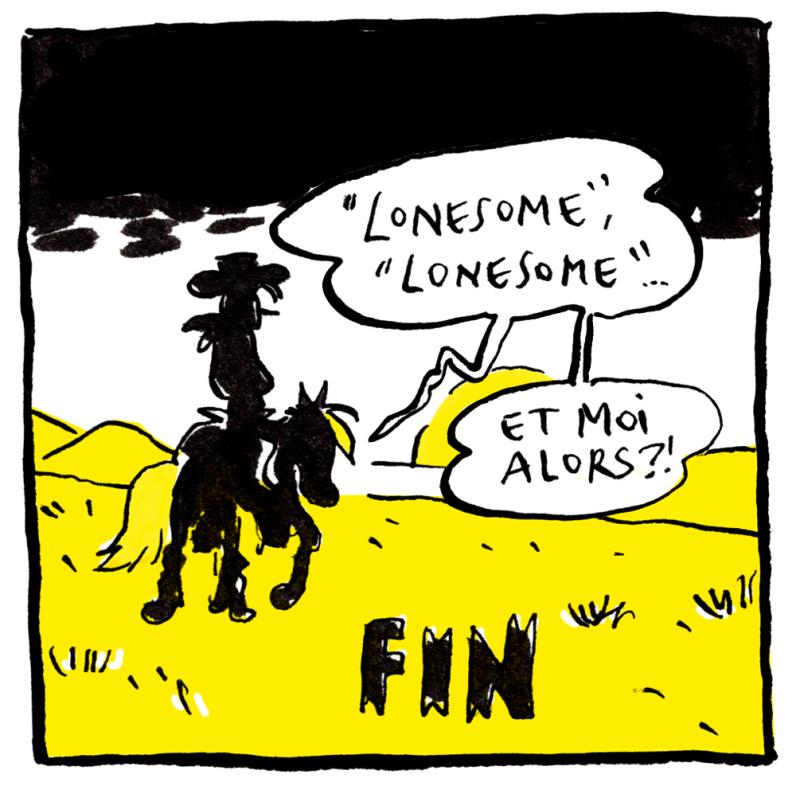
Un test de Bechdel du spécisme
Le test SIMBA
What if there were a Bechdel test equivalent for the representation of animals in works of fiction? French-speaking Swiss comic book author Fanny Vaucher makes a proposal in this direction.
-
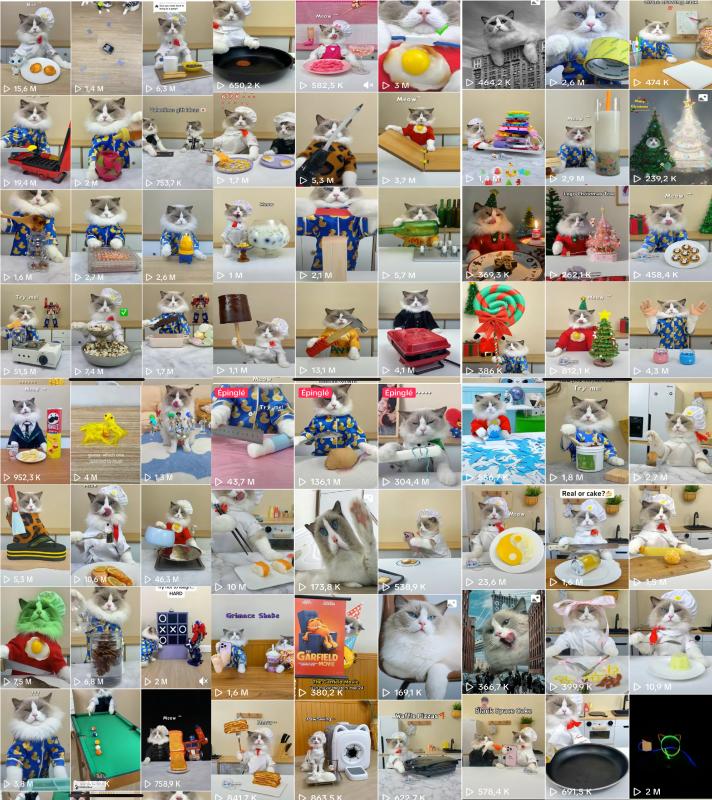
Influenceurs à poils
Portrait et domesticité animale au XXIe siècle
La saturation médiatique, au niveau de la consommation comme de la production, fait surgir des questions inédites sur les relations non humaines, y compris avec nos très chers amis à poil. Les animaux de compagnie occupent la majeure partie de notre flux de médias sociaux, mais très peu de notre attention intellectuelle. Dans cet essai, Javier Fernández Contreras se penche sur leur histoire au sein de la vie domestique.
-

Domesticity / Domination
The Animal at Home
Instead of situating interior architecture as an all-encompassing field that designs the domestic cohabitation of animals and humans, the workshop given by architect, curator and scholar Lluís Alexandre Casanovas Blanco for students of the Master of Arts in Interior Architecture at HEAD – Geneva used this discipline to critically examine the validity of this historical phenomenon from a material and spatial perspective. Moving away from the notion of a “pet” – questioned by new theoretical approaches to the relationship between humans and non-humans – the workshop aimed to identify the traditional role that interior design plays in animal domestication within home interiors. Its ultimate goal is to envision non-hierarchical relations that diverge from the imposition of human-centric materials and spatial domestic standards onto other species.
Students collectively worked as a research unit on a graphic publication to be presented at the end of the workshop. After reading several key texts from fields such as the history of science, biology, and philosophy, they mapped out current discussions regarding the presence of animals in domestic spaces through clippings from general printed and online media written in the languages each student speaks. This included new legal frameworks, political polemics, the transformation of the home, the design of new architectural artifacts, etc. As a means of making the workshop’s discussions public, students’ ongoing research is published in ISSUE.
-

Sortir du récit de la domination exercée sur les animaux
Entretien avec Fanny Vaucher
Why use the Bechdel test model to assess the representation of animals in works of fiction? Julie Enckell speaks with HEAD – Geneva alumna and illustrator Fanny Vaucher about the SIMBA test she developed in 2024, at the intersection of her artistic practice and her anti-speciesist activism.
-
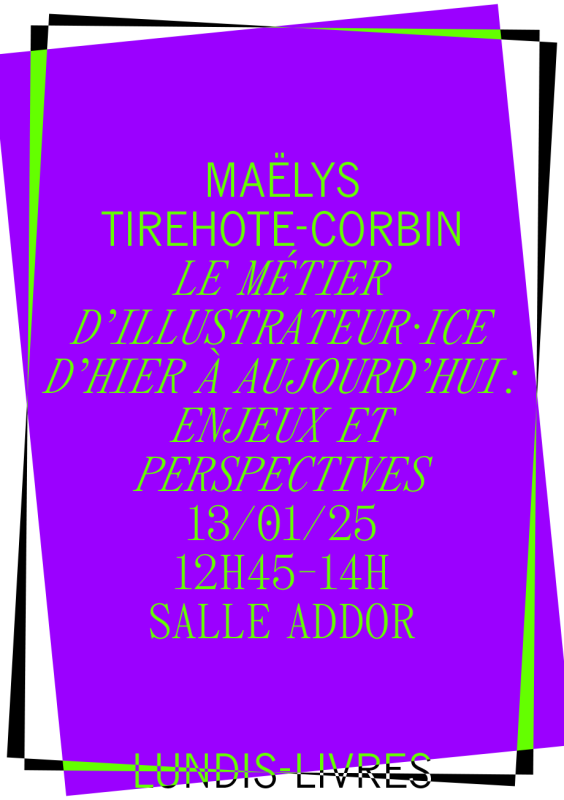
Lundis-Livres : Maëlys Tirehote-Corbin
Le métier d'illustrateur·ice d'hier à aujourd'hui : enjeux et perspectives
What are books for? What role should they play in an art and design curriculum? How does fiction inform critical writing—or is it the other way around? And, for that matter, how does the form of a book enhance the meaning of its content? The Lundis-Livres podcast shares unique moments of conversation with figures from the fields of art and design, whose publications enrich and advance creative practice.
-
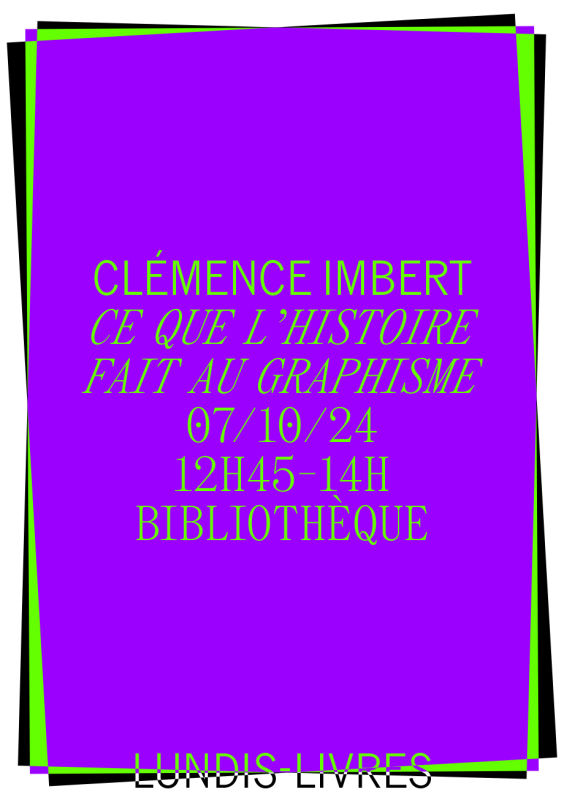
Lundis-Livres : Clémence Imbert
Why History Matters to Graphic Design
What are books for? What role should they play in an art and design curriculum? How does fiction inform critical writing—or is it the other way around? And, for that matter, how does the form of a book enhance the meaning of its content? The Lundis-Livres podcast shares unique moments of conversation with figures from the fields of art and design, whose publications enrich and advance creative practice.
-
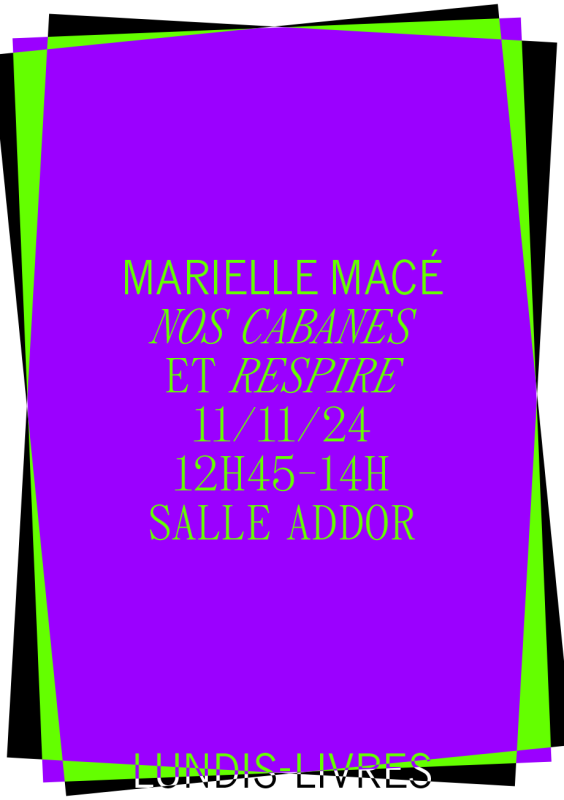
Lundis-Livres : Marielle Macé
Respire
What are books for? What role should they play in an art and design curriculum? How does fiction inform critical writing—or is it the other way around? And, for that matter, how does the form of a book enhance the meaning of its content? The Lundis-Livres podcast shares unique moments of conversation with figures from the fields of art and design, whose publications enrich and advance creative practice.
-
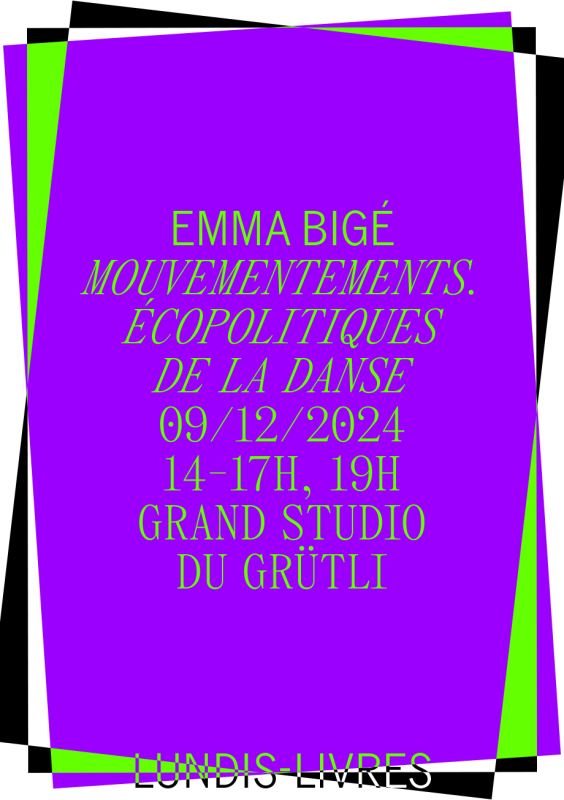
Lundis-Livres : Emma Bigé
Mouvementements
What are books for? What role should they play in an art and design curriculum? How does fiction inform critical writing—or is it the other way around? And, for that matter, how does the form of a book enhance the meaning of its content? The Lundis-Livres podcast shares unique moments of conversation with figures from the fields of art and design, whose publications enrich and advance creative practice.
-
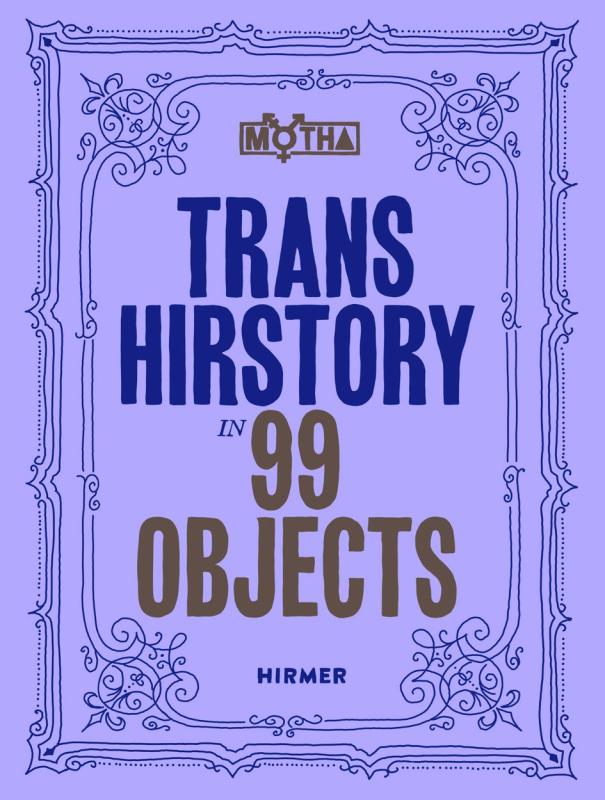
Trans Hirstory in 99 Objects
The artist Chris Vargas is the founder and self-appointed director of The Museum of Trans Hirstory & Art (MOTHA), a conceptual museum forever “under construction.” His outstanding work has inspired an ongoing research and teaching project on trans art history at the HEAD – Genève (HES-SO), supervised by Clovis Maillet with the participation of Ruby Faure and Jay Jordan, and supported by the Centre Maurice Chalumeau en Sciences des Sexualités (UNIGE).
In 2023, the MOTHA co-published Trans Hirstory in 99 Objects, a compelling exploration of trans art, activism, and resistance with contributions from many scholars and artists including Riley Snorton, Vaginal Davis, Jeanne Vaccaro, and Leah DeVun. Spanning over four centuries, this volume brings together a wide-ranging selection of artworks and artifacts that highlights the under-recognized histories of trans and gender-nonconforming communities in order to reflect on historical erasure and imagine trans futures.
In his talk introduced by Clovis Maillet, Chris Vargas presents his research and discusses with moderator Ruby Faure and the audience.
-
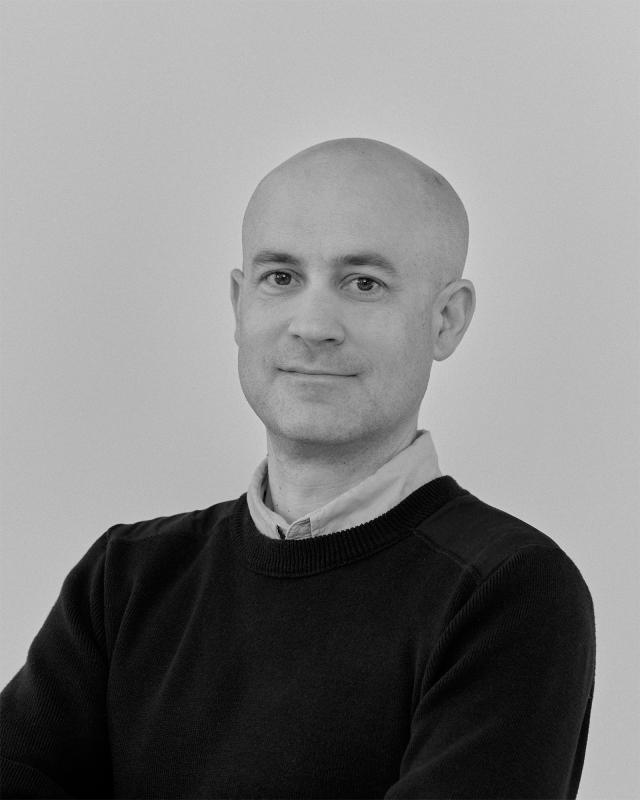
Dossier #27
Tribute to Nicolas Nova
In tribute to Nicolas Nova, this feature of Issue brings together a text by his colleagues Alexia Mathieu and Anthony Masure, a recording of two public discussions by Nova in 2024 on his research as an anthropologist, and the articles Nova published in the journal.
The sudden and senseless death of Nicolas Nova leaves us feeling like orphans. His passing marks the demise of a whole area of design research and digital culture, as well as that of a wonderful colleague and friend, always attentive to others and to the murmurings of the world. Those who knew him will remember him as a brilliantly inventive mind endowed with insatiable curiosity, a rare humility, and as someone who was always cheerful.
— Alexia Mathieu et Anthony Masure
-
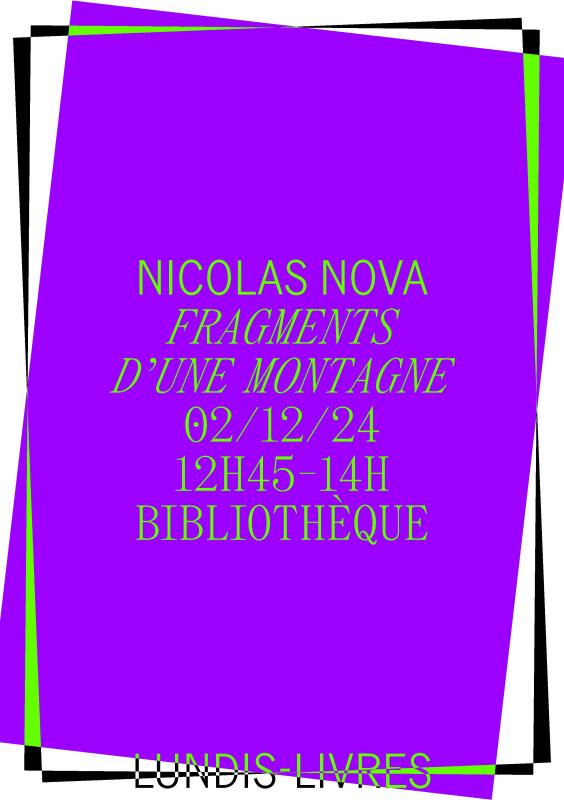
Lundis-Livres : Nicolas Nova
What are books for? What role should they play in an art and design curriculum? How does fiction inform critical writing—or is it the other way around? And, for that matter, how does the form of a book enhance the meaning of its content? The Lundis-Livres podcast shares unique moments of conversation with figures from the fields of art and design, whose publications enrich and advance creative practice.
-
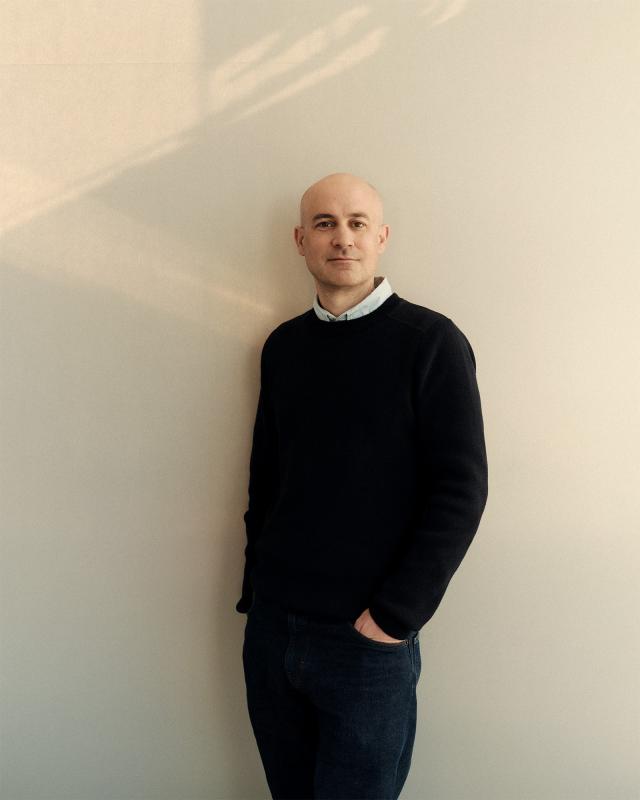
Nicolas Nova (1977-2024), un éclaireur des futurs possibles
This article pays tribute to Nicolas Nova (1977-2024), a professor at HEAD – Genève (HES-SO), who died during a trek in the Sultanate of Oman. A precursor in studies that combined design, social sciences, and technology, this unclassifiable researcher explored the imaginaries, interstices, and paradoxes of digital objects, examining the tensions between industrial standardization and situated reappropriations. Co-founder of the Near Future Laboratory, he renewed technological narratives through the practice of “design fiction.” An inspiring teacher, he taught his students an ethnographic perspective, transforming the observation of everyday life into a lever for creation. The care given to the form of his works embodied his conviction to build bridges between academic research, design practices, and civil society. With some twenty books to his name, Nicolas Nova leaves behind a multifaceted body of work. His absence deprives technological criticism of an essential, lucid, curious, and poetic voice.
-
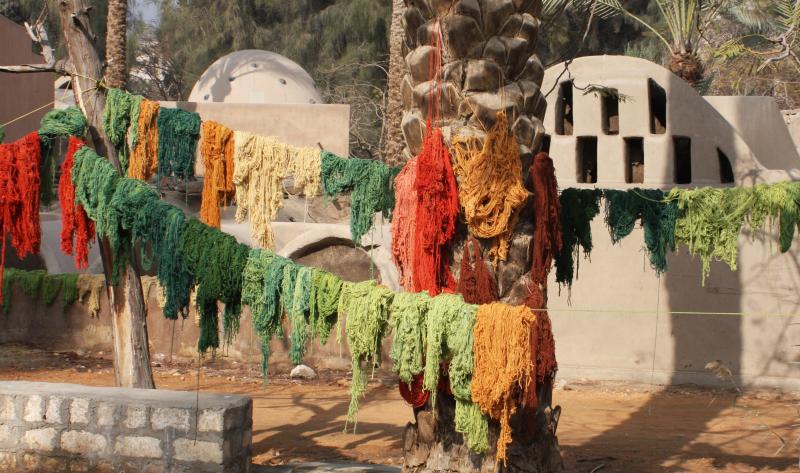
Making Concepts
The introductory text to A Show of Hands – which is shared below in its French version – raises the question of the relationship between art and craft. From a historical perspective, it is clear that the emergence of the notion of art in the West was contingent upon its separation from craft. In a colonial context, this disjunction made it above all possible to deny the practices of a colonised people the possibility of attaining the status of works of art. The essays in A Show of Hands shed a completely different light on making handiworks and craft.
-
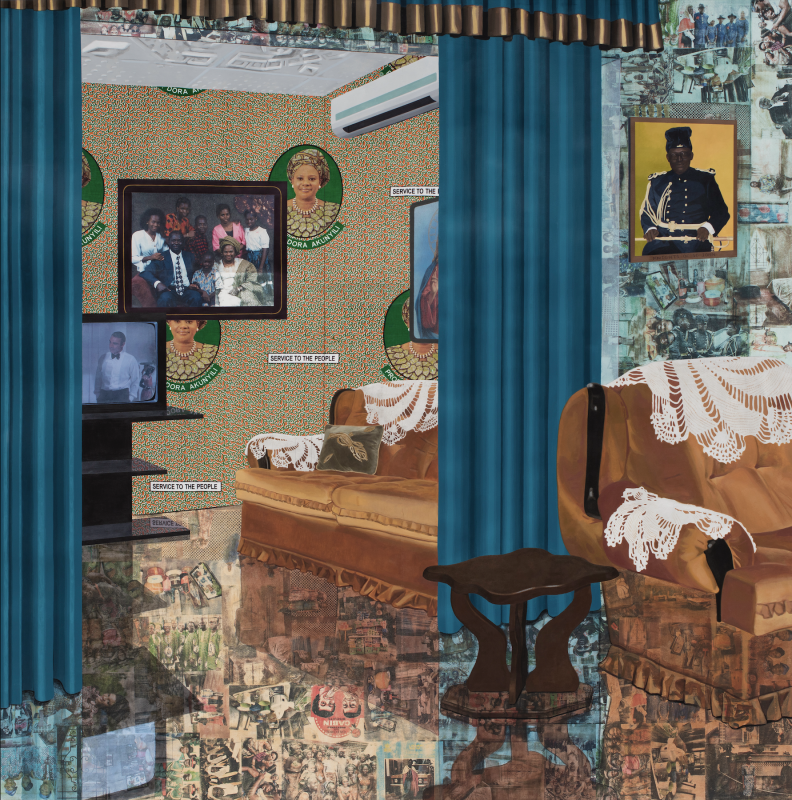
Decentring Conceptualism
An Interview on Making Art on the Occasion of the Publication of A Show of Hands
To mark the publication of A Show of Hands. Crafting Concepts in Contemporary Art (Berlin, De Gruyter, 2025), Anthony Masure sits down with Ileana Parvu, the book's editor, and Nadia Radwan, author of a chapter of the book. Parvu contextualises the research project behind A Show of Hands, while Radwan highlights the political issues at stake in her decentred, decolonial analysis of craft in contemporary art.
-

La Collective Tools Project
Outiller la coopération
The Collective Tools Project focuses on group dynamics. What are the methods that can help a collective function? How can each person find their place, exchange ideas, and be able to harmoniously share their expertise? These are the questions that the La Colle collective asked itself as part of a research project jointly supported by La Manufacture – Haute école des arts de la scène, the Yan Duyvendak company, and HEAD – Haute école d'art et de design de Genève (HES-SO).
-

Craft practices and experimentation in graphic design at the HEAD – Genève
Florence Marguerat carried out a survey of alumni and teachers of the HEAD’s Visual Communication department to discuss the revival of craft practices in design at a time when digital technology is playing an increasingly important role in the creative professions, raising questions about the impact of artificial intelligence.
-
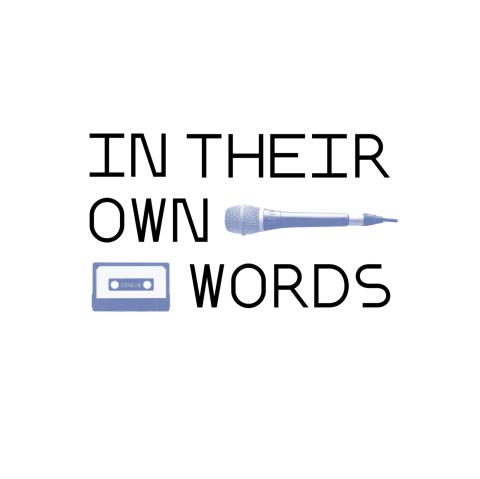
Dossier #26
In Their Own Words
This feature reports on research carried out during the 2023-2024 academic year thanks to the Gendered Innovation Fund that we obtained in 2023 for the In Their Own Words research project. Our aim was to formalise a long-term thinking process that had already been partially developed in other forms and in other contexts. A few years earlier, we had initiated the collection of artists' interviews On Words, which Sarah Burkhalter subsequently joined when the project found a home at the Swiss Institute for the Study of Art (SIK-ISEA). While the theoretical research developed upstream already addressed the concerns of women artists' conversations, this time On Words laid the foundations for an empirical creation, based on the principle of listening, horizontal exchange, and unfinalised speech.
For the In Their Own Words research project, we delved into the feminist practice of artist conversation, tracing its occurrences from the birth of the tape recorder to the podcast. The initial assumption was that feminist artists and art historians had imagined new forms of experimental writing and documentation through conversational practices. This practice, which is also part of our work as art educators, is deeply rooted in the radical encounter between activism and research. In order to share intersectional reflections on unrecorded art histories, we have summoned artistic and theoretical approaches, both speculative and historical, around these questions. To grasp the questions themselves, we are drawing on feminist, queer, and decolonial thinking.
Including feminist talking narratives into the wider art narrative requires the development of specific methods of analysis. This involved taking into account the media used to record and share conversations; the archiving processes involved in storing these conversations and making them available to the public; and the obsolescence of the media and channels used to access these conversations in historical analogue and, now, online digital, archives.
With this in mind, we looked at the influence of the tape recorder's playback function on memory, the affective forces revealed by the archiving of otherwise inaudible voices, and at how to address concerns about the legitimacy of the personal and political information gathered from these conversational archives.
In the course of the research, the boundaries of the notion of internationality were challenged from an intersectional perspective. While the corpus of US and European feminist interviews we first analysed remains largely invisible in canonical art history, a further invisibility weighed on the essential work carried out by artists Helen Khal in Lebanon and Nazli Madkour in Egypt, who, along with Cindy Nemser and Eleanor Munro, share our interest. These methodological, aesthetic and art historical perspectives are complemented by the contribution of Olivia Alexandra Fahmy, a researcher associated with our project, on artist Nazli Madkour’s publication, Women Artists in Egypt.
The In Their Own Words feature reports on the various stages of our research. In addition to the above-mentioned article by Olivia Alexandra Fahmy, this feature describes the methodological issues that were addressed (“On the record: Notes on Feminist Practices of Visual Arts Interviewing”); it makes it possible to view the contributions at the study day organised in March 2024; and, finally, a podcast based on a conversation with the Polish-born London-based artist Marysia Lewandowska traces a career and a path shaped by conversations with women artists: the Women's Audio Archive. In the 2000s, self-produced, specialised or general podcasts offered a flexible form of listening and accessible discursivity. Over the last ten years or so, they have given rise to a new wave of feminist projects aimed at rediscovering the voices absent from official narratives. The podcast's intimate distribution format has enabled us to question its potential for self-learning. How do audiences, particularly generation Z and the youngest listeners, engage with art history podcasts? What are the contexts of reception of this history – and how does intimate listening enable a different experience of content assimilation?
Enjoy!
-
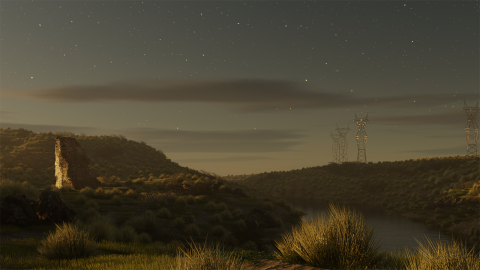
ANOL1: The First Encounter
ANOL1: The First Encounter is the first 3D animation of the ANOL1 series that explores the rich tapestry of female mythical creatures from Central Asia, shedding light on their untold stories in a decolonial context. Drawing upon the concept of female monstrosity, the animation aims to underline the intergenerational connections and empower future generations with forgotten narratives. -
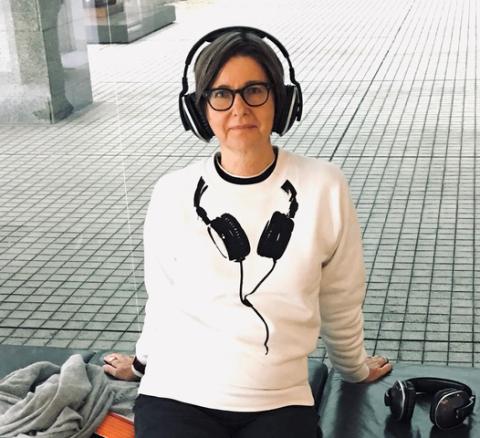
In Her Own Words
The podcast captures the essence of a conversation that we had with Polish-born artist Marysia Lewandowska in November 2023, at her studio in London. This conversation is the starting point and matrix of the research project In Their Own Words. While tracing her trajectory as an artist from the Eastern Bloc to capitalist England, Marysia Lewandowska discusses how her use of the audio recorder allowed her to connect with the Western art world. From this experience was born her "self-instituted" project, the Women's Audio Archive, an archive of over 120 hours of recordings that has now been digitized. What is the role of an artist's conversation and what status does art history give it? How should it be disseminated? Should it be archived? Should it be edited and, if so, to what extent? This podcast brings together the essential methodological questions raised by this discussion conducted from a feminist perspective.
-
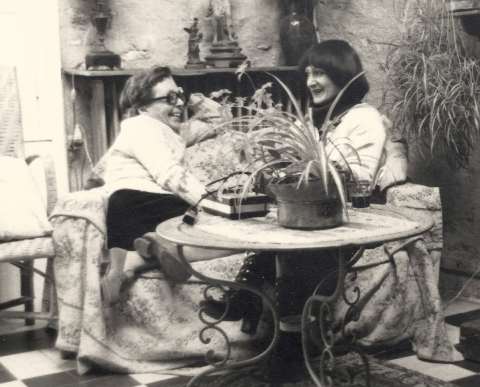
"Les parleuses": Conversations on Art in Italy in the 1960s-1970s
In Italy in the 1960s and 1970s, Carla Lonzi and Anne Marie Sauzeau Boetti, both engaged in the feminist movement, proposed thinking about art through dialogue between artists and generations of artists, beyond established aesthetic categories and groups. They challenged the verticality of genealogies in art history, which were organized in a succession of artistic movements and great artists, in a conception that left aside the ideology of the masterpiece and the creative genius. Drawing on examples from the Italian context, this lecture offers a reflection on the epistemic and political stakes of an art writing based on relationship, dialogue, and listening. -
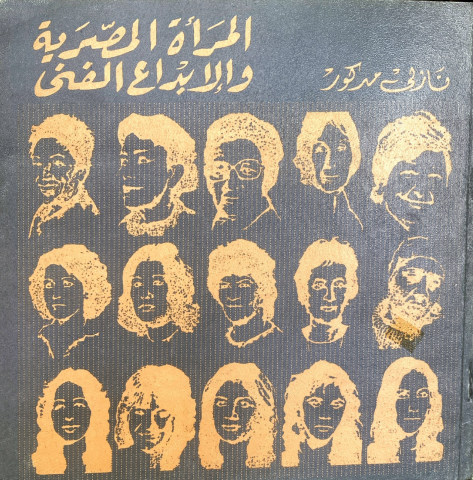
The Exception that Proves the Rule?
Nazli Madkour, Nawal El Saadawi and Women and Art in Egypt
In the late 1980s, because they knew and trusted each other, Nazli Madkour, an Egyptian artist active in the cultural scene, and Nawal El Saadawi, a psychiatrist, writer and feminist political activist, agreed to publish a book that revisited and shed light on the role of women artists in Egypt. The book was published in 1989 under the title Egyptian Women and Artistic Creativity [المرأة المصريةوالإبداع الفني]. In 1991, the Egyptian government's State Information Service commissioned an English edition, entitled Women and Art in Egypt. In an interview with Olivia Alexandra Fahmy, Nazli Madkour looks back on the history of these two books.
-

Two Auditionary Prophetesses Facing Scholars: Hildegard of Bingen and Elise Müller
What is the power of a woman who hears voices in the face of artistic and political authorities? The Rhenish abbess Hildegard of Bingen (1098-1179) was a visionary and "auditionary" prophetess. Her music is still sung, and her voice translated into all languages, even in the feminist journal Heresies. She conveyed a message from another dimension, attested by male authorities (abbots and a pope). The Geneva medium Elise Müller (1861-1929), known by the heteronym Hélène Smith, also had visions and heard voices that dictated her drawings and paintings of Mars, Ultra-Mars, and the Holy Land. She conveyed messages she did not claim authorship of, controlled and doubted by multiple male authorities. These two anachronistic artists, separated by eight centuries, transmitted their voices in the interstices of male control and the definitions of art and vision. -
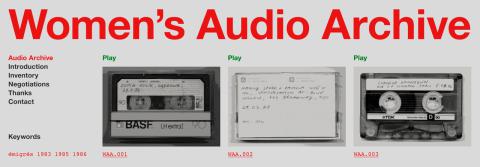
Voicing the Archive
What is the burden of the archive if not memory itself? Can we move on from thinking of archives as stores of data, and closer to an idea of a desiring archive, a reservoir of affective materials and resistant opacities? In establishing the Women’s Audio Archive in London (1985-1991) I had in mind both the collection and a site where the recorded conversations would participate in developing a history of women in the media-visual tradition, which by its ephemeral nature can easily be forgotten. The Archive with its attention to sound acted as an incision in the hegemony of visuality and adjacent commodity values of the 1980s. -
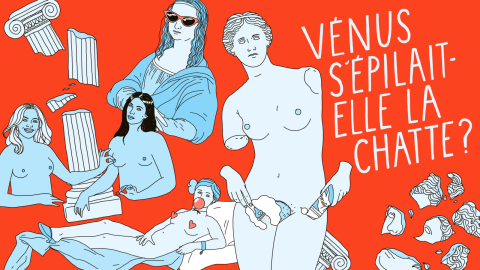
Art History and Activism: Why Sound Creation?
Why use a sound medium to talk about images? What social role can a podcast play? To what extent is it a relatively free and safe space for conveying an engaged discourse? How can we preserve and enhance sound archives? Without claiming to provide definitive solutions to these complex issues, this talk will offer some answers and avenues for reflection. -
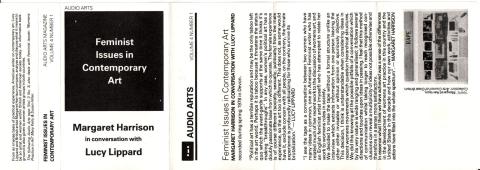
On the Record
Notes on Feminist Practices of Visual Arts Interviewing
In this essay, the two authors discuss feminist methodologies of the visual arts interview. Adopting the interview to obtain information on women’s experience of art means focusing research on the terms of conversation and language. From this approach comes a critical reflection on the dimension of exclusion in the vocabulary used, which does not have the same meaning depending on who is speaking. If the interview belongs to the category of artists’ writings for criticism and the history of contemporary art, the feminist approach places more emphasis on the voice and the act of talking.
-

Of Queer Resonance
In the foreword of her collection of tape-recorded interviews Autoritratto (1969) Carla Lonzi challenged her readers with the question: "If it had been possible to record what the artists used to say in their everyday conversations, would we still need to read Vasari’s Lives to find a contact with them?" Conjuring a technological anachronism, Lonzi exposed the very capacity of sound recording to redefine the separation between history and experience. Following her cue, in this paper Francesco Ventrella draws from a series of artist interviews, talking pictures, and other acoustic scenarios to explore how resonance can help us rethink the limits of representation in the discourse of art history. -
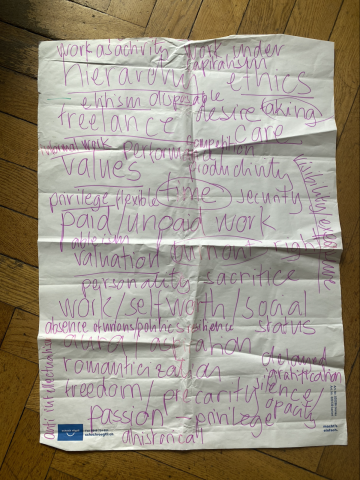
Anti-work mode
In this article, Aude Fellay examines critiques of work in fashion, and of work more broadly, in the light of the concept of 'the refusal of work', and the call for it, as formulated by the American researcher and anti-work activist Kathi Weeks in The Problem with Work: Feminism, Marxism Antiwork Politics, and Postwork Imaginaries (2011). While critiques of work in fashion have so far produced reformist impulses, some of which they claimed for themselves, Weeks' conceptual framework of postwork imaginaries allows for a more radical impulse, and, on the horizon, a more desirable world.
This article is part of the @fashion_colloquialism research project led by Aude Fellay and Émilie Meldem at HEAD - Geneva (HES-SO).
-
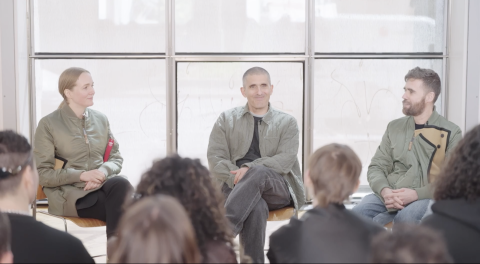
What does the role of an artistic director entail today?
As part of the Mode Conversation series organized by the Master of Arts in Fashion and Accessories Design at HEAD — Geneva (HES-SO), Lutz Huelle discussed with Alice Bouleau, partner at the recruitment firm Sterling International, and fashion designer Felipe Oliveira Baptista about the role of an artistic director today. Is artistic director the only desirable position? What are the alternatives? -
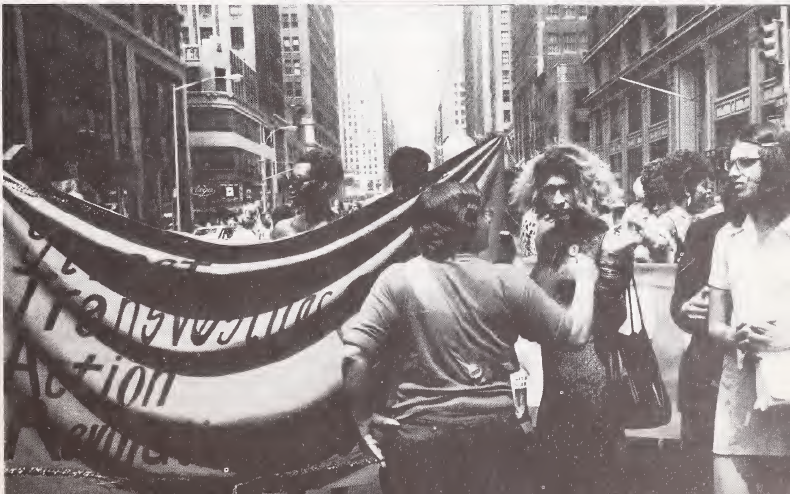
Dossier #25
Trans Hirstory and Art
“For millennia, the patriarchy has had history; for a few years, in the 1970’s, some white feminists had herstory; but now, transgender people finally have a gender neutral hirstory all their own”. (Chris E. Vargas, Museum Of Trans Hirstory and Art, 2017)
Borrowing the expression hirstory from the artist Chris Vargas, the conference Trans Hirstory and Art, whose proceedings we publish in this dossier, aimed to create spaces for a plurality of approaches towards trans history, trans archives, and connections with the past, that make and unmake trans subjectivities and contemporary trans struggles. All too often, the past has been transformed into a hegemonic narrative that disqualifies the mere possibility of gender variant lives. Archives submitted to a series of curation and indexing choices gradually converge towards the highlighting of lives conforming to current norms and standards. Scholars of queer and subaltern studies have learned to read between the lines of normative documents, and to reveal what was once present and is now silenced. While a struggle against erasure is a never-ending one, it seems that gender-variance and queer sexualities were too present to go unnoticed.
The conference showcased the numerous perspectives that converge in the field of trans studies and aims to question the construction of transness as an allegedly new topic. While publications in the field of trans history have been growing in prominence over the past years, the links between anglophone historical research and francophone studies are still lacking. The conference highlighted the different perspectives on trans history, emphasizing the role of trans communities, social movements, and political struggles, as well as decentering the hegemony of western and colonial epistemologies.
A few artists developed their projects around the construction of alternative queer and trans history, using archives and reempowering them, as Yuki Kihara and Chris Vargas did. While queer and trans studies have a common ground, some exhibitions and catalogues may have blurred sexualities and gender categories, including different approaches to sex and gender (by Vincent Honoré and Smith & Piton). But the multiple contradictions that are in contrast with this increased visibility have also been addressed in a critical manner, in the context of increasing systemic violences, especially towards transwomen of color and trans sex workers. We see this conference as a starting point for further research on the matter, and thank HEAD–Genève (HES-SO), our colleagues from Work.Master, TRANSform and CCC, the Centre Maurice Chalumeau en Sciences des Sexualités (UNIGE), Camille Yassine, Constance Brosse, and our colleagues who accepted to supervise the sessions: Sébastien Chauvin, Yasmina Foehr-Janssens, Federica Martini, Noureddine Noukhkhaly, Lee Rozada, for their support and trust. Image: Drag, The International Transvestite Quaterly, vol. 3, no. 11, 1973.
-
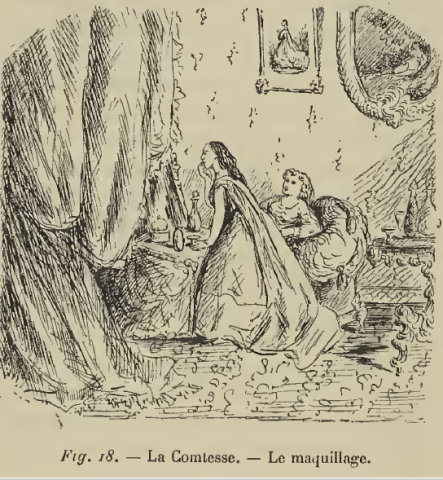
Transitioning is Kid Stuff: Trans*/Childhoods at the Turn of the 19th and 20th Century
This contribution explores the reality of trans children's lives, the social contexts in which they evolve, their games and their emotions; but also trans children's struggles, the strategies and spaces of autonomy they deploy to cope with the multiple violences they experience.
-
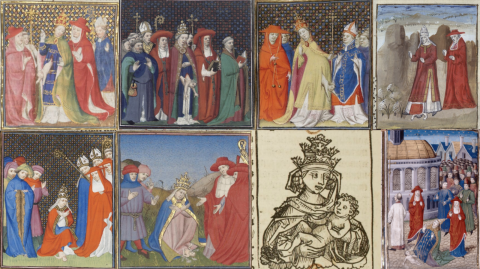
The Pope is giving birth, iconography of a masculine parturition
The 13th century in the West gave rise to the legendary tale of a parturient pope, that of the popess Joan. Although this story is at the heart of a rich literary, iconographic and historiographic production, from the 13th century to the present day, it has only been considered through the reading grid of a single possibility until now, the cis possibility, that of the sole congruence with her assigned sex: Jeanne, a woman, disguises herself as another, as a man, and in so doing, cross-dresses and hides. This possibility alone does little to account for the range of medieval possibilities: Joan is also John, and John himself is possibly a trans man.
-

Respectability as a constrained political strategy
First steps towards an analysis of the Parisian trans movement of the 1990s
This talk presents the provisional results of a research currently being carried out as part of a PhD on mobilizations for the health of trans people in France, from the late 1970s to the late 2010s.
-
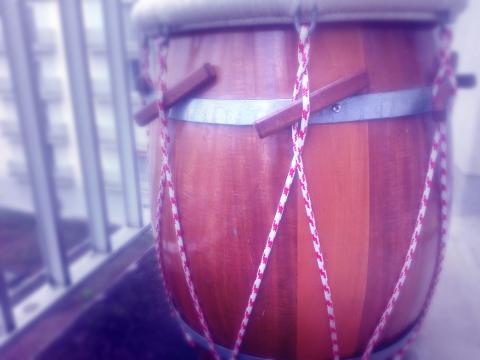
Conjured away
In post-World War II Guadeloupe, a community of gender-nonconforming individuals was instrumental in preserving and transmitting traditional drum culture. In this presentation, Michaëla Danjé analyzed some of the modalities of this erasure and the historiographical disappearance of this community. -

Une Silhouette cauchemardesque
Les phénomènes de racialisation et la longue exposition médiatique de la transition
In Black On Both Sides: A Racial History of Trans Identity, C. Riley Snorton examines American trans historiography through the prism of racial issues: how do gender and race interfere and intertwine in trans and black lives? How do concepts such as that of passing and gender fugitivity circulate between the lives that stand on the edge of the American slave-racist world as well as those that stand on the edge of patriarchy and cissexism? ISSUE features a chapter from Snorton's book in a new and previously unpublished translation by Mabeuko Oberty.
-
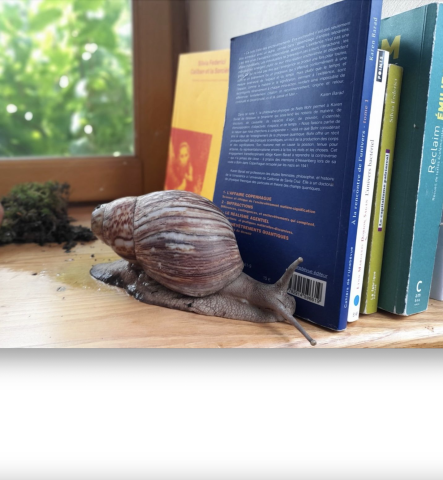
Notes on trans*grievability
Could we learn to grieve without fetishizing our dead (human or more-than-human)? Could we spend more time with our dead without making them into “steps” in the advancement of other causes?
-
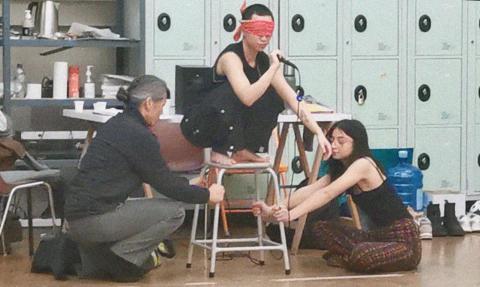
Élaborer le bruit
This contribution is the starting point of the research called « Élaborer le bruit. Les identités en traduction », which Ève-Gabriel Chabanon is conducting as part of a practice-based doctoral thesis in art, registered simultaneously at the Villa Arson in Nice and at the University Paris Cité. It explores the work of the poet Justin Chin, and its possible translations.
-
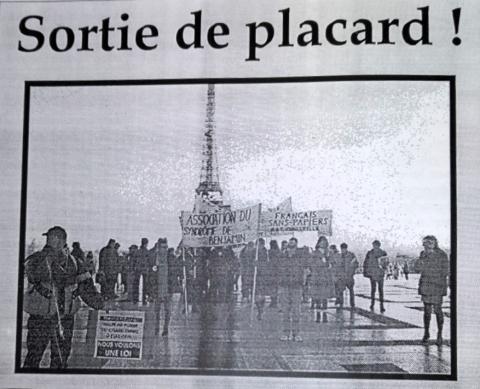
“Existence as resistance”: Existrans as a platform for trans struggles in France
Through a methodology based on Oral History interviews and archival research, this communication focuses on the theatrical strategies developed by trans activists to platform their revendications in France. It centers the analysis on the Existrans/ExisTransInter, the largest visibility-oriented event for trans rights in France. As visibility-oriented activism is raising more and more scepticism among trans activists, this communication raises key issues concerning the future of the ExisTransInter. -
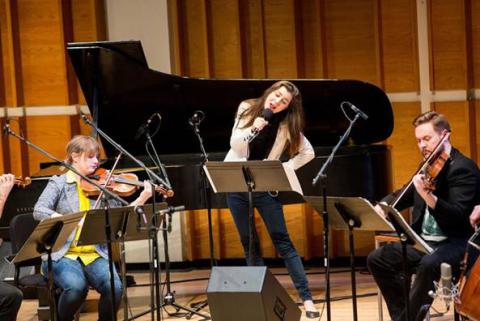
Writing a Transfeminist Archive of Feelings with Strings
Three Methodologies of Queer and Trans Hirstory in Contemporary Music
In this paper, Liz Escalle-Dyachenko discusses three pieces for strings from the 2010s by three trans and non-binary composers of contemporary music based in the United States.
-
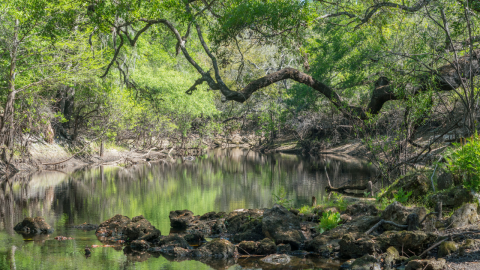
Swamp Tales, Trans Ghosts, and Nonbinary (Magical) Realism
This talk focuses on how nonbinary, as an analytic, becomes a portal for rethinking dominant conceptions of temporality, territory, and form within and across social difference. Beginning with literary and media depictions of the Green Swamp and Honey Island Swamp monsters—swamp tales that bring the 18th and 19th century into the contemporary moment—this talk highlights the monstrosity of fugitivity.
-
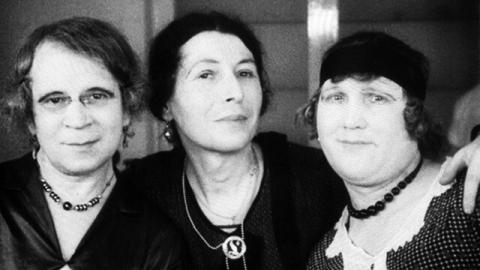
Where does care fit into our trans hirstories? Thwarting medical tropism
Medical violence is central to the narration of our past and present trans experiences, and also structures the way trans hirstory is collected, constructed and told, both epistemologically and materially. Drawing on an experience as a community researcher, trainer and care professional, this talk illustrates three forms of violence imposed by the medical establishment on trans hirstory, and three ways in which we can respond by constructing a narrative that neither over-medicalizes nor erases the materiality of trans bodies. Thwarting the forces of attraction and repulsion imposed by this medical tropism enables the transmission of a trans hirstory that is itself a source of care. -
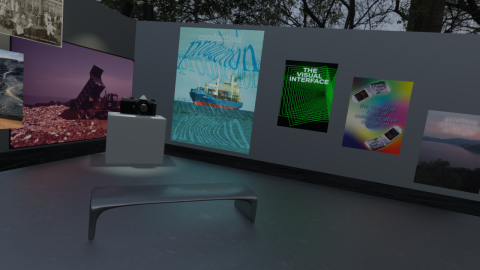
Composite Curation
Imagine yourself in a photography museum.
-
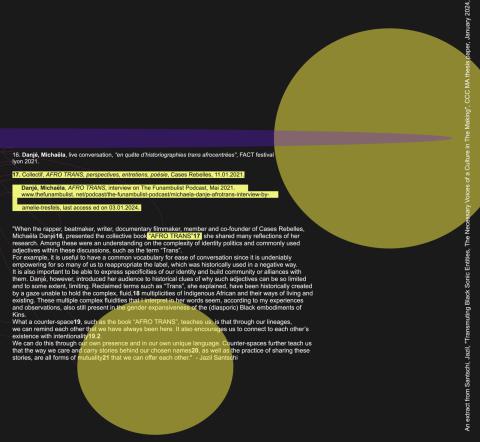
Transmuting Black Sonic Entities
An excerpt from Jazil Santschi's CCC master thesis, "Transmuting Black Sonic Entities. The Necessary Voices of a Culture in the Making". -
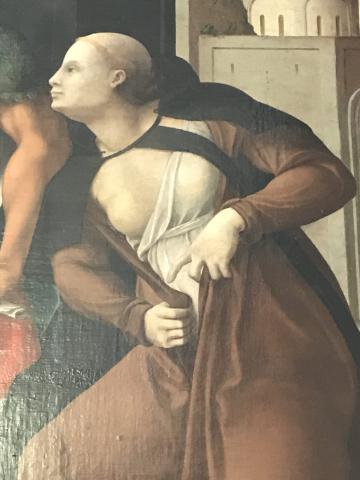
Eugenix, Hyacynth and Protus, Trans* and Eunuchs in Roman Catacumbs
Can we make trans history before the emergence of first-person narratives, and before the very conceptualization of trans issues? The hypothesis this paper develops is that the study of premodern gender transitions can teach us other ways of looking at gender that complicate our current perception, and open up perspectives for future trans people.
-
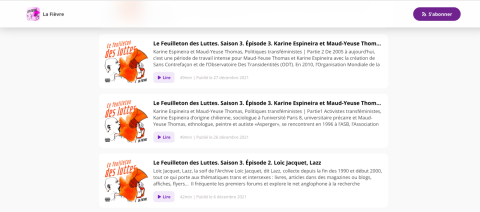
The Incompleteness of the Archive Belongs to Us
Rather than writing history, practising the living archive
Invisibilisation, erasure, dispossession; numerous are the forms of incompleteness affecting trans* archives. Writing a compensatory or reparative trans* history often proves to be the solution. However, other archival strategies and practices – such as resynchronising bodies with archives (the living archive) and leveraging the iterability of archives – open up a space for freedom and encounter in archives that is proportional to the ever so great desire that archives arise in us.
-
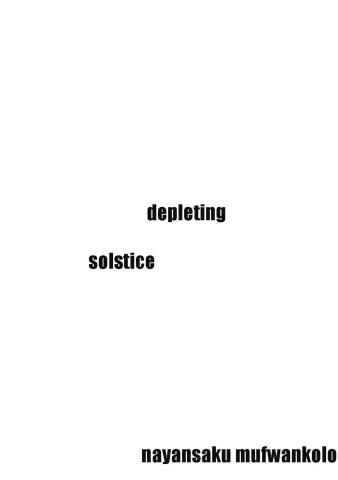
Autofiction Afrocosmic
In this contribution, Nayansaku Mufwankolo discusses their writing practice, autofiction afrocosmic poetry, and reads one of their poem.
-
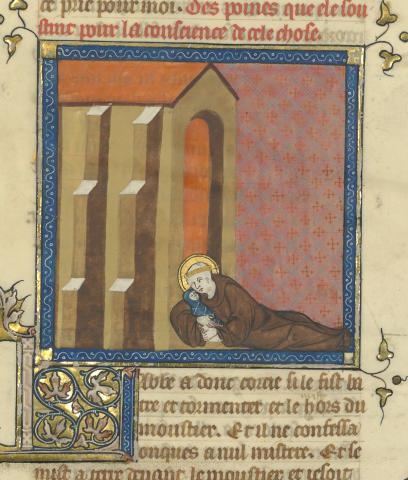
Écrire l’histoire trans*
Trans history grows in the interstices and in-betweens of institutions, disciplines and countries. It appears as an intellectual space that blends a great diversity of forms of writing, materials, contexts, and positions. The programme of this conference bears witness to this undisciplined richness, bringing together art history, political history, militant and community history, mediaeval and contemporary history, black and decolonial theories, and thinking on archives and creative research.
-
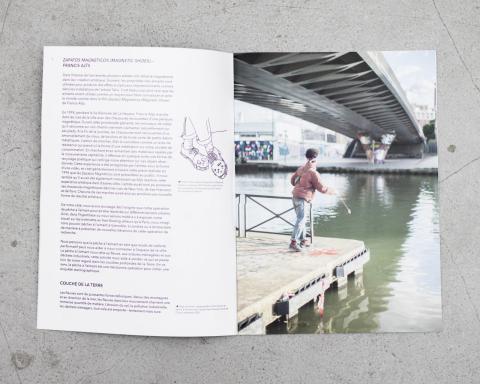
The Implications of Research-Creation for Doctoral Theses
Over the past decade and more, the term “research-creation” has gained increasing traction as a descriptor for work that combines conventional scholarly inquiry with experimental, art-based practices. Some commentators have heralded research-creation as nothing short of a rebirth for academia. Others, meanwhile, have denounced it as a pseudo-artistic and pseudo-scientific sham. Yet doctoral theses that adopt this approach are beginning to reach the defense stage in significant numbers. What do these defenses tell us? And what do they say about research in the Anthropocene epoch?
-

“Doing the Knowledge”
An Interview with Khalik Allah
The cinema department at HEAD – Geneva invited Khalik Allah to give a workshop during the “Semaine de tous les possibles” in February 2024. A renowned filmmaker and photographer (see his biography on the cinema department’s website), Allah is also a warmhearted communicator, someone who cares about sharing his process and thoughts with audiences and students. We talked with him about his artistic work and the workshop he gave to students from different departments.
-
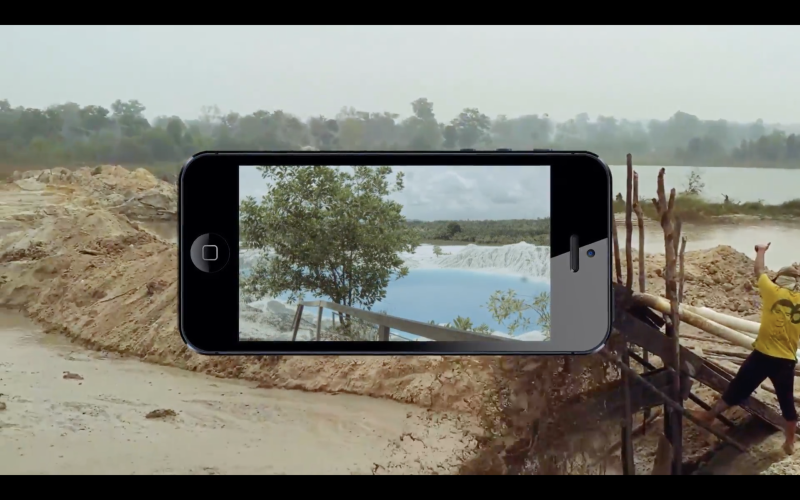
Dossier #24
Digital Materialities
This issue brings together contributions that question the materialities of digital technologies, and the ecological, class, racial and gender concerns that run through them. Each author has developed critical perspectives that shed light on different aspects of the notion of ‘materiality’. These perspectives refer to the materials that make up our digital tools and their deathly extraction; to the environments in which the materials evolve, and the meanings attached to them; to the relations of power and labour that constitute them. The feature as a whole is resolutely opposed to the idea of a ‘dematerialisation’ that is said to have accompanied the transition to digital technology.
The contributions all share the common approach of adopting creative research’s methodologies. They develop analyses based on field research and/or theoretical and historical intersections. They also propose artistic and design forms that work on speculation and outline possibilities for seeing differently, and doing by other means. In short, the input of creative research is significant: it enables us to map out emancipatory perspectives in our relationship with the digital world.
The feature opens with a contribution by HEAD researcher and designer, Cyrus Khalatbari, which acts as a methodological guide for artists and designers. Khalatbari invites us to go beyond the pleasing aesthetics of platforms, to open up the black boxes of our technologies, so as to create objects that put the so-called ‘immateriality’ of the digital world at a distance.
Art historian Béatrice Joyeux-Prunel and philosopher and HEAD lecturer David Zerbib have set out to describe the contemporary conditions in which digital images come to life. According to them, it is the infrastructures, the programmes that generate the images, that are at the heart of today’s ‘theatre of visual operations’, more than the content of the images or their medium. Their reflections stem directly from the AIAIA Sweatshop exhibition they organised at the artist-run space in Duplex, Geneva (17 May – 21 June, 2024). The works in this exhibition are described in the consequent article. In her contribution, artist and researcher Raphaëlle Kerbrat reveals the theoretical depth of her work Si (1-bit computer), presented as part of the AIAIA Sweatshop. Her installation, in the form of a computer reduced to its essential components, makes the signal that drives the device both visible and sensitive. Through her practice, Kerbrat defends the importance of creating the conditions for users to pay attention to the ‘weight of data’.
The following two contributions address the consequences of extracting natural resources to compose our digital devices and technologies, through film or artist video. In her video Bedrocks for Digital Systems, the artist, researcher, and HEAD lecturer Mabe Bethônico examines, in collaboration with the artist Victor Galvão, the colonial logics concealed in our smartphones, computers, televisions, and so on. As shown by Bethônico, the materiality of these devices literally screens out the geopolitical inequalities and the violence of extraction that characterise their production. The short film Kasiterit by the artist Riar Rizaldi is available in full for one month on the ISSUE website. Rizaldi’s work was recently exhibited at the Centre de la Photographie Genève[note]A Phantom Ride of the Sunda Plate, cur. Holly Roussell, Danaé Panchaud, and Claus Gunti, 6 December 2023 - 11 February 2024[/note], and Kasiterit has been shown at a number of international festivals and in the form of museum installations. In it, a voice created by Rizaldi and produced with artificial intelligence questions its origins on the island of Bangka, in Indonesia, where workers extract the tin needed to manufacture and operate the most contemporary technologies.
Artist and researcher Cindy Coutant is head of the [Inter]action option in the Visual Arts department and curator of the exhibition The Future is Unmanned at the LiveInYourHead space (7 February – 13 April, 2024). In her eponymous article, she lays bare the gendered and deleterious symbolism attached to contemporary technologies. Drawing on cyberfeminist writings, Coutant calls for a vengeful return of the ‘bodies swallowed up’ by the grand narrative of progress: those of aliens, gremlins, and waste. ‘Learning with waste’ is the proposition put forward in the drawn article by artist and anthropologist Anaïs Bloch, who is working at the HEAD within the framework of the Discarded Digital research project. Bloch reports on her discussions with Gerry Oulevay, a self-taught artist and inventor who works with digital waste to create unusual objects and installations. As with the other articles in the feature, it explains how to listen to dissident and minority voices revealing the complex intertwining of digital materialities.
Photo credit: Screenshot from the film Kasiterit (Riar Rizaldi, 2019)
-
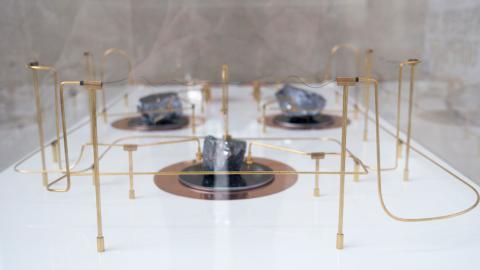
Si (1-bit computer)
Signal as a Medium for Representing Digital Materialities
The Si (1-bit computer) project, created by Raphaëlle Kerbrat at the Paris École des Arts Décoratifs as part of her PhD thesis entitled, ‘Le poids des données, paradoxes matériels et sensibles du numérique’ (‘The weight of data, material and sensitive paradoxes of digital technology’), offers to make the physical imprint of a computational process discernible. Si (1-bit computer) is based on the physical decomposition of a binary system and draws on the manipulation of silicon, a semiconductor material used to make transistors, which are at the core of digital electronics. Si (1-bit computer) operates by enlarging physical and temporal scales, stretching a logical operation over several seconds and amplifying the initial size of the components. Matter is a central element in this project, which reveals the workings of our digital devices in a way that is at once archaic and poetic.
-
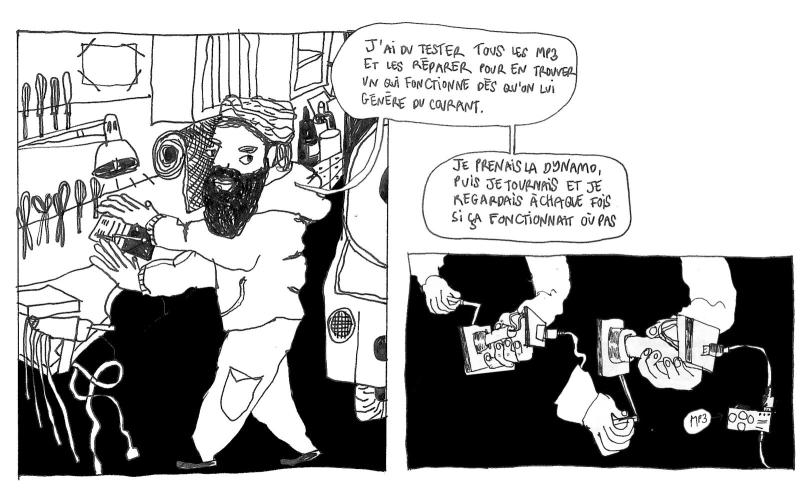
Learning from Waste
Repairing, Reusing, and Diverting to Regain Control of Digital Equipment
This contribution looks at digital technology through the prism of waste and waste’s potential. The contribution is based on a case study from an ethnographic survey that Bloch has been conducting with Thibault Le Page and Nicolas Nova since 2022 at HEAD – Genève (HES-SO). One of the survey’s aims is to highlight the various forms of reappropriation and transformation that can be achieved with elements from digital equipment such as smartphones, computers, headphones, connected objects, etc., or with their components.
-
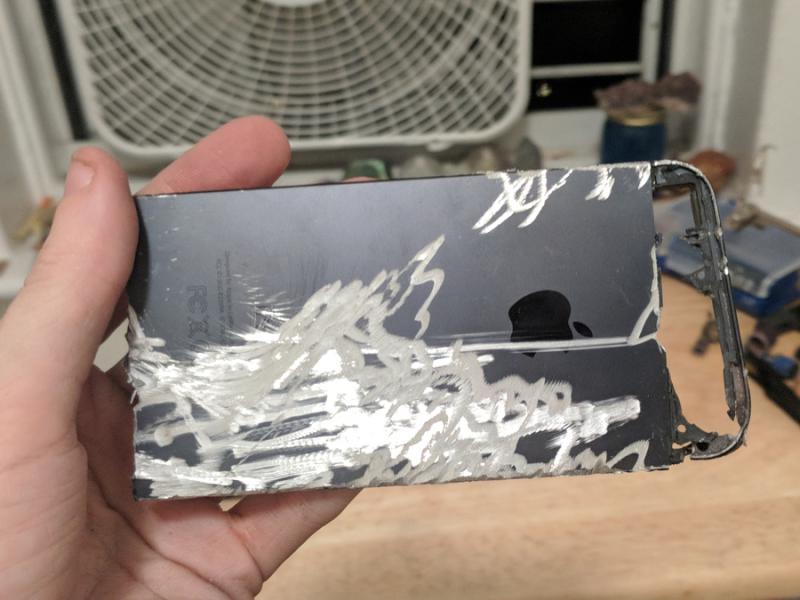
From Cloud Aesthetics to Alternative Circuits and Assemblages
Bridging Theory, Fieldwork and Design to Nuance our Computational Tropes and Narratives
From the seminal “cloud” metaphor to green buttons and blue thumbs-up emojis, our interactions and dominant discourses around the digital embody a specific capitalistic agenda: the one of technology as a commodity fetishism we simply consume and later trash without understanding how it operates. In addition, these interfaces and metaphors hide the complex human, material and environmental assemblages enabling, operating and optimising our digital processes. Drawing from this context, the article is intended for artists and interaction designers interested to critically engage with technology and their “blackboxes”. It argues for the importance of bridging design with social sciences and ethnographic fieldwork. Through this lens, it posits that designers can, first, better understand the lifecycle and infrastructures of our electronic objects as well as, second, create artefacts that nuance and critique these dominant narratives and beliefs around digital “immateriality”.
-
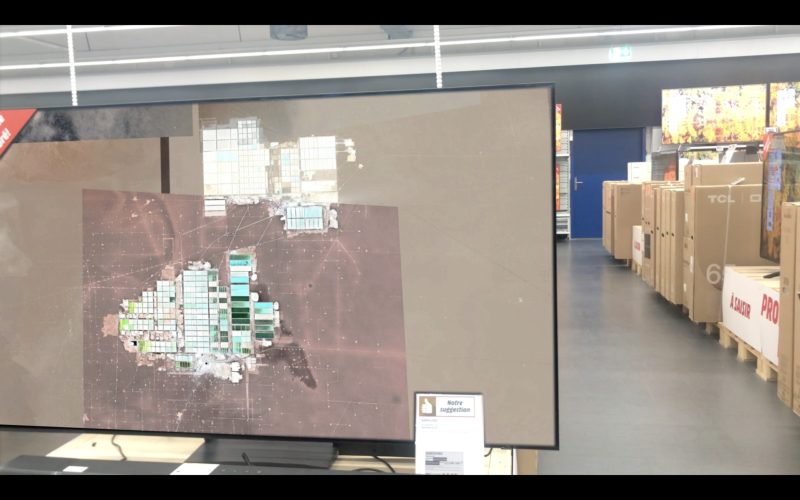
Bedrocks for Digital Systems
This video by Mabe Bethônico, edited in collaboration with Victor Galvão, who also created its sound, derives from a text constructed using a cut-up technique on an article by Lee Mackinnon titled "Technologies of Romance: Mineralogy: a digital account," published in the Science Museum Group Journal, 2019. The textual parts in the video are elusive, rhythmically relating to the work environment of extractive sites from which the main minerals used in our electronic devices are sourced, as well as to the large sales floors of digital appliances. Images were taken in Minas Gerais and Switzerland by Mabe Bethônico, but the video also includes content from her project "Museum of Public Concerns," a visual archive compiled from multiple sources and contributors. These include a firefighter’s report, evaluating the Brumadinho disaster, images made by members of the Maxakali community from Minas Gerais, and photos made by inspectors from the Brazilian Ministry of Labour and Employment, among others. The narrative invites to reflect on the environmental and social ramifications of technological dependencies, reminding of the costs of convenience and innovation.
-
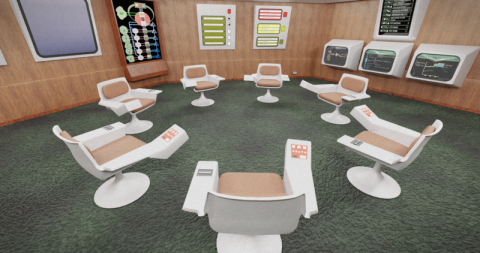
The Milieu is the Message.
Digital Materialities and the New Theatre of Visual Operations
Today there is a plane on which the battle of images is raging, an infra-iconic plane on which the fate of images and of those who look at them – but also of the things that look at them, non-human entities of artificial vision – is largely determined. This is the plane of computational technological infrastructures, and the norms that determine their operation: the plane of the coding of reality into information, of the digitisation and storage of data. It is in technology – the dual place of both material infrastructure and computer code – that the fate of our freedoms and our imaginations, and that of images with them, hangs in the balance.
-
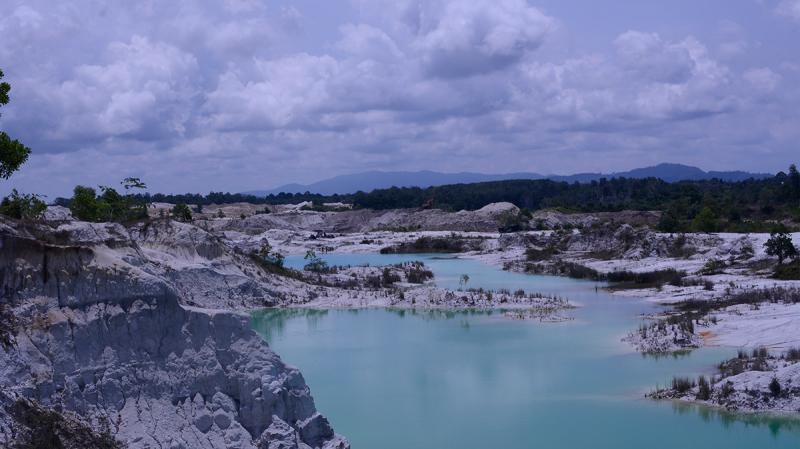
Kasiterit as a Speculative Guide to Bangka
One-third of the global tin supply is extracted from Bangka island in Indonesia. Tin is the most impacted mineral by the upcoming technological development, which includes artificial intelligence and technology for renewable energy. Natasha is a solar-powered A.I. voice, and in Kasiterit, a short film by Riar Rizaldi, they trace their genealogy and the truth of their origin; from the capital liquidity to labour dynamic. With their feminised voice—as quite often performed by other AI-powered voice assistants produced by tech-companies, Natasha narrates the emergence of tin in Bangka island and their existence from the perspective of tropical anthropology of nature, value theory, philosophy of time, genetic mutation, geopolitics, and automation. Kasiterit is available to watch on Issue's website from mid-July to mid-August 2024. It is accompanied by an excerpt from Rizaldi's related PhD research.
-
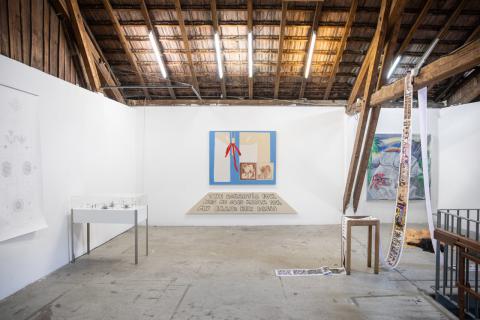
AIAIA Sweatshop
The AIAIA Sweatshop exhibition (held from May 17 to June 21, 2024 at the artist-run space àDuplex, in Geneva) explored through the means of art, behind the media resonances of the acronym IA/ AI, some paradoxes of the material dimensions of artificial intelligence. In a series of "rooms", AI's relationships with history, machines, the body, identities and technopolitics were put into context and questioned, far from the ethereal, fascinating or frightening images of a new technological power as immaterial as inexorable. This exhibition was born from a collaboration between the Digital Humanities seminar of Béatrice Joyeux-Prunel at the University of Geneva and the Work.Master seminar of David Zerbib at HEAD.
-
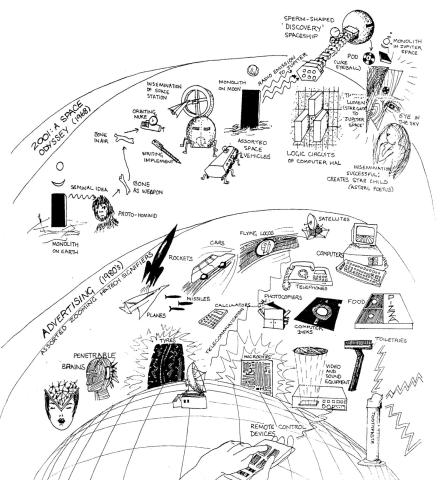
The Future is Unmanned
Why does the future dream of being mapped out, gridded, and automatically piloted by the culture of high technology? How does technology manage to present itself as a marker of civilisation, affirming the supremacy of certain bodies over others, and reinforcing a symbolic and social order that separates and immunises human beings from waste, the gremlins, aliens, the inhumans and other undesirable bodies deriving from the 'civilised human'? Over the last 40 years, voices have been raised to question the great narrative of Western technology. These voices ask: ‘Who counts as an agent of technology, as a human agent, and consequently as an agent of the future?’ It is from these areas of contestation, whose return has become impossible to ignore today, that this article seeks to decipher the dream of safe, clean, objective, and rational techno-governance, which has turned out to be anti-terrestrial, excremental, aberrant, and sexually aggressive.
-
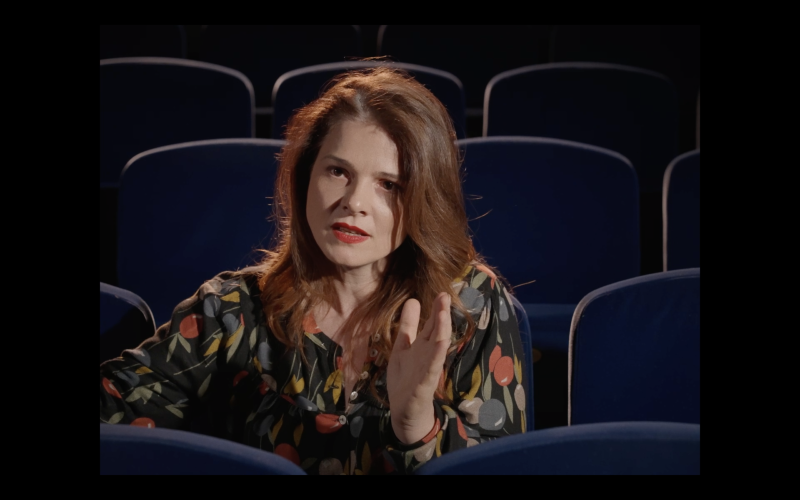
"Supporting those who’ll make the history of cinema"
Interview with Anita Hugi by Julie Enckell
Julie Enckell sat in a cinema with Anita Hugi, Head of the Film Department at HEAD – Genève since September 2023, to talk about Hugi’s journey as a cinephile, her interest in history, and her many professional roles as a movie director, programmer, festival director and professor. During the discussion, the keystrokes of Hugi’s commitment emerge: from her long-term work raising the profile of Swiss women artists and filmmakers, to her reflections on the forms of audience participation, to her defence of a new generation of Swiss filmmakers who are blazing new and exciting trails.
-
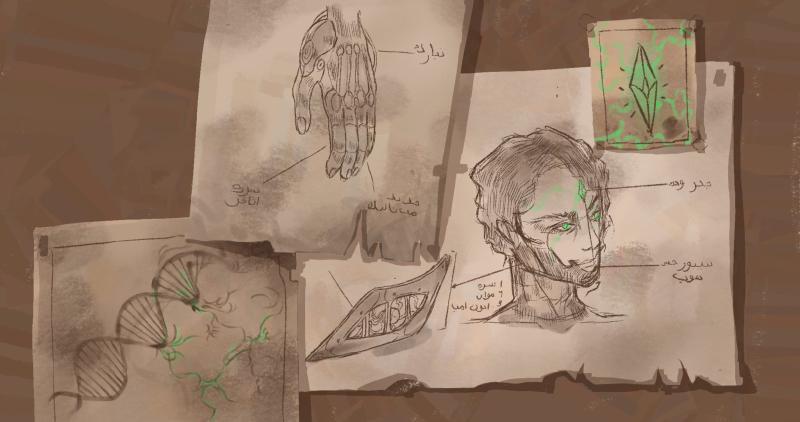
Mawtini
Cybernetic Hand-to-Heart
Tabarak Allah Abbas graduated from the HEAD – Genève Film Department in 2023 with the short film Mawtini, which has just won over its first viewers. This animated gem and the first Swiss shōnen has won several awards, including the Red Cross Art Humanité Prize and the Opening Scenes Award at the latest edition of Visions du Réel documentary festival. A fusion of Japanese animation and the traditional world of Iraq, Mawtini plunges us into the heart of Baghdad in the 1990s, in a reality where human beings are being invaded by killer robots. Against this backdrop of war, a young couple and their first-born child decide to adopt the characteristics of these cold, efficient machines in order to leave the city.
-
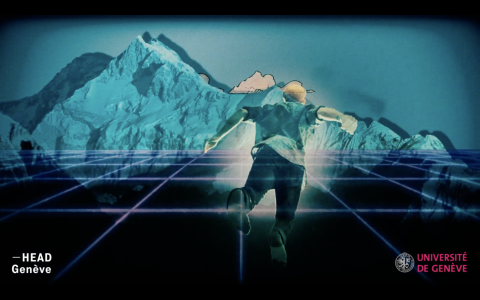
Voyage Voyage, music as a vehicle
Voyage Voyage (Desireless, 1987) functions performatively: it's less about convincing the listeners to explore the world one day than about allowing them to take a virtual journey with the singer, one that lasts the duration of the song. -
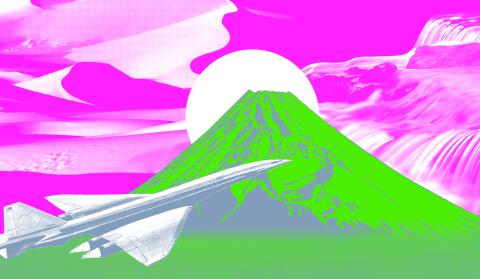
Dossier #23
Enchanted Geography
Bienvenue à bord de la géographie enchantée !
Parce que sans chansons pas de lieux, pas d’histoires, pas de révolutions, pas de souvenirs ni love story… Bref, sans elles le monde ne serait pas tel qu’il est.
Jacques Demy disait qu’il faisait des films enchantés comme d’autres font des films en couleurs. Ses deux comédies musicales, Les Parapluies de Cherbourg (1964) et Les Demoiselles de Rochefort (1967), ont enchanté le public, mais aussi les deux villes. Dans l’imaginaire géographique, elles sont désormais indissociables de l’univers de Jacques Demy, des mélodies de son compositeur fétiche Michel Legrand et des années 1960. Plus récemment, Damien Chazelle – largement inspiré par l’œuvre du cinéaste et du musicien français – réenchante Los Angeles avec les chansons de La La Land (2017).
Géographie enchantée ? On sait bien que les romans, les tableaux et les films marquent les lieux. Mais on n’a guère été attentif aux chansons. Elles traduisent l’air du temps, rythment nos existences et participent des récits mémoriels. On pense moins à leur géographie. Pourtant que seraient Paris sans Édith Piaf, Lisbonne sans le Fado, Liverpool sans les Beatles ? Que seraient nos expériences des lieux sans les chansons qui souvent les accompagnent ? On ne compte pas les endroits qu’une chanson a rendus populaires et imprégnés de sens. Les chansons, qu’elles portent sur un lieu réel (une ville, un quartier, un pays…), imaginaire (le paradis), ou un type de lieu (l’île, le lac, la rue…) participent à l’enchantement du monde en le chargeant d’émotions. N’en déplaise à Max Weber pour qui la modernité procède d’un "désenchantement du monde[note]Max Weber, L'éthique protestante et l'esprit du capitalisme, Presses électroniques de France, 2013 [version originale allemande : 1905].[/note] ».
Le rapport entre chansons et lieux ainsi que leurs effets sur le monde est au cœur de la géographie enchantée. Le projet est né au moment où je travaillais pour le département de géographie de l’Université de Genève à la conception d’expositions[note]Expositions « Frontières en tous genres » (2017) et « Quartier réservé » (2022).[/note] et à la réalisation de projets de valorisation scientifique destinés au grand public. Aux côtés du Prof. Jean-François Staszak avec qui j’ai conçu et piloté le projet, nous avions travaillé à différents degrés et dans une perspective de géographie culturelle sur le cinéma, la photographie, la peinture : il nous manquait la musique. L’attention à la culture populaire nécessite de s’intéresser non seulement aux œuvres canonisées par l’histoire de l’art, mais aussi à celles qui n’ont peut-être pas leur place dans les musées, mais en occupent une – majeure – dans nos vies. La musique et les chansons, très peu étudiées en tant que telles par les sciences sociales, sont en la matière particulièrement importantes, notamment parce qu’elles permettent de développer une approche attentive aux émotions, aux sensations et aux ambiances.
C’est ainsi que 2020, nous embarquons pour une géographie enchantée, quelques mois à peine avant l’arrivée du Covid en Europe. Curieuse coïncidence, nous cherchions peut-être déjà un moyen de réenchanter un peu le monde à notre manière.
Aujourd’hui la géographie enchantée c’est :
· Trois livres collectifs qui examinent le rapport entre chansons populaires et lieux : Monde enchanté, chansons et imaginaires géographiques ; Villes enchantées, chansons et imaginaires urbains ; Voyage enchanté, chansons et imaginaires du voyage (Éditions Georg, 2021, 2022, 2024, sous la direction de R. Pieroni & J.-F. Staszak) ; ouvrages qui s’accompagnent d’une série de dix clips vidéo (réalisation Mathieu Epiney) · Deux expositions : Amsterdam, Bamako, Genève…Mais qui connaît la chanson ? (Bains des Pâquis, Genève, 2024) ; Voyage enchanté, chansons et imaginaires géographiques (Université de Genève, Salle d’exposition, 2024) · Un jeu en ligne (disponible dès le 16 mai 2024) — geoenchantee.ch — créé en collaboration avec le département de Communication visuelle de la HEAD — Genève (HES-SO)
L’ensemble est le fruit de collaborations vertueuses qui se sont renforcées avec mon arrivée à la HEAD — Genève. J’en profite ainsi pour remercier chaleureusement Julie Enckell et Faye Corthésy qui m’ont proposé la conception de ce dossier, Anthony Masure qui accueille le projet au sein de l’Institut de recherche en art et design de la HEAD (IRAD), Dimitri Broquard, responsable du département de Communication visuelle, ainsi que Juan Gomez et Linda Forestieri qui ont permis la réalisation du jeu en ligne.
Ces différents projets forment aujourd’hui un véhicule pour voyager virtuellement par les chansons populaires et un outil pour penser de façon critique nos manières d’appréhender le monde par la musique. Ceci, car l’enchantement du monde par les chansons s’appuie dans certains cas sur des imaginaires toxiques qu’il s’agit de mettre à nu. On pense notamment à la chanson coloniale (La Petite Tonkinoise, interprétée notamment pas Joséphine Baker) ou plus récemment à Africa (Rose Laurens) où l’Afrique devient le lieu de tous les possibles sexuels, qui ensorcellerait et ferait perdre la raison.
Certains lieux sont créés de toute pièce pour enchanter. Disneyland, par exemple, est décrit comme un ensemble de dispositifs d’enchantement de l’extraordinaire, car ceux-ci sont hors du quotidien et font appel à des spécialistes ainsi qu’à des machines[note]Yves Winkin, « L’enchantement : dispositif et disposition. Rétrospective et prospective », dans Rachel Brahy (dir.), L’enchantement qui revient, Paris, Hermann, 2023, pp. 15-35. https://doi.org/10.3917/herm.brahy.2023.01.0015[/note]. Ces dispositifs ne sont pas le sujet de la géographie enchantée qui s’intéresse aux lieux plutôt ordinaires (réels ou fictifs) et qui font l’objet d’un processus d’enchantement par la chanson. Cet enchantement repose sur des imaginaires géographiques et se fait dans bien des cas pour le meilleur, mais aussi pour le pire quand ils sont fondés sur des stéréotypes racistes ou/et sexistes que les chansons participent à véhiculer. L’objectif n’est pas de faire le procès des chansons populaires, mais d’en décrypter les ressorts pour pouvoir continuer à danser et à les chanter en étant mieux informé-es à leur sujet.
Ce dossier fait appel à différentes personnes ayant contribué chacune à leur manière à la démarche. Jean-François Staszak, nous embarque dans une analyse critique de Voyage, Voyage (Desireless, 1987) au prisme d’une géographie culturelle attentive aux enjeux postcoloniaux et aux questions d’exotisme. Le voyage se poursuit avec le texte de Laura Saysanavongphet à propos de La Terre est Ronde (Orelsan, 2015). L’auteure met en perspective la chanson avec ses recherches doctorales qui portent sur les premiers tours du monde touristiques de la fin du XIXème. Il y est question de tradition littéraire et touristique et de (dés)enchantement géographique du monde. Puis, on parle scène musicale genevoise et pochettes de vinyles avec Quentin Pilet (Bongo Joe Records) dans un article conduit sous forme d’entretien. Le dernier texte, de Nicolas Leresche, porte enfin sur les enjeux muséographiques des expositions consacrées à la musique. Il revient sur la démarche d’exposition du projet Géographie enchantée pour expliciter les ressorts d’une scénographie qu’on ose ici qualifier de post-représentationnelle. Ceci pour qualifier une démarche guidée par la volonté de conserver au centre de l’expérience du public les émotions (géographiques) suscitées par les chansons.
Les chansons composent la bande-son de nos vies. Elles se superposent aux petits et aux grands moments. Elles se glissent dans le quotidien qu’elles enchantent ou qu’elles teintent de leur mélancolie. Les « chansons géographiques » donnent sens aux mondes que nous habitons et vous ferez peut-être le constat critique et douloureux que certaines d’entre elles que vous adorez vous ont trompé-e. Mais on vous le promet : vous ressortirez en chantant.
Il ne me reste plus qu’à vous souhaiter un agréable voyage,
Raphaël Pieroni
-
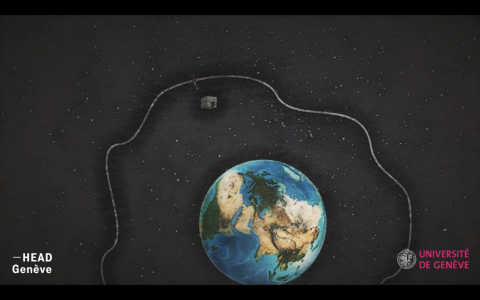
Poetics of the Round-the-World Trip
A Reflection on the Footsteps of Orelsan
The author reflects on the 'poetics' of the round-the-world trip, showing that Orelsan's La Terre est ronde (2011) is part of a long tradition of both literature and tourism which produces a geographical enchantment of the world.
-
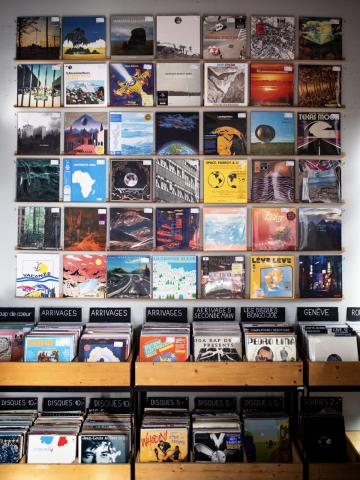
Enchanted journey with Bongo Joe Records
An interview with Quentin Pilet (Bongo Joe Records) by Raphaël Pieroni
Raphaël Pieroni of HEAD – Genève discusses the many links between music and geography with Quentin Pilet, of Bongo Joe Records.
-
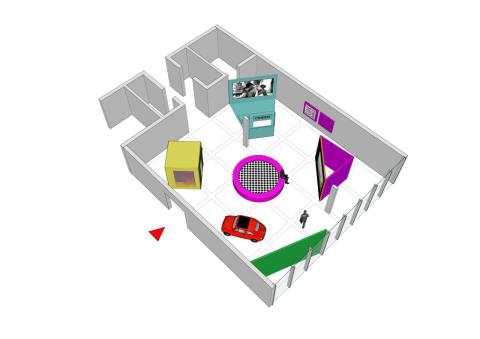
Singing in the museum. Exhibiting the imaginary world of geographical songs
Exhibiting popular music raises methodological and museographic questions, which the author explores through the example of the exhibition, "Voyage enchanté. Chansons et imaginaires géographiques" ("Enchanted Journey. Songs and Geographical Imagination") presented in the University of Geneva’s exhibition room in 2024. -
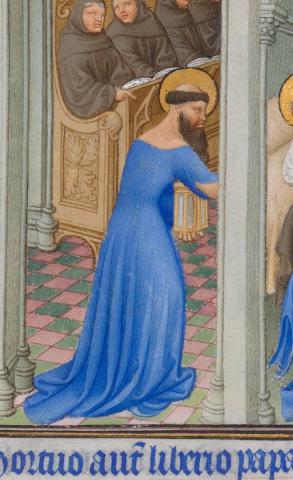
The Long History of Trans Identities
We have heard enough from the people who complain about an "epidemic of transgenders." This harmful term compares being trans with a contagious illness and ignores an entire swath of history. The controversies provoked by such expressions reveal, through their omissions, that we know nothing, or almost nothing, about trans existence prior to the very recent past. It has been made invisible. The search for the traces of those who have lived in the margins, beyond or outside of the gender norms of their time, is an essential undertaking not only for trans people, but also for the historicization of normative gender and sexuality, notably the woman/man binary, in the interest of reconsidering their presumed naturalness. Let us dive into the heart of the Middle Ages, in search of those who have long been experimenting with gender. -
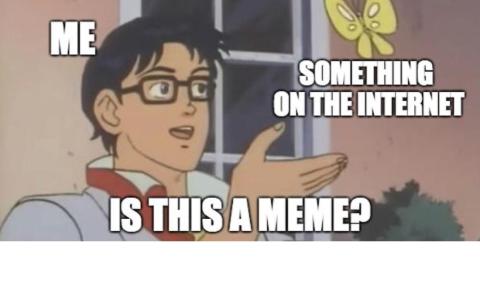
Memes and Image Analysis
This article describes the teaching on memes as part of the Image Analysis course for first-year students of the Bachelor's degree in Visual Communication.
-

Dossier #22
Playing with Stories that Matter
After a first series of talks focused on the video game industry in Switzerland taking place at HEAD – Geneva in March 2022, the symposium Playing with Stories that Matter: How Narration Drives Innovation in Game Design aimed to delve into the ways in which narrative propels innovation in game design. ISSUE publishes the video recordings of the various talks. By employing narratives, tensions, and gameplay, games offer us a lens to comprehend the complexities of our contemporary societies. To thoroughly explore this intriguing theme, the symposium was structured around various chapters, each delving into distinct aspects of the role of narrative in video games. The symposium was held on October 12, 2023 and was organized by Alexia Mathieu, head of the Master Media Design, with the help of Delphine Jeanneret, lecturer in the Cinema department, and the valuable support of the Hasler Foundation.
-

The Influence of Video Games on Cinema
Caroline Poggi and Jonathan Vinel discuss the influence of video games on their filmmaking practice. -
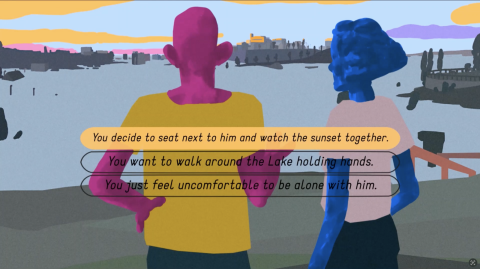
Telling Stories with Robots
A short overview of projects using artificial intelligence to tell stories in unexpected ways. -
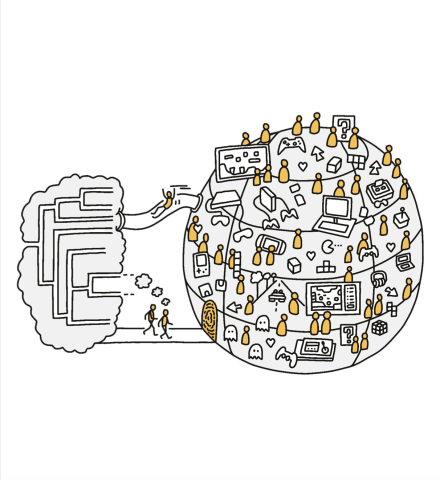
Play-to-Learn
Anthony Masure and Guillaume Helleu present their research project that focuses on using video game platforms and cultures to explore the humanities and social sciences. -
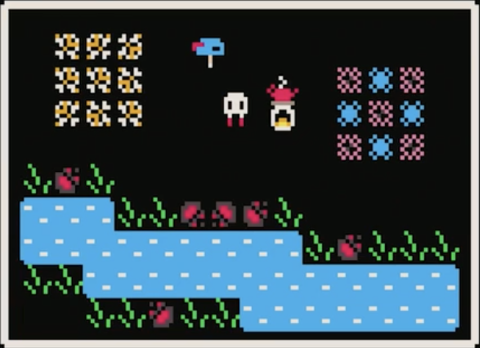
Why Oatmeal is Cheap
A Fundamental Theorem for Designing Procedural
A practical demonstration of the promises and pitfalls of procedurally generated storytelling.
-

The Off-Screen and Its Double
Is it possible to make a documentary film shot entirely within the graphics engine of a video game? How can we tell the story of virtual encounters and the emotions and situations they provoke? -
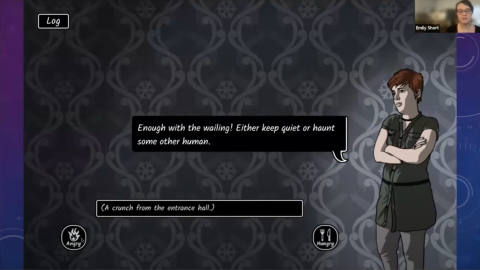
Interactive Design as Creative Discipline
This talk gives examples and insights from an early innovator in the field of procedural and interactive storytelling. -
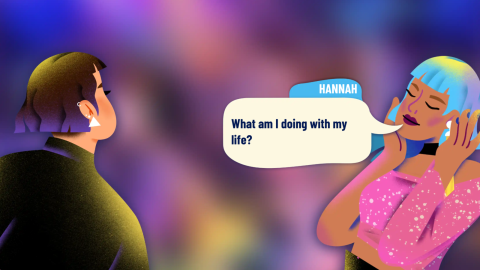
The Purpose of Making Games
Léa Schönfelder discusses how to create a small, female-led game studio that builds games with a strong independent perspective. -
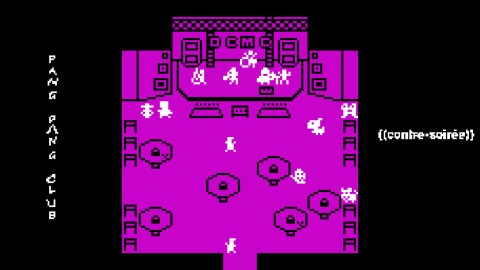
Making Stories Together
In her talk, Leslie Astier discusses how to leverage community and collective care to build new types of interactive stories. -
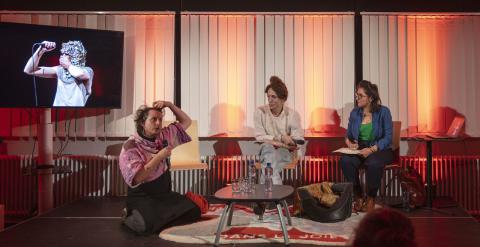
Habits de scène, vêtements de vie
A dialogue with choreographer and performer François Chaignaud, led by philosopher and choreographer Emma Bigé and art historian Magali Le Mens, co-organized by HEAD – Geneva and the Centre Maurice Chalumeau en sciences des sexualités of the University of Geneva (CMCSS), December 11, 2023 -
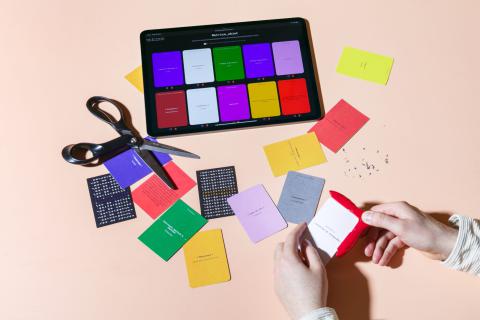
Performative Card Games
Interviews with DD Dorvillier and Douglas E. Stanley
As part of their cross-disciplinary research into design and the performing arts, research duo Isis Fahmy and Benoît Renaudin sat down with the dancer and choreographer DD Dorvillier and the artist and designer Douglas E. Stanley to talk about their creative practice around cards, games, and performance.
-
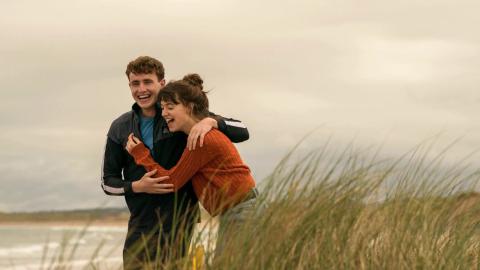
Dossier #21
Contemporary Mini-Series or the Powers of the In-Between
The production of mini-series continues to grow, initiated by both television channels and streaming platforms, and increasingly supported by actresses and actors from the film industry. Miniseries such as Top of the Lake (2013), P'tit quinquin (2014), Chernobyl (2019), Small Axe (2020) or, even more recently, We Own This City (2022) are drawing a vast aesthetic constellation, induced by very varied production strategies. The French notion of mini-series is very broad; in the Anglo-Saxon world, it is broken down into sub-categories with porous borders: miniseries, limited series, limited-run series in the strict television field, anthology mini-series. The commonly accepted definition of miniseries is based mainly on the self-contained narrative and reduces both the structure and the modalities of exploitation to a limited number of episodes (generally less than 12), to be broadcast - in the case of limited-run TV series - on consecutive days and over a short period. The aim of this conference is to question the aesthetic powers of contemporary mini-series, produced since the 2000s, to analyse the singular seriality and the modes of production that are related to them, to address their specific modes of broadcasting. What principles of seriality are at work in mini-series? Do the limited number of episodes and the strategies of time-limited broadcasting imply different narrative forms from those of long-running series? How are the writing of spaces and the evolutionary dynamics of characters constrained by this "limited seriality"? Mini-series are often part of smaller economies and circumscribed temporalities. To what extent can they constitute creative spaces conducive to aesthetic inventions, to the deployment of singular filmic forms, sometimes implemented by filmmakers coming from feature films? How do certain mini-series rely on journalistic or sociological observations to create narratives of limited seriality that plunge into the social workings and cultural dynamics of our time? These questions will be examined in the light of the two other standard genres: series (in the literal sense of the term), of which mini-series are a reduced and limited modality, and feature films, of which they constitute an extension with serialities. Cover image: Normal People (BBC 3, Hulu, 2020)
-
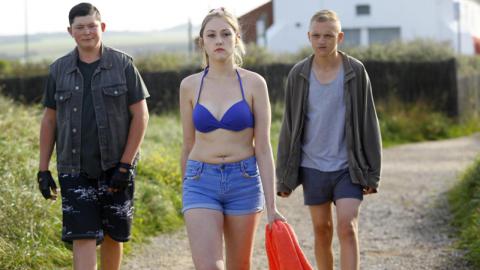
The writing process of French mini-series
This presentation focuses on the making of French mini-series. Why create a mini-series rather than a series or a feature film? Is it the subject that dictates the format? Or is it rather production and financial strategies that underlie such a choice? How do you write a mini-series? Is it also written by several people? Is orality as present in the creative process as it is in a series? Using primary sources (script documents, interviews, etc.), the aim is to conduct a pragmatic analysis that will allow us to better define the writing process of a mini-series and to understand the reasons for it, but also to propose a socio-economic analysis that questions the choice of such a format. -
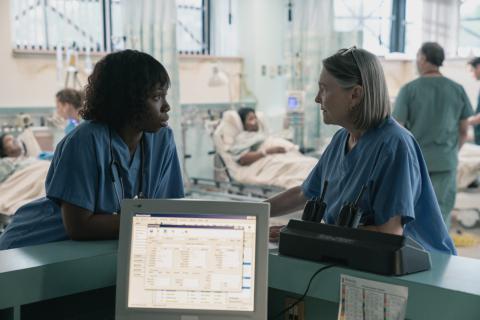
The mini-series "Five Days at Memorial" versus the long-running medical series: another ethic of disaster
The mini-series follows the caregivers at Memorial Hospital (New Orleans) during and after Hurricane Katrina. The mini-series borrows from disaster films and long-running medical series. Ethically, the miniseries deploys a levelling power (since all the characters are transient for a limited time) but prevents a thorough exploration of the systemic dysfunctions and discriminations that led to the disaster. Between feature film and series, fiction and documentary, doesn't Five Days at Memorial show the mini-series' powerlessness to act on the world? -
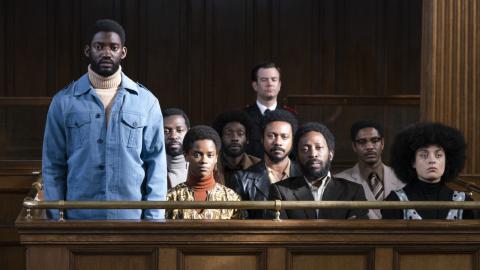
"Small Axe" by Steve McQueen : towards a limited seriality
In 2020, British filmmaker Steve McQueen brought together under the name Small Axe a collection of five autonomous films that have as common elements a place (London, Brixton district), a community under construction (from Jamaican immigration), an era (the 70s-80s), the rise of a musical genre (reggae), and above all, the omnipresence of systemic racism against this community. The time spans of the underlying stories are also diverse, ranging from a single night to a period of 10 years. Although this anthology mini-series was produced for TV channels, some of the films that make it up have been shown separately (New York Film Festival 2020, Cannes Film Festival 2020). What kind of seriality, diffuse and minimal, does the Small Axe mini-series offer? -
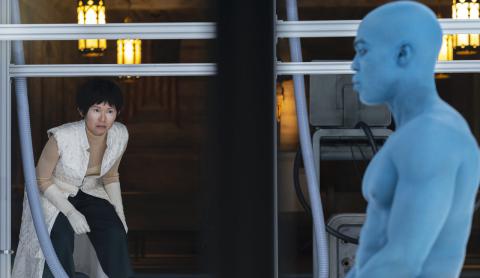
Watching "Watchmen", or the transmediadaptation of contemporary North America
"Watching Watchmen" (HBO, 2019) intends to analyze how Damon Lindelof’s limited TV series could be considered as an example of successful transmediadaptation, acting as a bridge to a beloved comic book while creating a narrative entity that completely holds on its own. As the series offers a continuation of the original comic book, thus creating a transmedia narrative experience for the readers/viewers, it also retroactively updates some of the original content that was intentionally left uncertain in the original comic and enables the series to shape itself into a brand-new story arc. In that space of negotiation between the original narrative and the series, adaptation truly takes shape as the writers’ room adapted what made Watchmen relevant during its original release to the ills of contemporary America. -
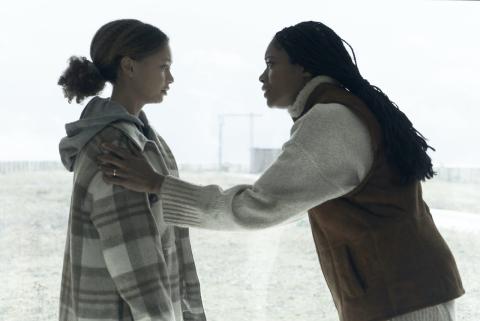
"The Third Day", renewing the serial space
The Third Day is a mini-series consisting of six episodes. A seventh episode, Autumn, is at the junction between the two parts. It was filmed live on 3 October 2020 during a continuous twelve-hour period in the form of a single sequence shot. The episode was broadcast via Facebook Live. The present contribution aims to interrogate the formal inventiveness of Autumn. How was this experiment in audiovisual hybridisation made possible in the context of contemporary television formats? How does it fit into the processes of participatory online reading? In what way does this episode renew questions about how to film the space of fiction? -
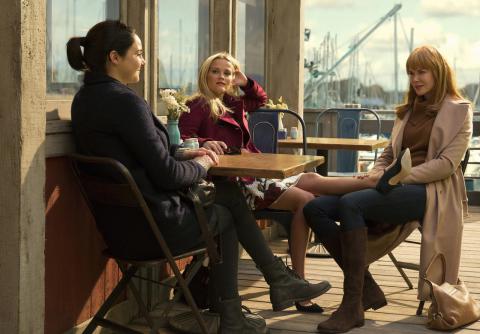
The Star as Author
Nicole Kidman and the Mini-Series
This talk proposes an exploration of the corpus of mini-series "by" Nicole Kidman, i.e. that she produces and/or interprets: Big Little Lies (2017-2019), The Undoing (2020), Nine Perfect Strangers (2021)... The aim is to analyse the functions of the mini-series for the star (a prestige production which is an alternative to the feature film, and which allows her to reposition herself as an author), taking into account the economic and formal specificities which distinguish these astonishing star vehicles which bear the “Kidman brand“.
-

Power of the in-between, a standard of the Japanese series
The notion of mini-series appears in Japan as the standard format of television dramas. Mostly composed of ten episodes, the series are closed narratives where the initial plot finds its denouement in the final episode, without any possible opening and therefore without continuation. Based on the series Dragon Zakura (ドラゴン桜, 2005) and Kekkon dekinai Otoko (結婚できない男, The Man Who Couldn't Get Married, 2006) I wish to discuss the structural and aesthetic modalities of Japanese dramas, their evolution over time and the link between dramas and cinema threads. -

Normal People: linkings and unlinkings
From the very first sequence of Normal People, the dynamic of linking and unlinking between Marianne and Connell, which constitutes the narrative substance of the series, structures the mise-en-scène: in a corridor of their high school, Marianne and Connell share the same space (linking), but don't speak to each other (unlinking), while glancing at each other furtively, each attracted and disturbed by the presence of the other (linking), yet feigning indifference (unlinking). This is how their love unfolds over the four years of their lives the series covers, forming the fabric of a sentimental chronicle made up of magnetic attraction and immeasurable desire, wounds, disappointments, and heart-rending break-ups. Linkings and unlinkings seems to represent the matrix behind just about any word Marianne and Connell utter and the most trivial of their behaviour, as well as the most sublime or the most disgraceful of their actions. The series' aesthetic choices also reflect this incessant interplay of linkings and unlinkings. However, linkings and unlinkings will primarily be considered through the format of the mini-series. After all, isn't the brevity of the episodes, with their elliptical writing and dilated temporality, a way of making the chaotic sequence of these linkings and unlinkings more palpable?
-

From the Big Screen to the Little Screen
Converting Feature Films into Mini-Series
This talk examines the history and practice of converting feature films into mini-series, which has recently been revived by various streaming platforms as a way of boosting ratings and generating more content. The talk analyzes the effects of this practice by comparing different versions of several representative examples, and it primarily focuses on how the process of re-editing generates a new narrative structure and a more dispersed narrative focus that alters our previous understanding of the films under discussion.
-
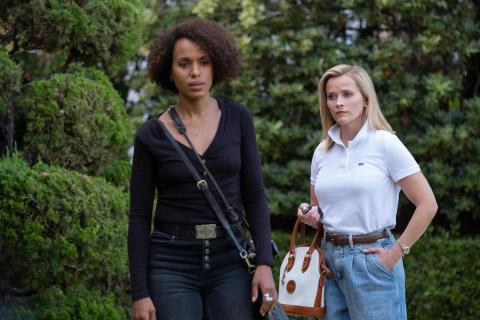
From book club to mini-series, the strategy of Reese Witherspoon
In this paper, we analyze the mode of production and broadcasting of the mini-series adapted from novels and produced by the production companies of actress and producer Reese Witherspoon, Pacific Standard and Hello Sunshine. In particular, we look at the link between Reese's Book Club and the miniseries Big Littles Lies(2017 and 2019) and Little Fire Everywhere (2020). -
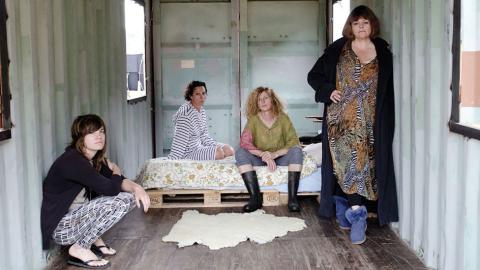
Top of the Lake: Auteuristic Mini-Series?
Serial practice often involves a reception that focuses on suspense. But Top of the Lake particularises its treatment of suspense by means of slowdowns in the narrative, constituting a brake on the progression of the plot. These slowdowns are all the more noticeable in a series with a limited duration, and we will question the way in which they thwart the illusion of a narrative primarily centred on the fabula. We will then address the question of serial aesthetics. Top of the Lake recursively returns to sequences that concentrate the mystery in the plot, and these returns determine specific effects on the viewer.
-
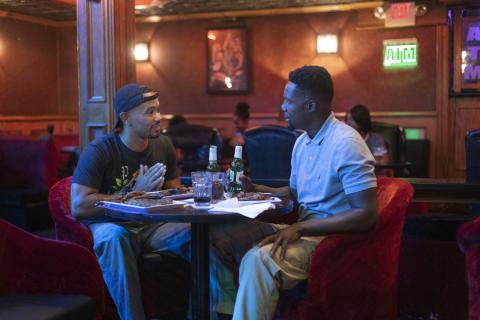
We Own This City, a coda to The Wire
With We Own This City (2022), David Simon returns to his favourite city, Baltimore. Based on Justin Fenton's barely fictionalised investigation, he offers a mini-series that is as dry in its narrative as it is implacable in its indictment of the violence perpetrated by the BPD (Baltimore Police Department). What interests us here is the transition from the long time frame of The Wire's five seasons to the short time frame of We Own This City. What does this mean in terms of narrative and focus? What rewriting of Justin Fenton's investigation did this require? What temporality, particularly fragmented, does this unique season implement? These are the questions we will try to answer in our conference.
-
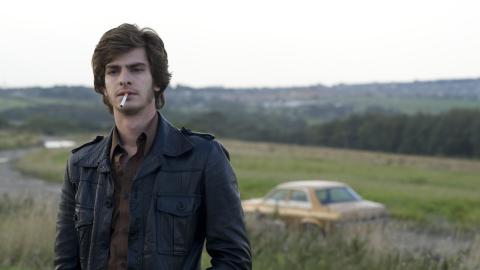
Hybridizations, in-betweens, film-effect and mini-series effect in The Red Riding Trilogy
Produced by Channel 4, The Red Riding Trilogy (2009) is a singular audiovisual object. On the one hand, each part of the trilogy aims to offer the viewer the appearance of autonomy. On the other hand, and in the opposite direction, this fiction in three parts makes use of a narrative connectivity whose aim is to produce, between the different segments, discrete and subtle effects of micro-seriality. The purpose of this paper is to study this singular dialectic between autonomy and interdependence, particularly insofar as it blurs the established boundaries between cinema film and mini-series.
-
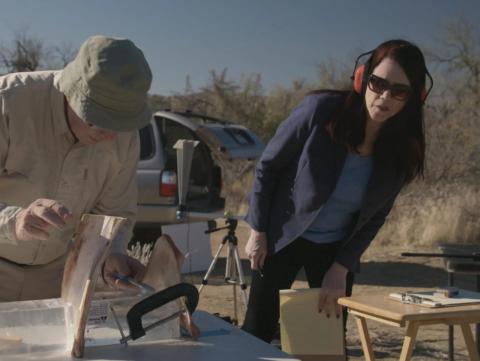
User-Generated Seriality
Transmediating the Boundaries of True Crime Mini-Series
This paper examines true crime documentary mini-series Making a Murderer and The Staircase within the context of their snowball transmedia structure. While their success partly rests upon the spreadable features of streaming platforms, they also owe a great deal to the community activities of dedicated fans on a variety of third-party platforms and social media networks. Consequently, the narrative closure of true crime streaming mini-series and limited-series merely offers an opportunity for further narrative encounters via transmedia user-generated seriality. This amateur transmedia structure prompts reconsideration of forces that undermine the boundaries of the streaming mini-series in the digital age.
-
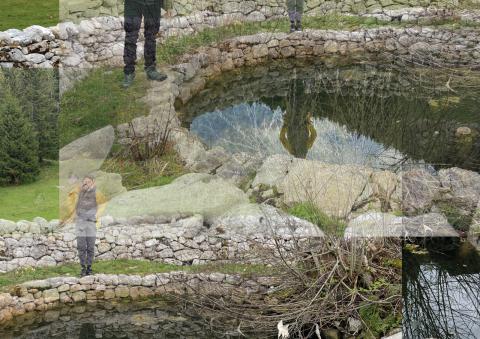
Dossier #20
Ecopedagogies
This issue brings together a series of articles focusing on the notion of ecopedagogy, a term that, since March 2023, we have placed at the heart of a research project entitled Faire éco. Co-créations artistiques en milieu scolaire pour expérimenter une écopédagogie (‘Faire éco. Artistic co-creations in schools as a way to experiment with ecopedagogy’)[note]Research supported by the HES-SO’s Design and Visual Arts Competence Network.[/note]. The notion of ecopedagogy is based on the conviction that, while education alone cannot change the world, it is an essential tool for doing so. Ecopedagogy calls into question individual competition, oppressive relationships, and inequalities – just as the critical pedagogies to which it is moored always have. At the same time, falling within the multiform critique of exploitation opened up by ecofeminism[note]See Isabelle Fremeaux, ‘Après la séparation : utopie et écopédagogie’, in I. Fremeaux, J.P. Berlan, T. Paquot, and J. Jordan (ed.), Des utopies réalisables, Geneva: A·Type éditions, 2013, p. 109-116; Émilie Hache, ‘Pour les écoféministes, destruction de la nature et oppression des femmes sont liées.’, Reporterre. Le quotidien de l’écologie, October 2016, available at https://reporterre.net/Emilie-Hache-Pour-les- ecofeministes-destruction-de-la-nature-et-oppression-des-femmes (last accessed 3.10.2023).[/note], ecopedagogy takes on the myth of perpetual growth, neoliberal globalisation, overproduction, and extractivism. The literature of ecopedagogy shows us that such a pedagogy is intended to be considered in an intersectional way, i.e. by taking into account the different injustices and biases that shape our relationship with the environment[note]Angela Antunes and Moacir Gadotti, ‘Ecopedagogy as the appropriate pedagogy to the Earth charter process’, in P.B. Corcoran (ed.), The Earth Charter in action: Toward a sustainable world, Amsterdam: KIT Publishers, 2005, p. 135-137; Richard Kahn, ‘From Education for Sustainable Development to Ecopedagogy: Sustaining Capitalism or Sustaining Life?’, Green Theory & Praxis: The Journal of Ecopedagogy, vol. 4, no. 1, June 2008, p. 1-14; Richard Kahn, Critical pedagogy, ecoliteracy, & planetary crisis: The ecopedagogy movement, New York: Peter Lang, 2010a; Richard Kahn, ‘Ecopedagogy: An Introduction’, Counterpoints, vol. 359, 2010b, p. 1-33; Ria Ann Dunkley, ‘Learning at eco-attractions: Exploring the bifurcation of nature and culture through experiential environmental education’, The Journal of Environmental Education, vol. 47, no. 3, 2016, p. 213-22; Irène Pereira, ‘L’éco-pédagogie: une conscience planétaire’, Le Courrier, 3.8.2018, available at https://lecourrier.ch/2018/08/03/leco-pedagogie-une-conscience-planetaire/ (last accessed 3.10.2023).[/note]. Consequently, there can be no ecopedagogy without a decolonial approach, which understands the origins of the current ecological disaster with regard to coloniality[note]Malcolm Ferdinand, ‘Pour une écologie décoloniale’, Revue Projet, no. 375, 2020, p. 52-56, available at https ://doi.org/10.3917/pro.375.0052 (last accessed 3.10.2023).[/note].
Ecopedagogy places the question of the human/environment relationship at the heart of the learning experience and seeks to move away from a strictly anthropocentric vision to encourage sustainable changes in our lifestyles. For Antonia Darder, a specialist in critical pedagogies, ‘It is not enough to rely solely on abstract cognitive processes, where only the analysis of words and texts are privileged in the construction of knowledge’, because ‘[s]uch an educational process of estrangement functions to alienate and isolate studentsfrom the natural world around them, from themselves, and one another. This, unwittingly, serves to reinforcean anthropocentric reading of the world, which denies and disregards the wisdom and knowledge outside Western formulations’[note]In Kahn 2010a, op. cit., p. xv.[/note].
To break this deadlock and encourage a global, sustainable, and profound ecological turnaround, we hypothesise that co-creative artistic practices can play a key role in the process of educating on ecology understood in the broadest sense. Because of its transdisciplinary nature and its ability to work on the emotions and the psyche (as shown by Félix Guattari[note]Félix Guattari, Les trois écologies, Paris: Galilée, 1989.[/note]), art can be a privileged space for tackling ecology in all its complexity and inventing new ways of relating to the world[note]Bruno Latour talks about the importance of art in dealing with the feelings of anxiety that ecological changes provoke. See Latour, ‘Avec le réchauffement, le sol se dérobe sous nos pieds à tous’, Libération, 16.3.2018, available at https://www.liberation.fr/debats/2018/03/16/bruno-latour-avec-le-rechauffement-le-sol-se-derobe- sous-nos-pieds-a-tous_1636709/ (last accessed 3.10.2023).[/note]. In this way, the collective production of artistic forms is part of a research process, and feeds into the production of knowledge that incorporates the feelings and imaginations of those involved in such approaches.
The first phase of the Faire éco. Co-créations artistiques en milieu scolaire pour expérimenter une écopédagogie research programme included the organisation of Ecopedagogy, a series of talks, an online public meeting to facilitate discussions without geographical limitations, with seven artists and cultural workers taking part before writing the articles presented here.
Although they do not specifically use the term ‘ecopedagogy’ to talk about their practices, we asked the authors, for their contributions, to think about their practices in relation to this term. What these guests had in common is that they see artistic practice as a process that involves working with others, going beyond material artistic production to give priority to relationships, developing forms that could be described as ecosophical[note]Ibid.[/note] – an ecology combining environmental, social, and mental dimensions.
For the authors, the issues of sustainability or ecology – even when they are not addressed as a theme – are therefore at the heart of the ethical approach they are implementing by encouraging local, collective, and transformative approaches which go beyond the issues of representation. In this way, the authors offer us essential lines of enquiry for rethinking compulsory and higher education courses, including those at art schools, by assessing the climate emergency.
While ecopedagogy has its roots in Latin America (the concept originated in the 1990s, in the writings of Costa Rican Francisco Gutierrez and Brazilian Moacir Gadotti[note]Irène Pereira, op. cit.[/note]), the term is increasingly present in the academic field in other regions, particularly the United States. In Europe, however, its use remains limited. Propositions for taking real action based on these ideas are rare, and it therefore seems difficult to translate ecopedagogy’s theoretical content and the imaginary ideas it conveys into concrete, situated ecopedagogical practices. Although many authors stress the vital role that art can play in encouraging action for the climate, there is little discussion of how this should be done. While we are presented with a proliferation of formats (mediation, creative workshops, etc.) and approaches, the tools for evaluating them in a qualitative way have yet to be conceptualised. One of the aims of the present research is to fill this gap by seeking out and studying concrete examples of ecopedagogical actions involving artists (such as the examples presented here) and by carrying out three artistic co-creation projects between guest artists (three TRANS— Master alumni: Grace Denis, Aurélien Fontanet, and Lavinia Johnson), pupils in school classes, and their teachers[note]In conjunction with the Geneva Department of Education, these initiatives, led by Grace Denis, Lavinia Johnson, and Aurélien Fontanet, will take place throughout the 2023-24 school year.[/note]. At the end of the process, a forum-exhibition will present the co-creations made at LiveInYourHead[note]The exhibition is scheduled for autumn 2024.[/note]. The exhibition will also be conceived as a training ground for any teachers or educators wishing to develop similar practices. microsillons (Marianne Guarino-Huet et Olivier Desvoignes), coordinators, TRANS— Master Cover image: Study trip based on the principles of ecopedagogy, master TRANS–, Saint-Cergue, May 2022.
-
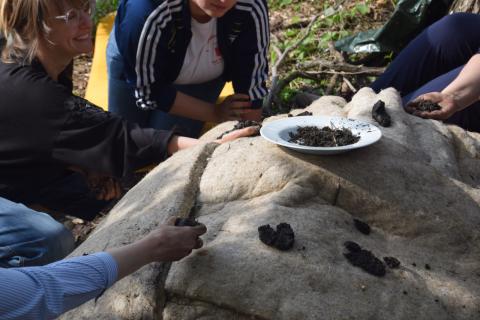
Micropolitical and Holistic Makings of Ecopedagogies
Today’s cognitive capitalism operates on the logic of separationism that demands self-commodification and self-representation: a logic of exteriority that, as we know, is also engraved e.g., by social media. Equally, omnipresent media consumption, spectatorship, observation, by-standing and the outside view are qualities that society today is abundantly saturated with, and that help the efforts of late cognitive and data capitalists’ to construct hyper individualism, separation, and apathy, emotional states that manipulate and alienate subjects from their own social and expressive efforts.
-
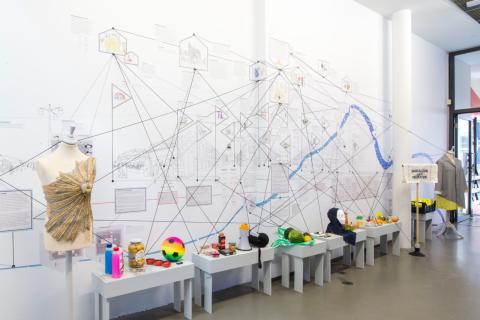
Preparing for the "Not-Yet"
How can we move towards a shared desire of how we would like to live? How do we act in order to better our own life or situation, while also serving a collective understanding? These are questions that need to be addressed in every living environment – within the city as well as beyond it.
-
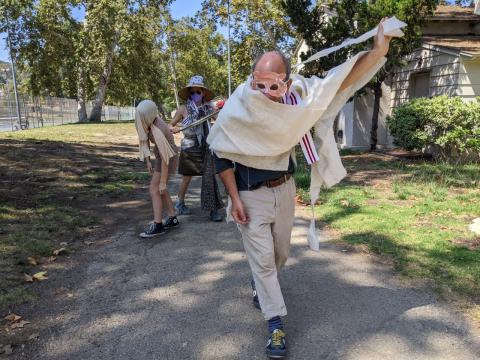
Play in that Void
Eco-pedagogy
I am interested in writing about my performance-based pedagogy in relation to the text-based research that more directly signals its politics. This, in order to highlight important practice-based tensions and signal something about relationships between knowing and teaching in our changing world.
-
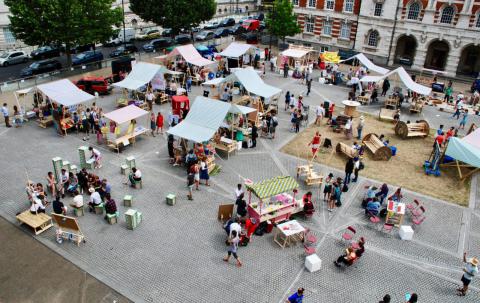
Some Draft Guidelines Towards a Sustainable Sensibility for Creative Practice
These thoughts cohered further to a talk I gave in November 2022 for a series on ecopedagogy hosted by MASTER TRANS– Socially Engaged Artistic Practices (HEAD – Genève). The gap between that presentation and this publication afforded time and space for me to evolve my understanding of a sustainable sensibility for creative practice. In lieu of a conclusion, this text culminates in some draft guidelines selected from a longer list. They represent an affirmation but also an extension of the position I offered in 2022. -

For a Deeply Ecological Art
Or, Ecology Stemming from Art
In the contemporary art world, a professional sector based on the globalised market economy where I worked for over twenty years as a production manager, a curator, and later as a – mostly public – institution director, environmental awareness only started guiding my choices late in my career. I usually prioritised the production, circulation and transmission of artistic projects, and the ecological paradigm only very occasionally interfered with creative and curatorial freedom.
-

The Undiscussed University
Art Practice and Institutional Transformation Towards Ecopedagogy
As an artist working in collaboration, my art practice activated reciprocal actions and responses in public contexts, while working in universities has paid my wages and supported my art practice with research grants. In 2012, to engage with the social-ecological crisis, I brought my art practice into the University of the Arts London (UAL) where I work. By making conceptual interventions, I encountered the separation of academic and artistic discourses and practices from the executive functions of the university.
-

Dehydrated Landscapes
If you are reading this text on a computer screen, it is possible that your eyes are drying out. Prolonged exposure to bright electronic screens makes us blink less and thus reduces lubrication, which can result in a condition known as “dry eye”, causing discomfort and seriously affecting our vision. At the same time that our eye globes dehydrate in front of the screens, it is estimated that about 33% of the terrestrial globe is presently undergoing processes of aridification. Adding to global warming, the most immediate cause of aridification around the world is the inappropriate use of land by conventional livestock and agriculture.
-

What Does an Art School Train For?
Some Singular Alumni Stories
There’s nothing rhetorical about the question in the title of this article. Indeed, only a small minority of the HEAD – Genève’s Visual Arts graduates pursue a career as an artist, with exhibitions in galleries and public institutions. The overwhelming majority of them go for less delineated career paths; some even invent their own professions. In spring 2023, with the aim of better promoting and supporting the richness of their experience, the Visual Arts department invited a number of alumni to recount their trajectories. In their own way, these career paths give expression to the poetry and desire for autonomy the alumni cultivated during their studies. Here are a few extracts, including the stories of a theatre mask-maker, a film-director, and an 'artist-gatherer'.
-
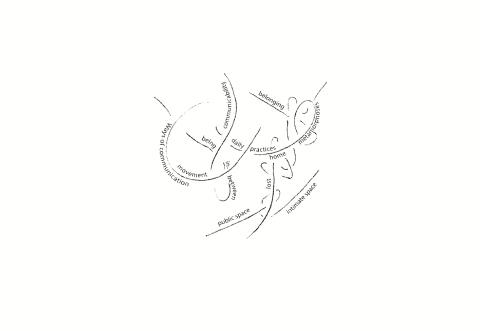
The kaleidoscopic effect
While making us humans the most knowledgeable creatures on Earth, our contemporary modes of communication cut us off from a direct, embodied relationship with our environment. Questioning this anomaly in her Visual Arts Master's thesis, Ani Kocharyan contemplates new, purely physical interactions between things. Taking up Deleuze and Guattari's concept of the body-without-organ, Kocharyan considers a radically inclusive world of communication, without organisation or finality, where diverse desiring bodies form temporary poetic entities and meanings. -
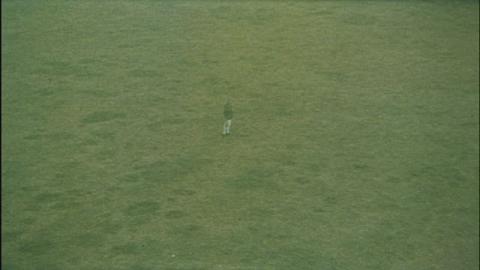
Incarnation of spectres
Interview with Clélia Zernik on Ghosts in Cinema
The seventh art is ‘the art of ghosts’, as Jacques Derrida once said. This is what Clélia Zernik, professor of aesthetics at the Paris Beaux-Arts, demonstrates in her brilliant essay L'attrait du fantôme (2019), co-written with Erik Zernik. According to Zernik, we need both the spectre and the spectral, because they shed fundamental light on the co-presence of the visible and the invisible. Organised this spring for first-year cinema students at the HEAD – Genève, Zernik’s workshop lifted the veil on the phantomality of the seventh art, exploring not only how spectres appear on screen, but also how the moving image – even more than photography's still image – is ontologically ghostly. Here’s the interview.
-
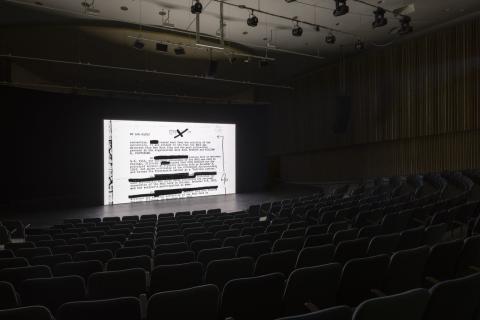
Conversation autour de "End Credits"
For years, the FBI monitored the activities of Eslanda and Paul Robeson, both civil rights activists and communist sympathisers in the United States. The artist Steve McQueen makes this surveillance visible in a work that combines sound recording and over 12 hours of scrolling through archive documents from the FBI, redacted of sensitive information. As part of the FNS and HEAD – Genève 'Decolonizing Socialism. Entangled Internationalism' research project, Doreen Mende (HEAD – Genève, HES-SO) sat down with McQueen to talk about this work, the Robesons as intellectual and activist figures, and their contribution to pan-Africanism and exchanges between East and West during the Cold War.
-

In Search of the Female User
Gendered Representations in Computer Advertising
This text offers an iconographic study of the figure of the female computer-user based on advertising brochures from the second half of the 20th century. What fictional situations do these commercial photographs represent? And above all, what gender roles do they define for women? By studying the advertisements, the text supports the hypothesis that the boom in personal computing and the birth of the concept of the 'user' in the 1980s led to a deconstruction of the image of the computer as a feminine machine.
-
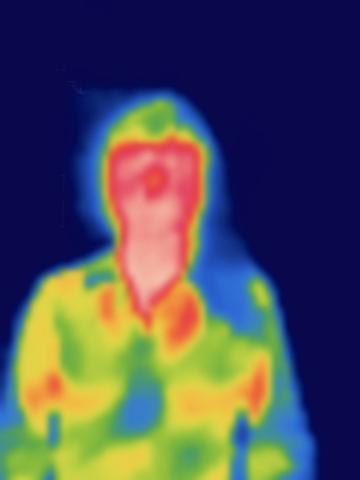
Dossier #19
Making it Low-Carbon: Video Footage of the Conference Series
In recent years the climate crisis has forced the worlds of art, fashion, architecture, design, dance, theatre, film, and music to question their carbon footprint and take steps to reduce their CO2 emissions. But while much has been said about the measures taken on an organisational level with relation to production, transport, and display modes including framing – for example videoconferencing rather than taking long plane trips, reusing picture rails in museums as opposed to throwing them away, adapting lighting to be less energy-intensive, sorting waste, etc. – less has been heard about the work of art per se: how the climate crisis is transforming both the content and container of art, the artwork’s signified and signifier, the subject as much as the form, and the material itself. This series of Talking Heads talks dedicated to low-carbon creation examines how the new climate regime is revolutionising the very nature of the artwork; its raison d'être; its values; its aesthetic criteria and, ultimately, its beauty. All the talks can be watched online. Cover image: Pauline Julier's thermography
-
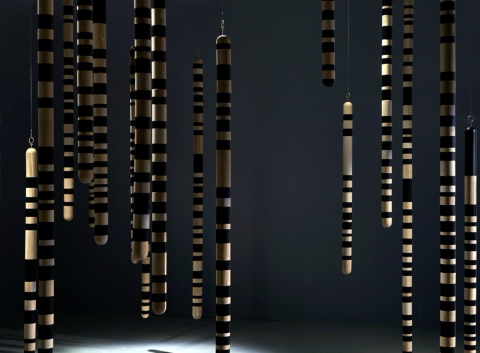
There's plenty of room at the bottom
Talking Head with Marie-Sarah Adenis
Having noted the limitations of scientific discourse which, in the absence of a narrative to support it, fails to unite people around the shared challenge of saving living things, the designer and artist Marie-Sarah Adénis is developing a hybrid work between cosmology and cosmogony. Her projects focus on the scales of DNA and cells, which she stages in representations where the history of life unfolds in narrative or mythological forms. Alongside her work as a contemporary fabulist, Adénis is conducting experiments with bacteria to develop ecological pigments. In this talk, the former neuroscience researcher emphasises the centrality of storytelling to our world's 'crisis of sensibility'. -

Comment le climat transforme la mode
Talking Head with Cecilia Llorens
A brand known for its comfortable shoes in bright colours and playful designs, Camper is also committed to the sustainability of its products. From the outset, the company, which was founded in 1975 in Majorca, has used scrap leather and rubber from tyres. In this Talking Head talk, Cecilia Llorens, Production Director at Camper, explains Camper’s policy of reducing the environmental impact of its footwear through single-material models, the use of certified or recycled resources, and even the introduction of compostable materials. At the same time, Camper is looking to increase the lifespan of its products and promoting a counter-current communication approach with the slogan "If you don't need it, don't buy it." -
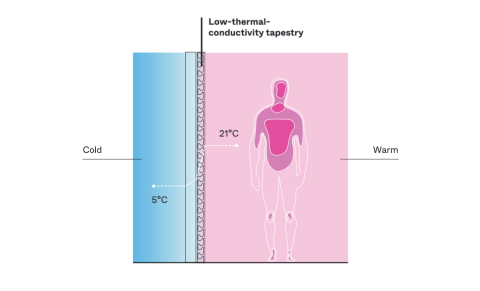
The anthropocene style
Talking Head with Philippe Rahm
Drawing on his climaticist approach, the architect and initiator of this programme of conferences, Philippe Rahm, concludes this series by recalling the current challenges for creation. Rahm stresses the importance of taking global warming into account in the field of culture, and of mitigating global warming by organising, and giving priority to, a framework of material and practical thought and action. Re-engaging with the dialectical principle of historical materialism leads him to imagine the perhaps inevitable scenario of an Anthropocene cultural style, where films would be shot by candlelight so that projectors consume less electricity during screenings; where contemporary dance would be less acrobatic so as to limit the food consumption of performers; and where designers and architects would invent objects with components that would limit heat loss in winter and keep us cool in summer. -
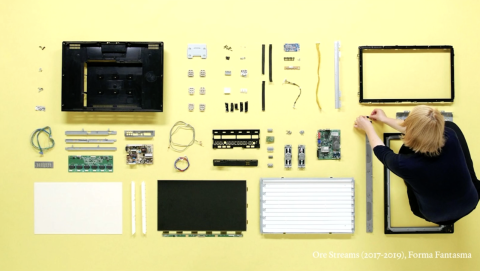
Numérisation et crise environnementale
Talking Head with Gauthier Roussilhe
Almost twenty years ago, organisations as diverse as the WWF and the World Economic Forum in Davos were promoting digital technology as a solution to the climate crisis. A growing awareness of digital technology’s environmental impact has since tempered that optimism. In this talk, Gauthier Roussilhe, a researcher and consultant specialising in digitisation’s environmental challenges, takes stock of both digital technology’s positive and negative contributions. Trained as a designer, Roussilhe draws not only on scientific studies, but also on concrete expression in design of digital technology’s carbon footprint. -
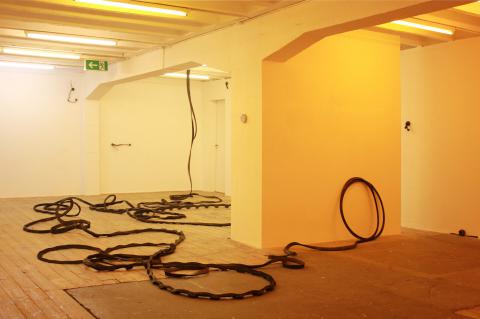
No Emission No Exploitation
Talking Head with Yasmin Afschar, Vanessa Billy, Elise Lammer
Curators Yasmin Afschar and Elise Lammer are behind the No Emission No Exploitation manifesto, which seeks to put down – in the production of art and exhibitions – an approach decoupled from fossil fuel consumption, all the while promoting social justice. Their initiative aims to foster a dialogue with artists on these issues. For this talk, Afschar and Lammer teamed up with artist Vanessa Billy, whose sculpture and installation work takes a very measured approach to production through, for example, the principles of re-use; sending instructions remotely; and selecting natural materials and returning them to their place of origin after a temporary exhibition. -
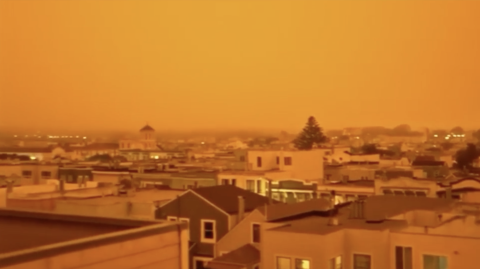
Regard avec le monde
Talking Head with Pauline Julier
Pauline Julier’s latest film, Follow the Water (2022), focuses on the Atacama Desert in Chile. This desert, the driest on our planet, is home to huge lithium mines, a metal needed for electric batteries. The desert is also an exploration ground for NASA scientists, who find there a Mars soil analogue. Through the use of several channels, Julier mixes perspectives and attempts to describe the relationships between the Atacama desert’s different elements, linked together by the same issue: water. In this Talking Head, Julier looks back at some of her audiovisual productions that are marked by environmental issues, and the desire to sketch out new imaginaries, reconnected to the world. According to her, the dominant narratives of media and blockbusters reflect a false reality by telling out-of-this-world stories: air-conditioned narratives. -
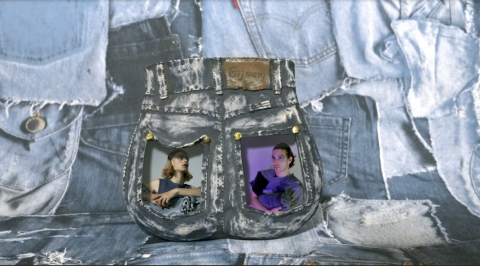
Jeansdinge Moving On
Originally, in the early 2000s, Jeansdinge was a collection of denim objects brought together by artist-researchers Katharina Hohmann and Katharina Tietze for an exhibition exploring the grey areas between art and fashion, set in a former East-German kiosk in the Bauhaus town of Weimar. The aesthetic and political issues raised by the American pop culture artefacts led Katharina Hohmann to direct the research project Jeansdinge on the Move (2021-2022). In this chronicle-like article, Hohmann details the multiple artistic and critical approaches developed around the collection of denim objects, gathered on the website jeansdinge.com
-
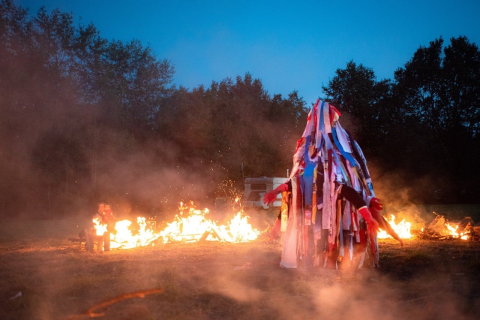
Dossier #18
Art in Practice
With modernity, the understanding of art practice has largely been reduced to the expression of individual subjectivity through the production of objects or events designed for institutions or the market. The two interviews in this feature testify to the revival of other approaches, in which art reclaims ancient functions linked to ritual and the creation of commons: an art by use. Mathilde Chénin is the author of a PHD thesis (HEAD/EPFL) which she defended in 2022. In her thesis, Chénin examined the question of the future of art in communal life and art-practice experiences between artists. Using two examples of artists' collectives and the tools of pragmatic sociology, she studied displacement as it takes place through use and in the imaginary within the common project of building a place to live and work. Gene Ray's interview with Isabelle Frémeaux and Jay Jordan focuses on their singular experience on the Notre-Dame-des-Landes “zad” (zone to defend) in the Loire-Atlantique region of France. The duo of artists, activists, researchers and educators have been living for several years in this zad, created to oppose the construction of an airport on this territory. Frémeaux and Jordan talk about their commitment to ecological activism as well as the various artistic experiments carried out in this space based on self-management. Art is very present in the zad and takes various forms, including that of a collective celebration of life through ritual. Frémeaux and Jordan also consider artistic pedagogy at large.
-

Forms of Artists' Lives
Entretien avec Mathilde Chénin
Looking to escape the model of temporarily occupying a wasteland proposed by institutions and private companies, art collectives are rethinking how to live and work together by acquiring land that will ensure the sustainability of their action. In her PhD thesis, Quand les artistes font forme en habitant ensemble. Usages, présences, imaginaires (“When artists live together. Use, presence, and the imaginary”) under the supervision of Olivier Desvoignes, HEAD, and Luca Pattaroni, EPFL, 2022, Mathilde Chénin considers the forms of commonality which communities of artists create and how individual art practice undergoes displacement.
-
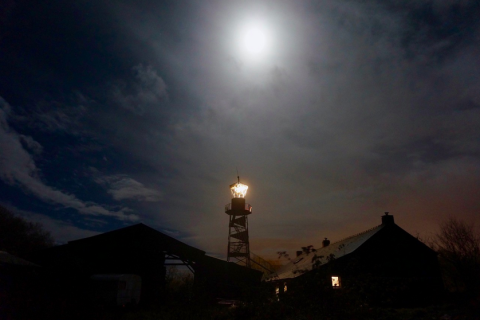
Rural Riots, Animist Rituals and Teaching from the Territory
A Conversation with the Laboratory of Insurrectionary Imagination
A teacher in the CCC Master's Research Programme and a researcher at HEAD – Genève, Gene Ray is interested in radical practices of art and activism in a time of multiple social and ecological crises. He spoke with the artist, researcher and activist duo, Jay Jordan and Isabelle Frémeaux, who took part in the struggle against the Notre-Dame-des-Landes airport project, settling on this highly publicized “zad” (zone to defend). Together, they look back at the aesthetics that developed on this field of experimentation around social forms. By defending older principles such as conviviality and proclaiming their healing powers and ability to invent galvanizing myths, these social forms refuse contemporary art as we know it.
-
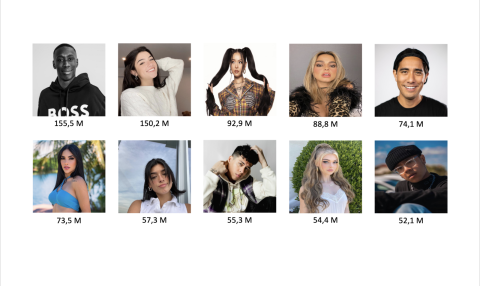
Social Networks as a Space of Representation
As part of a course dedicated to the Theory of Representation, first-year Bachelor's students in Interior Architecture provided chromatic analyses, or analyses of the programming and utilisation, of Tik Tok, Instagram, Pinterest, and their competitors as if they were buildings. Here we present extracts from these unusual diagnoses, which are based on the principle that interior architecture is now situated at the nexus between physical and mediated spaces, as taught by Javier Fernández Contreras, who is responsible for the course.
-
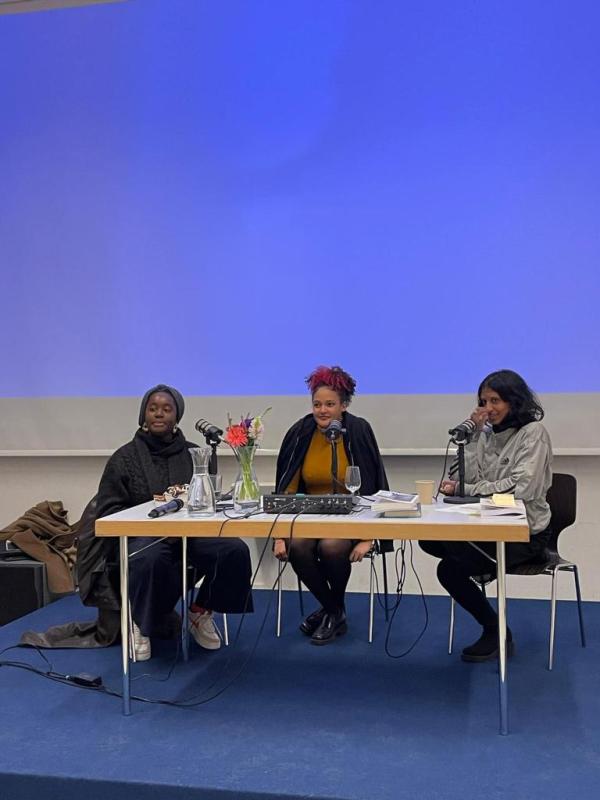
Fashion's Political Turn
Interview with Fashion Journalist Mélody Thomas for the Front Row Podcast
The HEAD – Genève welcomed journalist Mélody Thomas during its traditional open doors for an interview on her book La Mode est politique : Un bref lexique inclusif (2022). The meeting was recorded and gave rise to an episode of the Front Row podcast by researcher and designer duo Tara Mabiala and Camille Farrah Buhler. With them, Thomas recounts her journey in a changing industry and discusses some of the issues raised by her book.
-
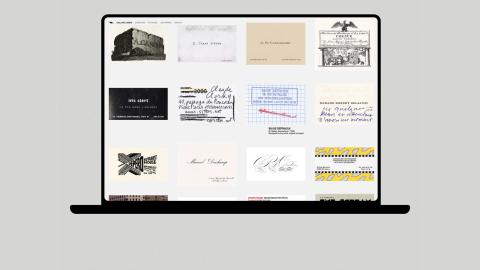
In Touch with History
Interview with Pierre Leguillon about the Digital Version of his Book "Oracles"
The collector′s book, Oracles – Artists' Calling Cards, reinvents itself in digital format and reaches out to a wider audience. In this interview, Pierre Leguillon, the instigator of this multi-faceted project under the aegis of his Museum of Mistakes, discusses his use of the book as an exhibition space, the role of the archive, and the importance of initiating a counter-narrative through the recovery of visual culture′s left-overs.
-
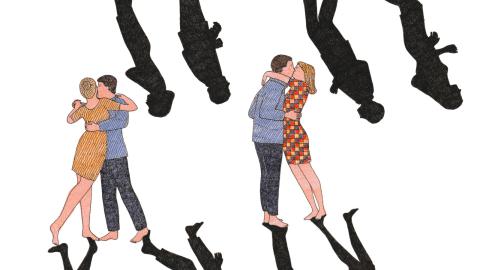
Dossier #17
Illustration and its Manufacturing Secrets: Video Footage of the Filigrane Symposium
Organised by the HEAD – Genève’s Illustration major in February 2023, the Filigrane talk series was conceived as a meeting and exchange space between students and professionals. As the title implies, the primary intention was to go behind the scenes of illustration work to reveal the features hidden beneath the images. Over the course of two days, devoted respectively to ‘the studio’ and ‘production under constraint’, seven illustrators representative of current trends spoke about their means and methods of creation, their daily lives, and their relationship to the creative space. Starting with the notebook as a ‘jogging space’ or ‘compost reserve’ in case of writer’s block, this feature explores the meanderings of the brain and those of the studio, tidy or in feigned disorder, dissecting the book’s precision mechanics in relation to that of narration. Then the deck is reshuffled and it appears that serendipity – like the morning ritual of going from private to artist space – can be the centrepiece driving the machine. Sometimes the landscape of childhood leads to the desire to inhabit the landscape of the book. Finally, it’s possible that a four-handed work on one same image can blur the artist's stamp to the point of erasure. The different testimonies thus lift the veil on personal, if not intimate, processes that are both pluralist and resolutely unique. Most often, those processes remain confined to the secret of the studio or the brain. What shines through between the lines of these images and words is the necessary elaboration of a deep and complex reflection on the creative act in the vast field of illustration. This symposium provides an all too rare opportunity for thoughts honed by experience and practice to be transformed, for once, into a discourse serving as a collective narrative. Through words, images and in the manner of illustrated books – Filigrane tells a story: that of creation in contemporary illustration. Clément Paurd Image: Marion Fayolle, Les amours suspendues, Magnani, 2018. Backcover (detail)
-
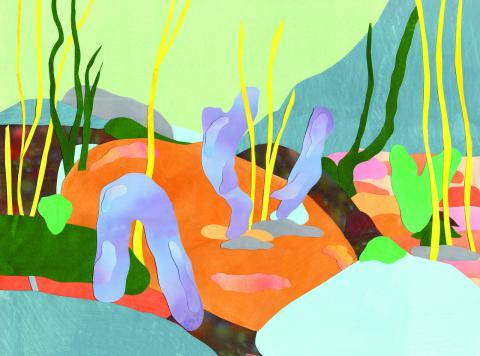
On Process and Serendipity
Averse to intentionality and fixed creative processes, the artist Anne Brugni has set up a working framework where accidents, chance associations, and serendipity can occur. She thus often composes from cut-out papers that end up in a jumble on her desk or on the floor. Certain coincidences of proximity favour the shaping of images. Here, Brugni describes this mode of production made up of controlled uncertainty, where the idea is always next to oblivion, waste to salvage.
-
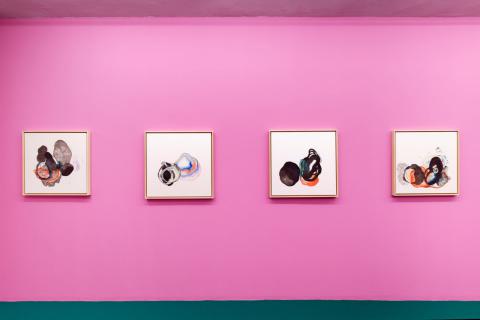
On Bibliophilia and Daily Practice
Since the 1990s, Guillaume Dégé has been devoting himself to keeping notebooks, this daily practice becoming the breeding ground for all his graphic work. In this talk, Dégé presents the typology of his notebook practice, both free and without prerequisites yet also ritualised and formalised. A bibliophile, Dégé details the uses of the notebook as an intimate tool with examples ranging from ‘jogging’ notebooks, which allow him to formulate graphic problems while maintaining his hand’s ability, to ‘compost’ notebooks, where interesting parts of failed drawings are recycled through collage.
-
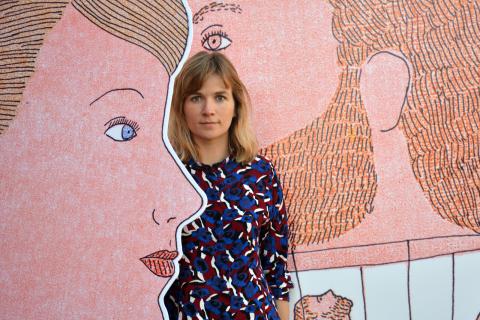
On Paper Theatre
Passionate about theatre and dance, but believing herself to have little talent for these practices, Marion Fayolle has bypassed the limits of the stage by imagining a theatre on paper, where her characters move and dance. Fayolle explains how she treats human figures as archetypes in disguise, tracing and then re-using them as interchangeable actors from one stage and one book to another. Her stories develop as a form of sequence from one drawing which suggests another, showing far greater potential for interaction and transformation than that of actual individuals on stage.
-
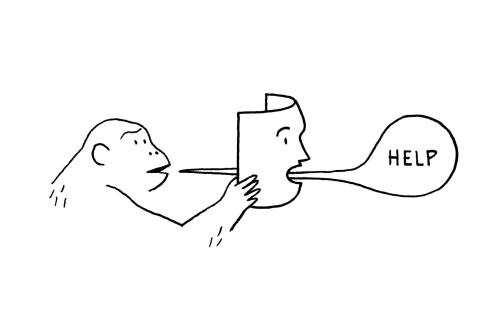
On the Creative Muscle
Pondering on creative thinking, the illustrator Delphine Perret wanted to examine the experiences of her colleagues. Her book Les Ateliers is the result of a meeting with 24 illustrators who told her about their way of stimulating the creative muscle and the conditions under which it can function. The relationship between artistic and non-artistic work, procrastination, the need for a recognition of creative activity as work, the studio as an intimate place of emergence, and creative epiphany: Perret shows, through these encounters with her fellow illustrators, the considerable energy it requires to get to work.
-
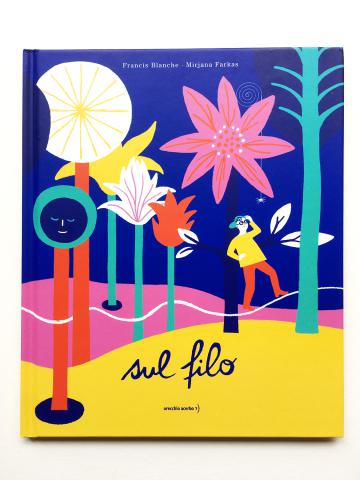
On Time and Space Constraints
Mirjana Farkas questions the constraints of illustration, grouping them under the broad categories of Time and Space. Time that is gained and lost, dreamt of or successfully spared. The time it takes to create a book and the time given by the commissioner. The space of the imaginary museum in the mind, that of meetings and collaborations. But also the creative activities’ physical space, be it the studio or the medium. Farkas discusses her practice through the prism of these various ways of apprehending the constraints of illustration, which are also opportunities.
-
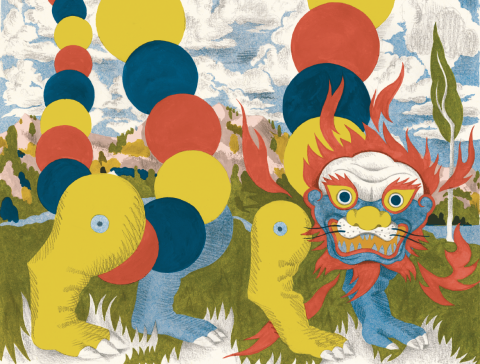
The Book as a Medium
Cover page, binding, reading direction, back cover, the illustrator Blexbolex sees the book as a precise mechanism whose inner workings he uses and disrupts to imagine publications that surprise and amaze by their ingenuity and their ability to create narration. Blexbolex considers his passion for the book as an object, which began in a silk-screen printing workshop, and comments on the variety of his production, from underground productions to thrillers and children's books.
-
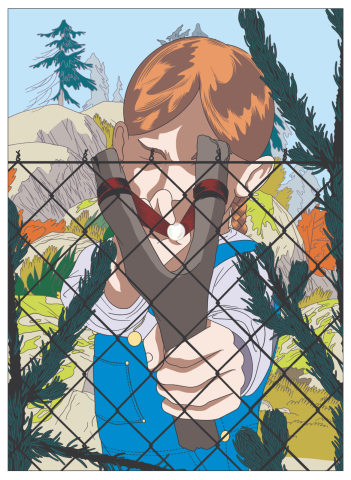
On the Dissolution of Personal Style
In this talk, Anne-Margot Ramstein discusses the four-handed work that has developed through her collaboration with Matthias Arégui. This joint production of images, which began instrumentally when she needed to show drawings to a publisher, has enabled her to free herself from some of the constraints of what is expected in an album in terms of personal style and signature. Ramstein speaks about how they allow themselves to add to or delete one another's work, without any marked deference to it, in order to create a dual work, and how this activity as part of a pair influences her personal practice.
-

What's with the Gimmick?
Drawing on Sianne Ngai’s Theory of The Gimmick: Aesthetic Judgment and Capitalist Form (2020), this essay examines the reception of fashion collective Vetements through the lens of the gimmick, discussing the label’s infamous DHL t-shirt as a prime example of a design that simultaneously “overperforms” and “underperforms.” An aesthetic judgement, the gimmick triggers an estimation of both an excess and a lack of labor, which, in Ngai’s words, reflects an “uncertainty about time and value.” Connecting the DHL t-shirt to the state of creative labor in the industry, the essay foregrounds the engagement of design with issues surrounding labor.
-
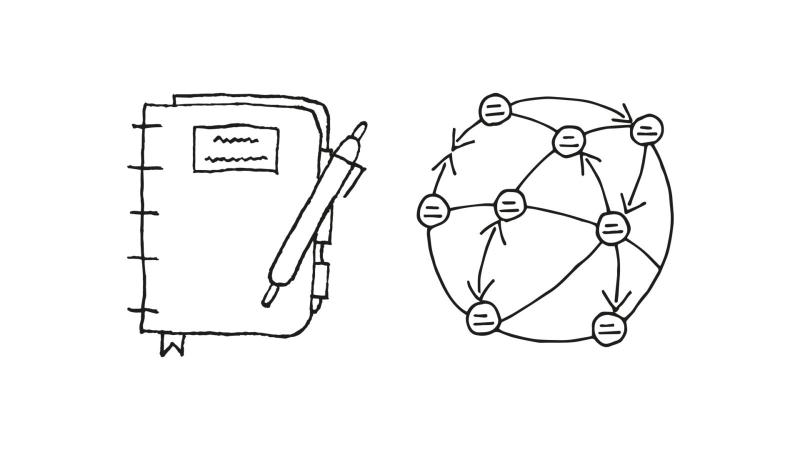
Observation Exercises
Interview with Nicolas Nova
A teacher and researcher at HEAD – Genève, Nicolas Nova recently published the book Exercices d'observation, which invites us to train our attention skills. Composed of short texts, it is illustrated by sketches which are themselves ways of noting, classifying and ultimately thinking about the world and its small details. Nova sat down with Julie Enckell Julliard to talk about observation, a practice common to anthropologists and artists, which the reader is enjoined to cultivate and nurture in its different modes.
-
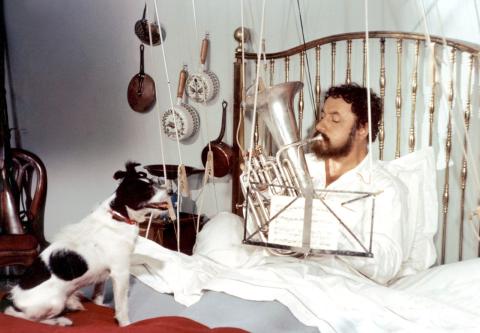
Dossier #16
Profession: Creative Worker
As you may already know, we have entered the VUCA (Volatile, Uncertain, Complex, Ambiguous) era. In this changing world, it is no longer possible to look more than two or three years ahead. The climate is changing, and along with it society, its habits and achievements. This is what the Anglo-Polish theorist Zygmunt Bauman called the 'modern liquid' society: people behave in situations that are changing even before their behaviour can become a habit. The 'solid' era of production is followed by the fluid and uncertain era of consumers, who are unable to draw any lasting lessons from their experiences, as the framework and conditions in which their experiences take place is constantly changing. Is this frenetic pace of change behind the Big Quit phenomenon? In the wake of the Covid crisis, more than 4 million Americans resigned and many filmed themselves on TikTok as they did so. The Chinese social network quickly became a forum for citizens to discuss work; a topic garnering a total of more than 50 billion views. At the heart of the debate is the meaning of commitment and self-sacrifice in the professional sphere, with this question coming up again and again: Covid having redefined work’s social dimension, what is the point of work now if it brings neither new experience nor well-being? Derived from the Latin ‘tripaliare’ – literally ‘to torment, to torture with the trepalium’ – ‘to work’ in Old French means ‘to make suffer’. As a transitive verb, it also means ‘to shake’ or ‘turn into’ (‘to work the dough’). Ideally, work would thus open up the opportunity for self-transformation through new experiences. However, as the number of burnouts soars, work must imperatively guarantee a certain quality of life. Companies know that this aspect, which now has its own acronym – QWL (quality of working life) – has become a prerequisite for any recruitment. In a world where we plan less and less, short-term happiness in daily life is prioritised over the accumulation of long-term goods – and it is a matter of demonstrating that this short-term happiness makes the long-term effort worthwhile. On the creative side, work stability is not an option and the VUCA world seems to have been a long-standing reality. Nonetheless, how a profession is defined and perceived is also changing. How do creatives see their future today? What is their relationship to their career? Does this word even still have a meaning and, if so, what is it? Can we delegate and mimic a company’s roles, or must we invent an alternative to this type of work organisation? In 1973, the thinker of political ecology Ivan Illich drew attention to the risk of too much dependence on industry: ‘The individual’s autonomy is intolerably reduced by a society that defines the maximum satisfaction of the maximum number as the largest consumption of industrial goods. Alternate political arrangements would have the purpose of permitting all people to define the images of their own future’ [note] Ivan Illich, Tools for Conviviality, New York: Harper & Row, 1973 [/note]. By advocating for ‘creative autonomy’ and a ‘convivial’ society based on free access to the tools of the community, Illich theorised the Generation Z’s crisis of meaning ahead of its time. Degrowth, well-being, climate change and the precariousness of assets: designers’ and artists’ relationship to work is being reinvented just as their contributions seem more essential than ever when thinking about the future. This feature brings together critical contributions from HEAD alumni and teachers, giving the floor to those who question this relationship to their profession. In an interview, the graphic designer Etienne Mineur comments on his exploration of image generation platforms, speculating on the evolution of the creative professions in the face of the automation of drawing. Aude Fellay and Emilie Meldem together with Giulia Mensitieri, author of Le plus beau métier du monde (2018), discuss how to create alliances in the fashion industry between creatives and the production workforce. In two of her films, the artist and alumna Lou Cohen explores the contemporary professional world with wry humour. From recruitment agencies to start-ups, she imagines situations where coaching and power relations combine and clash at the expense of workers’ performance of the self. In her TRANS Master's thesis, of which we publish large excerpts, Eva Meister looks back on her daily life as a student, dictated by the need to finance her studies through odd jobs. Curator and alumna Julie Marmet returns to the Wages for Wages Against movement and takes stock of artists' salaries. In a series of paintings and installations, Yoan Mudry questions the globalised representation of work on Google. Enjoy! Julie Enckell Julliard Cover image: still form Alexandre le bienheureux, Yves Robert, 1968. © Gaumont
-
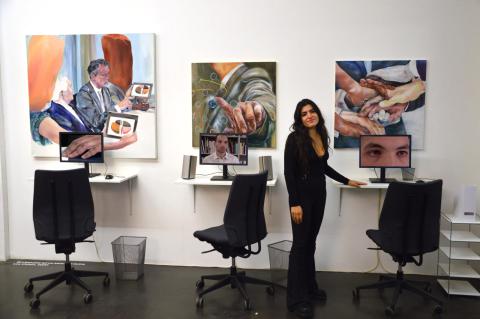
When Someone Speaks to You, You Just Smile
Two films by Lou Cohen explore the contemporary professional world with a wry sense of humour. From recruitment agencies to start-ups, Cohen imagines situations in which coaching and power relations combine and clash at the expense of workers.
-
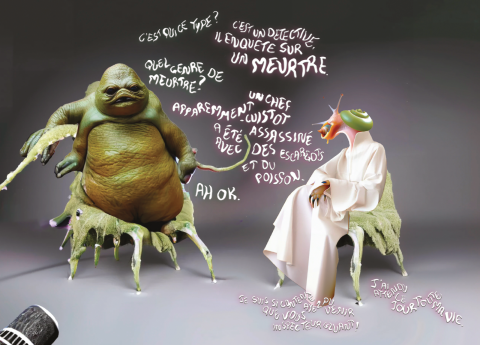
Automation: For or Against Designers?
A graphic designer and teacher who has long been interested in interactivity issues, Etienne Mineur is experimenting with artificial intelligence image generation platforms, such as DALL-E or Midjourney, to create typography. Testing the limits of these tools – for example by asking AI for crustacean-shaped whipped cream lettering – he has managed to produce images that he deems inconceivable otherwise. In this interview, Mineur details his observations and speculates on the evolution of creative professions in the face of the automation of drawing.
-
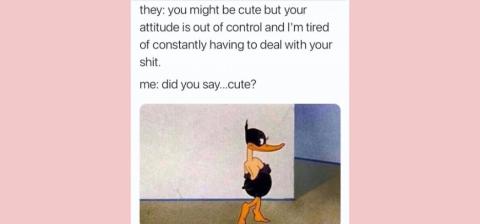
Mode et anthropologie : chassé-croisé autour de la question du travail
Giulia Mensitieri conducted a field survey on the working conditions in fashion, demonstrating how the image of luxury masks and justifies the precarious reality of workers. In this in-depth interview, Aude Fellay and Emilie Meldem discuss their own criticism of the conflation they see in the book between fashion design and object advertising and, with Mesnitieri, attempt to co-construct a practice-embedded approach.
-
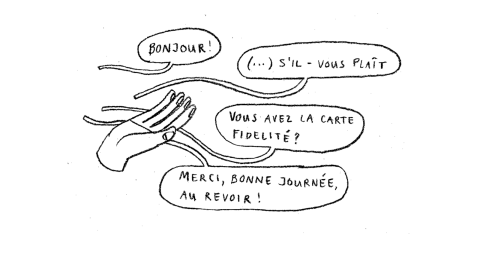
Étudiant·ex – Artiste – Travailleur·eusex
Intersectionnalité et précarité d'un triple statut
During her studies, Eva Meister took on a number of student jobs as her family could not afford to support her. In her TRANS – master’s thesis, Meister, now an alumna, looked back on these jobs and how they interacted with her artistic practice and her studies. Starting from an observation on precariousness and the risk of getting stuck in this triple status of worker, student, and artist, Meister considers how art allows for self-representation and thus for the objectification of working conditions and daily constraints. Here, we publish large excerpts from her Master’s thesis as well as some of her related drawings.
-

Art is Work
On the Impossibility of Demanding Social and Legal Protection for Artists Without Questioning the Nature of Artistic Work
In recent years, numerous initiatives have called for better remuneration for artists. The success of these campaigns is a testament to a salutary change in the status of the artist. For too long, this status was associated with a romantic vision of art as something practised out of passion, as opposed to a work that justifies remuneration. In this text, curator Julie Marmet, who is involved in favour of artists' rights with Visarte Genève, looks back at the genealogy of this movement, speculating on how the integration of artists into the world of workers redefines the very notion of work.
-

Work Day Painter
Interview with Yoan Mudry
In The Human Condition, Hannah Arendt famously distinguished labour – linked to bodily activity and the reproduction of it – from work that transcends individual life. Through its physical and material aspects, painting is an activity that nonetheless covers the realities of labour, all the while offering independence from it by opening up a critical space. In this interview conducted in his Geneva studio, the painter Yoan Mudry talks about the practical issues and financial considerations related to his production process. Mudry also considers the possibility of commenting, through painting, on the Google-proposed standardised representations of life-at-work.
-
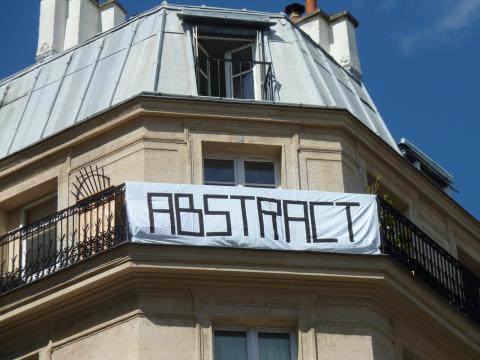
Learning about the World with Painting
Interview with Nicolas Chardon
For his painting, French artist Nicolas Chardon uses excessively limited means: simple geometric forms, preferably a square; sometimes a tautological expression such as "abstract painting"; white and black as dominant colours. Yet his work is far from dogmatic, his brush following faithfully the movements of his grid-like fabrics, which he distorts as he stretches them onto the frame. What is well- or badly-done thus merge in a dance that combines Malevich's quest for the absolute with the materialism of the truncated object. In this interview, Chardon discusses his approach as an artist and as a teacher at the HEAD – Genève’s Representation option.
-

Crunchy Packaging
Chocolate, Swiss Winter Relief, Nightclub: External Mandates in Visual Communication
Favarger is a Geneva-based chocolate brand founded in 1826, well known for its avelines, a chocolate praline wrapped in gold paper. In 2021, the company commissioned the Visual Communication Department of HEAD – Genève to develop a new visual identity. The chosen project (Fanny Alvarez, Loraine Friedli, Elsa Hoover, and Jordane Vincenzi) was inspired by chocolate squares broken with a hammer, which form abstract motifs evoking the contents of the packaging. This commission was part of a desire to confront the students with concrete and situated demands. Here we look back at the project with annotated pictures.
-
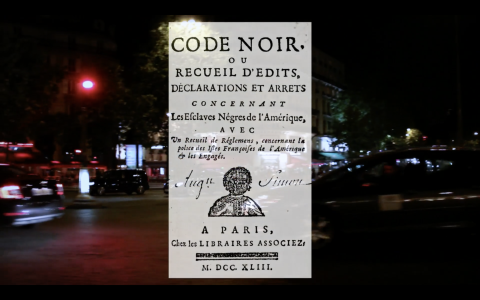
Condensation of the Immaterial
Interview with Filmmaker Louis Henderson
Assemble. That’s the watchword of British artist and filmmaker Louis Henderson. For the past thirteen years, Henderson has been building a 2.0 filmography, essentially using the teeming universe of expanding images and sounds from the Internet, better known as net-found footage. In this respect, his protean texts and films take an archaeological approach to examining the materiality of the Internet while exploring themes as varied as politics, sociology, and anthropology. More specifically, Henderson’s practice stresses the permanence of cultural relics related to colonial pasts. We met with him ahead of his intervention in the Cinema Department’s net-found footage workshop in 2023.
-
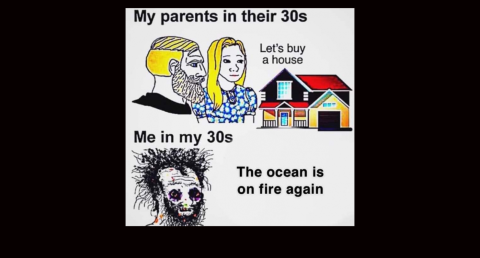
The necessity of new communication model in the intergenerational educational space
The meme formed with the phrase "Ok Boomer" epitomises a generation gap that has opened up in recent years. On the one hand, there are Millennials and Gen Zers looking for social justice, who are able to sum up a complex situation in a devastating viral image. On the other hand, Boomers and GenXers are seen as the main representatives of power structures responsible for inequalities and ecological disasters. The breakdown of dialogue manifests itself at all levels of our societies, and especially in a school where these generations meet in asymmetrical positions. Nayansaku Mufwankolo, professor and delegate for inclusiveness at the HEAD – Genève, looks back at this dichotomy, putting forward some ideas for bringing the generations together. -
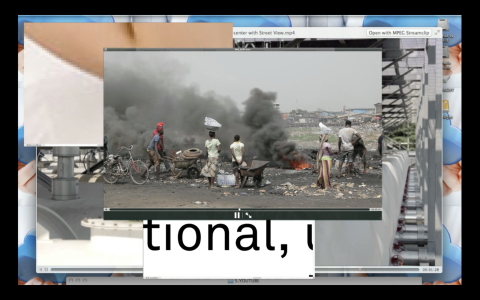
Dossier #15
Net Found Footage
In 2019, the Cinema Department launched its first workshop around images found on the Internet and social media (Instagram, TikTok, etc.) under the impetus of the director and teacher Maryam Goormaghtigh. The theme was "Apocalypses". In this workshop devoted to editing, the Cinema Department considered the status of images and the strength of both the narrative and the voice-over. In 2020, artists and directors Caroline Poggi and Jonathan Vinel – whose films explore a contemporary youth disillusioned with reality and overwhelmed by virtual images – were invited to give a new workshop on the notion of "care", with the participation of artist and musician Christelle Oyiri (Crystallmess). They will return in 2021 for a workshop on "portraiture", with the participation of the film director Guillaume Lillo. Several of the films made during these workshops were selected in national and international festivals, including the Locarno Film Festival, the Int. Kurzfilmatge Winterhur, the Journées de Soleure, the GIFF, the Festival Côté Court (FR), IndieLisboa (PT), and the Festival du Nouveau Cinéma in Montreal (CA). This short focus starts off with a text by the filmmaker, critic and lecturer at the HEAD Cinema Department, Jean-Sébastien Chauvin. In it, Chauvin explores various ways of creating a narrative with images found on the Internet. Three films from the 2021 and 2022 workshops are presented. Finally, an interview with the English filmmaker Louis Henderson, also a lecturer at the HEAD, looks at the uses of found images in his decolonial practice. Cover image: screenshot from All that Solid, Louis Henderson, 2014
-

The 1001 Images of a Big Brain
“The world has already been filmed, it is now a matter of transforming it”, said Guy Debord in The Society of the Spectacle in 1973. This reservoir of images has since been made available by the Internet. In this article, the French filmmaker and critic, Jean-Sébastien Chauvin, considers the practice of filmmakers who – rather than adding images to the world – recycle traces of historical events or fragments of everyday life in a deliberately non-productive approach. The montages they make (re)articulate the flow of images found on the Internet, producing often-engaged narratives that counter the alienating logic of spectacle denounced by Debord. This article introduces a programme devoted to “net-found footage”, presented at the Entrevues film festival in Belfort from 22 to 27 November 2022.
-
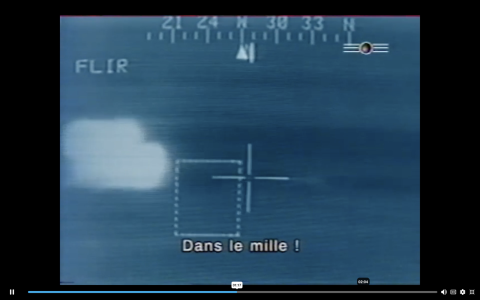
Three Films from the Net-Found Footage Workshops
From a fantasy aroused by some men′s underwear packaging, to the search for oneself in the depths of social media, to research into one′s own Iraqi origins; these three films created within the framework of Caroline Poggi and Jonathan Vinel’s net-found footage workshops at the HEAD – Genève can be watched here.
-
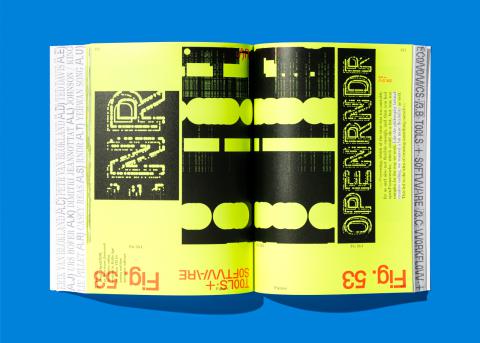
Learn to Code vs. Code to Learn
Published in 2022 and already out of print, the book Graphic Design in the Post-Digital Age is currently being reprinted. To celebrate this upcoming return to bookstores, we are publishing an excerpt from this research (HES-SO project directed by Demian Conrad, 2019-2021) on how graphic designers have integrated computer programming languages into their creative practice. Silvio Lorusso's introductory essay focuses on the social representations of coding and the limits – in terms of gender or social class – they introduce in the adoption of this practice. The author suggests that instead of insisting on the urgency to learn to code, focusing on what one learns by practicing coding would be more empowering. -

Night Express: When Trains Commute to Comfort
Interview with Interior Architect Elizaveta Krikun
Europe has set itself the goal of re-launching several night train lines in order to reduce the ecological footprint of passenger transport. There is talk of linking Paris to Barcelona or Madrid in one night by 2024. From Switzerland, the Basel-Amsterdam line has resumed night service. But these journeys are more reminiscent of plastic boxes than the elegance of the Orient Express. For her Master’s degree in Interior Architecture, Elizaveta Krikun examined this discrepancy between the image and reality of the night train. In her project, she drew inspiration from the trains of the Belle Epoque to design a contemporary and comfortable setting with high-quality materials, modular spaces, and communal areas for socialising.
-
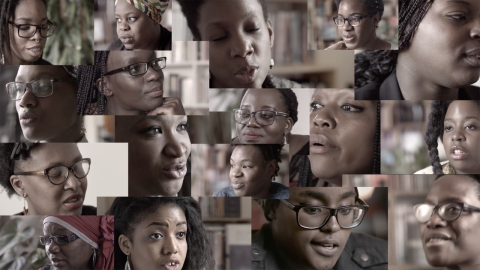
Dossier #14
Whose Voice? Cinema, Representation and Representativeness
With the shocks from the #metoo movement continuing to reverberate through the world of cinema and beyond, Black Lives Matter protests mobilising an entire generation and more and more social media accounts detailing abuses during filming under the hashtag #balancetonporc ("out your pig"), the "Whose Voice?" seminar was brought to the Cinema department by Alice Riva (teaching assistant and programmer at Visions du Réel), Nicolas Wadimoff (director and Dean of the Cinema department) and Delphine Jeanneret (Deputy Dean of the Cinema department and programmer at the Locarno Film Festival). This seminar brought together filmmakers and thinkers to offer critical and inquiring perspectives on the issues of representation and the construction of our imagination. Alongside this, readings from fundamental texts on these movements, as well as film screenings, podcasts and discussions were used to disseminate and debate the theoretical concepts of decolonial, feminist and queer thought, in order to provide a critical framework from which to interpret films. This experimental seminar began in March 2021 with a reading of a text by the director, academic, and Afrofeminist, Amandine Gay, entitled "La réappropriation des moyens de production au service d’une esthétique autonome" (Reappropriating production resources in pursuit of an autonomous aesthetic) from the collective work Décolonisons les arts! (Decolonise the arts!) under the direction of Leïla Cukierman, Gerty Dambury and Françoise Vergès (L’Arche, 2018). Together we read this text of a raw, exhilarating clarity, with each student taking one or two paragraphs, before sharing and discussing our questions: How can minorities be given a voice? How should they be represented on screen? How can we bring about existence through naming? The following week, Amandine Gay talked to us about her work on reappropriating the narrative and production resources as an act of emancipation. We were deeply moved by her clear and direct style of speaking, which led many of us to question our convictions. Over time, her voice would be joined by others to form a polyphony of decolonial, feminist and queer discourse. Alexe Poukine presented her first full-length feature, That Which Does Not Kill (Sans frapper) (Jury Prize at Visions du Réel in 2019), in which she explores the subject of rape and its resulting post-traumatic stress disorder. Together we explored ways to represent the unnameable. Noémi Michel, an academic and Afrofeminist activist, studies the place of minorities in democracy. She creates scenarios with small groups of students to encourage them to think about the everyday words they use to describe themselves. Along with the writer Clara Schulmann, who holds a PhD in Cinema Studies, the students read chapters from her book, Zizanies (Paraguay Press, 2020), which were divided into moods. She listened to the students tell their stories, using her text to help them uncover and better understand their own vulnerabilities. The editor, writer and curator, Greg de Cuir Jr, who curated the Black Light retrospective at the Locarno Film Festival, spoke about the role of the representation of racialised people in experimental cinema, and about his own work, which aims to raise the profile of lesser known filmmakers. Iris Brey, a journalist, writer and film critic, shared her research on Le regard féminin, une révolution à l'écran (The Female Gaze: A Screen Revolution) (Éditions de l’Olivier, 2020). She spoke about her research into the dominance of the male gaze in cinema, and looked at ways to measure the historic invisibility of women in film. Armed with this insight, we ended the seminar determined to bring about change the film industry. Naelle Dariya and River spoke about the onscreen representation of transgender people and deconstructed some of the cinematic clichés surrounding them. They strive to maintain the profile of cultures, characters and bodies which are often invisible in cinema. The journalist and legal reporter, Yamina Zoutat, offered an analysis of speeches heard at the Palais de Justice (law courts) in Paris in order to highlight the mechanisms of power at work in areas where the spoken word is the primary source of defence. The Georgian director, Elene Naveriani, who graduated from the Cinema department in 2014, screened some of her feminist, inclusive and anti-racist cinema. We discussed the issues surrounding the non-representation of communities in certain countries, including Georgia. Finally, the director Callisto McNulty revisited the activist work of her grandmother, Carole Roussopoulos, with an exploration of her film Delphine et Carole, insoumuses (Delphine and Carole) (2019). She spoke about the "enchanted feminism" of the 1970s, the first female activist directors, and her own feminist views, which encompass both the historic and the contemporary. The "Whose Voice?" seminar offered students an opportunity to discuss some pressing – and sometimes hot – issues using a participatory learning approach that enabled them to collectively construct the debate with guest speakers and teaching staff. This focus offers a short synopsis of the discourse, adopting a conversational interview format to discover the voices and work of some of those who took part in the seminar. Cover image: still from Ouvrir la voix, Amandine Gay, France, 2017, 122’
-
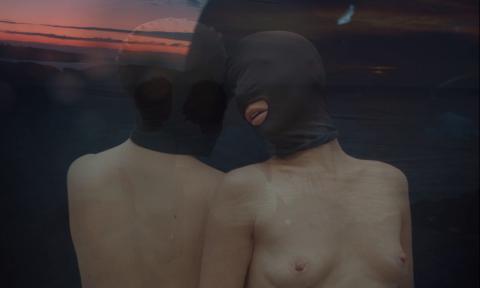
Transition du regard
An Interview with river, Filmmaker and Trans Activist
Whether working behind the camera, in casting studios, nightclubs, or on a football field, river is methodically helping trans and queer people gain visibility. For a long time, the film industry’s conservative structures only ever imagined the stories of trans people in pathos or fetishism mode. Now, figures from minority communities are instilling new narratives, in which they embody active subjects. In this interview, river discusses issues of representation and his own path, which he deliberately keeps more hidden.
-

Les voix tues du film de la justice
Interview with Filmmaker and Court Reporter Yamina Zoutat
There is a unique sort of drama to court proceedings. It is this shaping of reality which sparked Yamina Zoutat’s interest in filmmaking when she was a court reporter. In her films, Zoutat seeks to bring out voices consigned to oblivion, such as those of defendants’ mothers called to the stand, whose testimonies seem to have a secondary status.
-
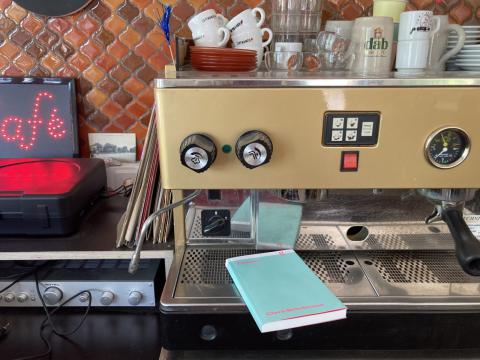
Les voix de la transmission
Interview with Art Historian and Critic Clara Schulmann
Marked out by authoritative voices and a proven research methodology, the academic path may seem fairly straightforward. In her book Zizanies, art historian and critic Clara Schulmann takes a different approach, allowing herself to be drawn in as she listens to the voices in her daily life: hers first, but also those of other women, be they podcast authors, thinkers, artists, or friends. Composed of fragments, Schulmann’s book forms a weaving of voices, drawing an intellectual and emotional landscape marked by feminism while also revealing the author's own line of thought. In this free-flowing conversation, Julie Enckell asks Schulmann about the implications of this personal transition within the pedagogical context.
-
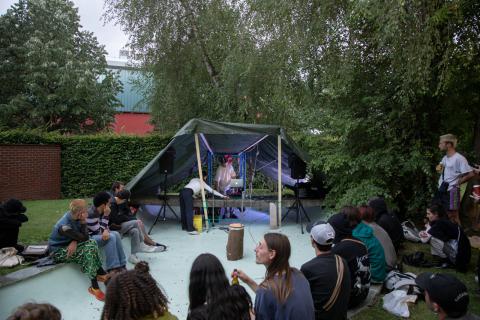
The Curator in the Courtyard with a Wrench
Interview with Roxane Bovet
Autonomous activities with their own peculiar rules and devoid of any identifiable utility, play and art have regularly met and entwined throughout history, particularly in the subversive project of the Situationist International. As the world and its interfaces engage us in an endless game, curator Roxane Bovet’s exhibition Forget Chess, presented as part of the inauguration of the HEAD campus in June 2022, proposed a rediscovery of the political and experimental essence of the game, i.e. its capacity to create experimental models in which social relations can be transformed.
-
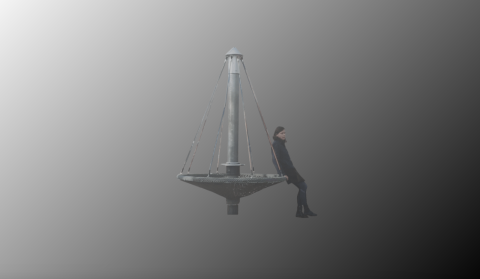
Talking Heads – Olia Lialina
Experience of Experiencing Experience
In this Talking Heads conversation with art critic Jill Gasparina and digital anthropologist Nicolas Nova, Lialina bears witness to the paradigm shift that took place in the 2000s with the passage from a user culture to a mass culture, where technologies have become invisible and indistinct.
-
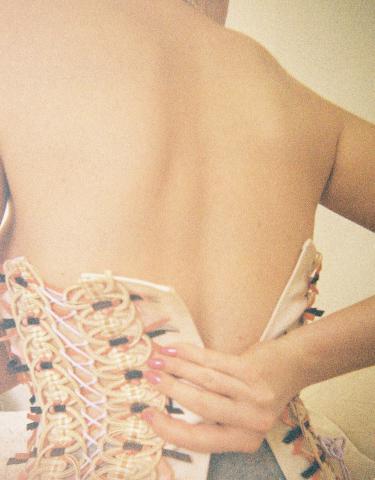
Tendresse
Louise Jarrige-Le Berre shows what is radical in tenderness – from the violence of a tenderness that is denied, to the tenderness of a protecting friendship, to that of a garment that builds, reveals, and restores. In her thesis, poetry and fashion converge to give voice to body language, making the muffled dialogues between bodies audible. Finding one’s form in the act of dressing, teaching yourself to get by with what you have, putting it into words: these are the issues raised in this work, resonating with the desire to define a poetic and political fashion practice, without which fashion is mere artifice. -
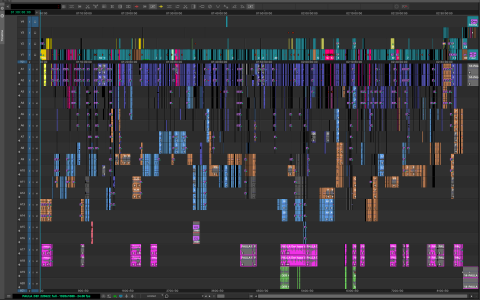
The Manipulative Magic of Editing
An Interview with Ael Dallier Vega
A crucial stage in the construction of a film – where rhythm, grammar and dramaturgy are redefined – editing remains a shadowy profession. Ael Dallier Vega is an editor and lecturer in the HEAD – Genève’s Cinema Department. In this interview with Delphine Jeanneret, she recounts how this immersive activity unfolds in the darkness of the editing room, processing hundreds of hours of rushes in order to bring out the director's vision, sometimes to the point of being engulfed in parallel temporalities. Active in fields as varied as fiction, documentary, art film and video clips, Dallier Vega notably edited Mati Diop's film Atlantique, which won the Grand Prix at Cannes in 2019. She has worked on new projects by artist Philippe Parreno, and regularly collaborates with Marie Losier, a fellow teacher in the Cinema Department. Dallier Vega recently edited Patrick Muroni's documentary Ardente-x-s (2022), about the Lausanne-based ethical pornographic film production collective OIL Productions.
-
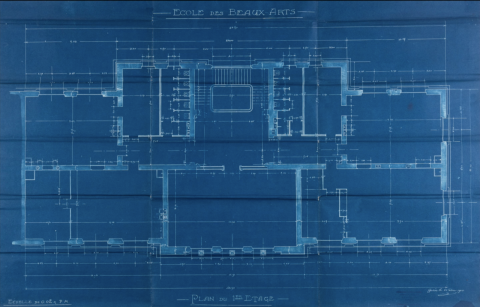
BH mon amour
Formerly scattered over several buildings in Geneva, the HEAD – Genève has now regrouped the majority of its activities on a new campus in the Châtelaine district. In 2021, the Visual Arts department in particular moved out from its historic building next to the Musée d’Art et d'Histoire on the Boulevard Helvétique – commonly known as BH – to a new site. A few weeks before its departure from these emblematic premises, covered with patina and graffiti, Michael Jakob was there to interview its users: ushers, cleaning staff, students, and teachers, who testified to their attachment to the charismatic space. The video that he created, which can be viewed here, pays homage to the venerable building as much as to the creative energy that was exercised there.
-
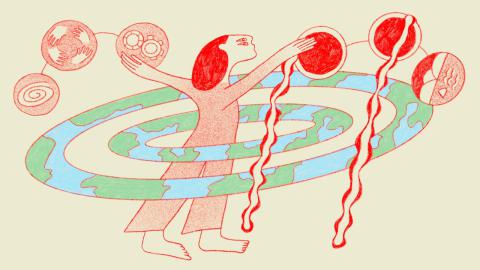
Dossier #13
Theses of today and tomorrow
It is now an established tradition: every two years, before summer, ISSUE publishes a selection of exemplary theses produced within the school's various Master's programmes[note]In Visual Arts: CCC, TRANS, Work.Master, and in Design: Interior Architecture d’intérieur, Space and Communication, Media Design, Fashion and Accessory Design.[/note]. Once again, the aim of this publication is not so much to present the best of the theses, but to offer an overview of the diverse issues faced by the school's graduates, and the original methods, often specific to art and design, that they use to tackle them. This second edition covers the 2021-2022 period, heavily influenced by the context of the pandemic. Its strong impact on the student community can be felt directly or implicitly in the choice of topics, how they are treated, and political engagement. Precarity, discrimination and inequality became more visible and unbearable during the various lockdowns, and run through the theses, for instance when questioning cultural activities in nursing homes (Camille Sevez) or narratives of African emigration (Mbaye Diop). The use of the first person, singular or plural, in a logbook (Oélia Gouret) and the experimental weaving together of voices (Loreleï Regamey) bring into conflict an active singularity on the one hand and power, be it patriarchal, capitalist or biopolitical, on the other. Digital tools, which made it possible for students to pursue their cognitive work remotely, are critically reassessed, whether it comes to the utopia of a supposedly immaterial Internet – whereas the Internet is actually heavily anchored in our physical environment (Chloé Michel) – or to virtual spaces where the multiplicity of genres, ethnical groups and world cultures fails to be represented (Tiki Bordin). Other research works show a desire to escape this anxiety inducing context. Patrycja Pawlik explores techno in Poland, which couldn’t be heard live during the pandemic, as a generator of immersive spaces. The retrofuturist architecture of the ski resort of Avoriaz as a catalyst for fantastical imaginary worlds (Robin Delerce) and the spelling out of author Karelle Ménine’s poetry on our cities’ walls offer other escape routes. By focusing on the blackout decreed by the British authorities during the Second World War to protect cities from enemy night bombing, Martin Zambaz's thesis can be read, for its part, as an allegory of those two years placed under the sign of silence. The HEAD’s editorial office put together this partial panorama of the concerns spanning our community at the school with the help of the heads of the various Masters programmes, with our warmest thanks for their contribution. Cover image: Elorri Charriton for ISSUE
-

En eaux troubles
How to continue producing, as an artist who belongs to a social group perceived as a minority? Behind the current openness of art institutions to so-called minorities, there are a number of difficulties for the artists involved, including Neige Sanchez, the author of this thesis. Sanchez, for instance, attests to the duty to represent a community, the feeling of being an alibi, the obligation to explain their reference codes. Their research considers a series of strategies that attempts to answer this initial question. The work of theorist Tina Campt on the politics of the gaze through black gaze and the development of a multisensory approach, of José Esteban Munõz on the processes of disidentification and fragmentation, and of painter Toyin Ojih Odutola on the re-creation of a mythified history through fictional and radical spatio-temporal displacement, all inspired Sanchez to propose a working methodology in which abstraction, opacity, diversion and multidimensionality impose themselves as modes of resistance and sustainability for the artist, in the face of market and institutional forces of recuperation, simplification and control. -
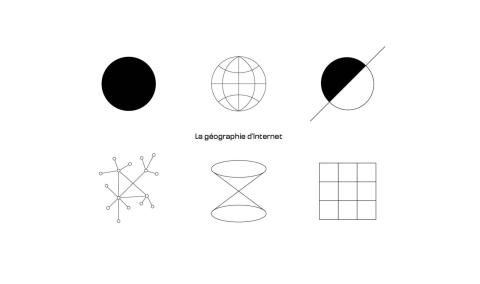
La géographie d'internet
The Internet is often considered to be something intangible. Yet it is rooted in a physical infrastructure that we all use every day. Why is its materiality so often forgotten? Why is it perceived as detached from the geographical world? This thesis analyses how the Internet has been represented visually and textually over the course of its evolution. Through six case studies, chosen for their historical importance or the importance of their dissemination, Chloé Michel observes how these representations have influenced our perception of the Internet as a geographically anchored space. -

Multipl*
Avatars In VideoGames: The Gender non-conforming experiences
The humans living on this planet are settled in the different habitable zones of the planet, and they represent a wide diversity of genders, ethnic groups, cultures, and others. However, cultural media such as virtual spaces, and video games have shown a different reality. In this “reality”, the universe seems to revolve around the “normal Human”, meaning the heterosexual white male, who is the protagonist of all of these narratives. Interweaving a close reading of existing literature and qualitative interviews, Tiki Bordin′s thesis emphasizes and speculates on how virtual worlds can serve a more inclusive approach in Video Games. -
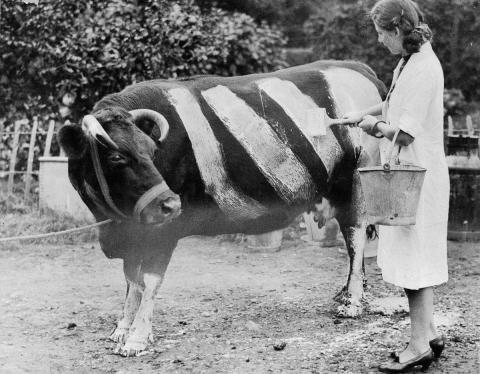
Les faussaires d'éclipses
Martin Zambaz explores a little-known historical episode, namely the blackout during the Second World War in Great Britain, when artificial lights were banned to protect towns and cities from German air raids. British authorities conducted numerous communication and propaganda campaigns to overcome the insecurity created by this unpopular measure. Zambaz analyses this production of messages to the population, from the most opportunistic ones – such as the call to eat more carrots to improve vision (actually aimed at selling off the abundant carrot stock) – to the most innovative, including the style of graphic design employed by the Royal Society for the Prevention of Accidents (RoSPA), which integrated progressive and federative values in a modern language to build up a sense of national unity in the face of the blackout. -

Karelle Ménine : rencontres entre le poème et la ville
In the city, the passer-by, in turn a stroller, a tourist and – more often than not – a worker in a hurry, is confronted with an overabundance of textual material: advertising signs, signage, but also the more informal repertoire of graffiti, activist inscriptions and urban frescoes. In an economic system that favours efficiency and speed, the existence of moments dedicated to reading and contemplation are becoming the privilege of a minority. Through an analysis of the practice of the Swiss author, historian and artist Karelle Ménine – who inscribes poetic texts in urban space – this thesis questions the politics of attention and the mechanisms of classist differentiation in the Bourdieusian sense, focusing on these contact points between literature and the city. -

République Tukki
In contemporary art, migrants are mostly represented from a dramatic angle. The denunciation of their fate once they have arrived in Europe, the risks of crossing the Sahara or the Atlantic, and the makeshift rafts on which they pile up underpin the imagery associated with migrants in culture and in the media. In his thesis, Mbaye Diop takes a more poetic viewpoint, focusing on the reasons for exile. A collection of anecdote-filled stories from the migrants of African origin that he met forms a song which gives a singular voice, and thus dignity and equal status, to this Tukki Republic (a Wolof word meaning travel). Diop’s thesis also stands out for its graphic aspect, with a layout based on scans of fake passport pages. -

Les vieux, les vieilles, l'art et l'institution
Camille Sevez questions our relationship with old age in this thesis, based on a painful personal episode in which her grandfather died alone in a nursing home during lockdown. While old age is always lengthening, 'old people' are still not considered as anything more than sick people waiting to die. Therefore they are confined to these ‘non-places,’ where even the food no longer resembles what it is. Sevez develops several hints for creative workshops dedicated to this disregarded segment of society, which she presents as illustrated instructions for use. A workshop in an old people's home however led her to question – with both humour and depth – the very relevance of her initiative, as an old people’s home clearly makes any collective creation effort sterile. The territory of the possible ultimately moves to a village, where it is easier to nurture social links through art. -
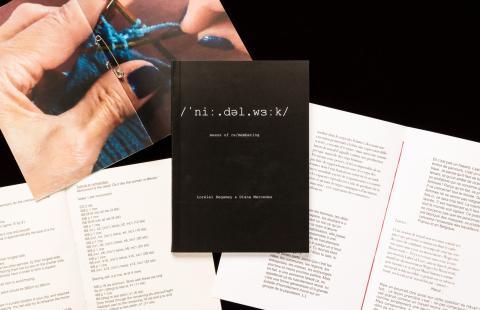
/ˈNIː.DƏL.W3ːK/
Means of re/membering
Taking the form of a poetic and theoretical experiment, Loreleï Regamey′s thesis seeks to bring together the various voices that have accompanied her in the course of her long-term research on the political and subversive dimension of needlework. These practices of knitting and embroidery, which symbolise the submission of women at home, have been reappropriated as a means of expression and subversion. Needlework was and is also a field of exchange and subjectivation through the feminine sociability it induces. Regamey uses the title Re/member this house by author James Baldwin as a way of drawing out a series of real or imagined figures from sweatshops, sewing rooms, slave houses, and ethnographic museums which, through the weaving of the narrative, reconstructs an ideal house of repair and memory. -
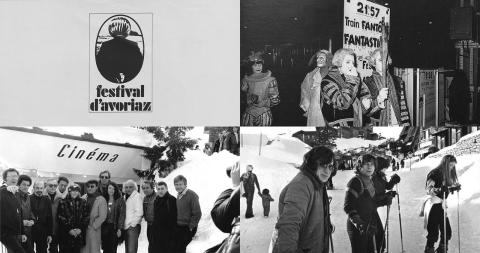
Les nuits fantastiques
L'utopie du festival d'Avoriaz
A planned settlement from the 1960s in Haute-Savoie, Avoriaz gained a strong identity in the popular imagination as an isolated, futuristic winter-sports resort made up of wooden towers and car-free streets thanks to the Avoriaz International Fantastic Film Festival, which fêted and promoted it from 1973 on. The Festival benefited from the advent of a new generation of filmmakers such as Steven Spielberg, Brian De Palma, David Lynch, John Carpenter, George Miller, Luc Besson, David Cronenberg, James Cameron, Paul Verhoeven, and Peter Jackson. For two decades, it was a gateway for many fans, largely contributing to democratising the fantastic-movie genre in France. Rich in archive material and interviews with the protagonists of the Fantastic Film Festival, this thesis explores the event’s marketing dynamics and analyses the circumstances that led to its decline. It is also an opportunity to question the Festival’s memory and legacy on the occasion of the 50th anniversary of its launch, set for 2023. -
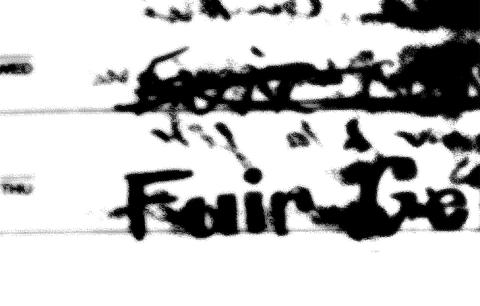
Fuir Genève
Train trips punctuate this thesis by Oélia Gouret, which takes the form of a travel diary, but also of a pandemic’s log book, an extraordinary period also marked by intense exchanges, readings and politicisation. Setting out becomes a mode of self-construction, of breathing and inspiration, of temporary wiring in a world that isolates and closes itself off. Following in the footsteps of an autofiction writer like Guillaume Dustan, Oélia Gouret offers a richly illustrated text, where mobility is akin to a refusal of institutional power and the development of an identity that Elspeth Probyn would describe as a form of "outside belongings". -

Technospace
The intangible elements comprising its architecture
Techno and rave culture, which grew and inundated the world at the beginning of 1990s, are the entry points for this study. The phenomenon of collective dancing, new formats of parties, music as a central actor and wild appropriation of various spaces are just few elements which constitute a history of raving. The story of Polish transformation after the fall of communism in 1989’ and the growth of techno scene there, is a main background for this thesis. Looking at the spatial evolution of techno spaces from their illegal, underground beginnings, to their commercialised mature phase, materialised in monstrous festivals and immersive interiors of techno clubs, Patrycja Pawlik explores current potentials of these temporal environments, where body and dancing still play crucial roles for self exploration and social belonging. -
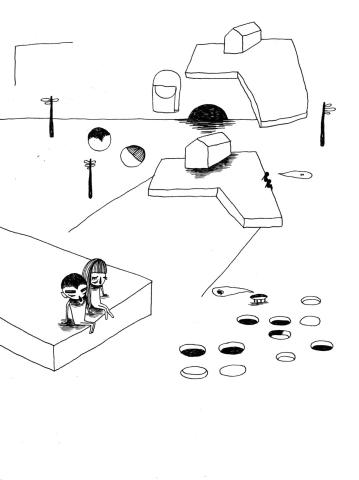
Text and drawing's «confrontention»
Vanishing flower pots that herald a world in decay, the death of a tombstone cutter that leaves a great void, and a nightmarish birthday surprise in the open country. These stories, imagined by three students in their second year of a Bachelor's degree in illustration, went through a series of stages before coming to life in the form of comics in pen, felt-tip pen or digital tablet. This article looks back on a year of illustration workshops through a selection of student productions, from the script to the adaptation into drawings and story-boards. The teachers who supervised these workshops discuss the methodological and theoretical issues specific to the different objects produced by the students.
-
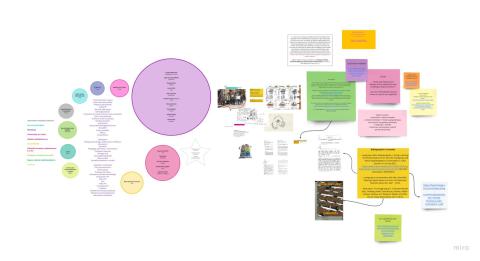
(Un)learning from Jakarta
On the 18th of June, 2022, documenta fifteen will open its doors in Kassel. The Indonesian collective ruangrupa run this new edition of the German five-year event, seeking to embed it in its own community-based and decentralised ecosystem. In a long interview conducted by the students of Marie-laure Allain Bonilla’s seminar, farid rakun – one of the members of ruangrupa – details the collective’s working methodologies, how their singular concepts open up to new curatorial epistemologies, and the relationships that have been established between their base in Jakarta and Kassel.
-
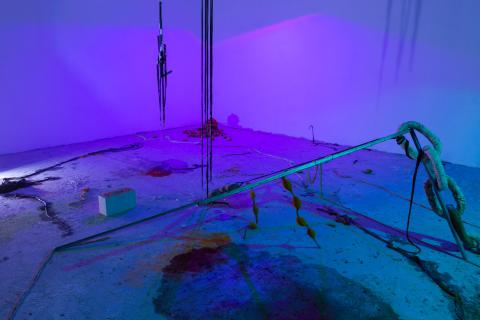
The Artwork's Ecosystem and the Materiality of the World
The notion of ‘ecosystem’ finds a strong echo in contemporary artistic practices. Influenced by the neo-materialist approach, which challenges the primacy of the subject and considers matter to be endowed with vitality, some artists showcase works that are open to mutation and alteration, of which they no longer are the operators. In this essay, David Zerbib posits that the ecological crisis first and foremost provokes a change of the human position in a polycentric network of plural agencies, before urging artists to withdraw from the productive system or engage in immaterial practices.
-
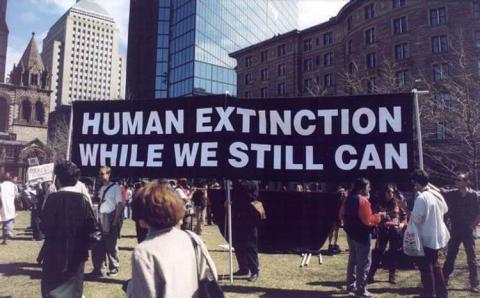
Dossier #12
De/Production Without Cons/Des/Truction
After a dream in which an extraterrestrial intelligence warned them that the planetary ecosystem was collapsing, the situationist artist and electronic musician Chris Korda founded their ‘religious’ Church of Euthanasia movement in 1992, which they endowed with a single commandment: ‘Thou shalt not procreate’ and a slogan repeated everywhere from house records to banners: ‘Save the Planet – Kill Yourself.’ Thirty years later, the grotesque comedy of this nihilistic stance hasn’t worn off, while its observations on the state of the planet appear all the more bitterly visionary and intra-terrestrial. Urgent questions arise in the face of the devastation of ecosystems and resource depletion. These emerge in a singular way in a school of Art and Design, where students are trained to produce objects.
How can art and design practice be combined with ecological issues? Does production necessarily imply a form of destruction? What forms might a turn towards deproduction take? This feature considers these issues via three complementary approaches. Firstly, it looks at the practicalities of measuring the impact of a project that makes it possible to acknowledge emissions and reorient practices in a virtuous way. The carbon calculator project initiated by Yves Corminboeuf, sustainable development delegate at HEAD, is presented here using the actual case of a Talking Head conference.
Historically speaking, the hypothesis of deproduction echoes different conceptual and critical practices that have questioned the status of the object or the directive to build a career. At a time when the utopia of digital dematerialisation is proving to be very energy-consuming, David Zerbib engages in a reflection on the contemporary dialectic of the material and the immaterial. Departing from conceptual art practices, he sees the emergence of ecosystemic thought within the very instability and multiple reconfiguration of contemporary artistic productions.
Logically speaking, the watchwords of this questioning of productive logic are resource conservation. The pursuit of this objective takes multiple paths and is often filled with joy rather than a sense of deprivation – as are Chris Korda’s songs. Removing, undoing, giving up, recycling, repairing, reallocating, sabotaging become practices in themselves. A series of articles in this feature focuses on a few radical practices, by historical and/or recalcitrant figures in art and design, but also by HEAD students and teachers who rethink their production, improduction or deproduction in the light of the ecosystemic challenge.
Cover image: Church of Euthanasia, CC-BY-SA 3.0
-
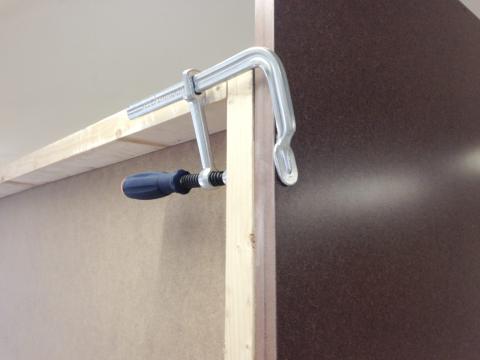
Design Creation and Sustainability
Some Concepts for a Less Harmful Design Conception
Yves Corminboeuf is a pioneer of sustainable design in Switzerland. A lecturer and delegate for sustainability at HEAD, he helps numerous organisations to take into account the ecological issues specific to their model of production. He is also active in the field of reuse through Matériuum, a much-appreciated upcycling centre in the cultural sector that collects and sells construction materials. In this interview with Elizabeth Fischer, which features a long introduction, Corminboeuf looks back at the origins of the notion of eco-design and how designers can limit their impact on the Earth system’s resources.
-

An Innovative Report on Old Technologies
An Interview with Low-Tech Magazine Founder Kris De Decker
New technologies often come with harmful side effects, on both the ecological and psychosocial levels. Rather than putting the emphasis on novelty, Kris De Decker tries to address our human needs with articles about forgotten technologies, recycling, repairing, and ingenuity. De Decker publishes his articles online on Low-Tech Magazine, which he founded in 2007. The creation of a low-energy version of the Low-Tech Magazine website – powered by a solar panel installed on his balcony – not only combined the medium with its content, but demonstrates the creative potential to be gained from frugality. Design teacher and researcher Nicolas Nova (HEAD – Genève, HES-SO) – himself the author of a research project on cell phone repair stores – talks with De Decker about his exciting and inspiring editorial project and tackles the political significance of a paradigm shift from production to de-production, maintenance and repair.
-
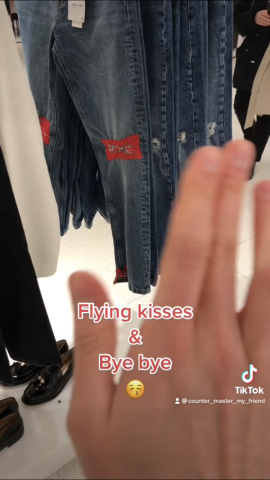
Radical Acts of Love
In addition to being one of the world’s most polluting industries, fashion subjects its workers to some of the most degrading working conditions. In the face of these abuses, consumer mobilisation remains negligible. Based on this observation, Mikhail Rojkov has launched a series of awareness-raising actions, including the repair of new ripped jeans that he puts back on the shelves to point out the system’s excesses and absurdities. However gentle and caring, such interventions trample on certain principles at the heart of capitalism, including private property. In this text, Rojkov discusses the boundaries between vandalism and embellishment, and the potential for political transformation concentrated in a thread, a needle and an act of love.
-
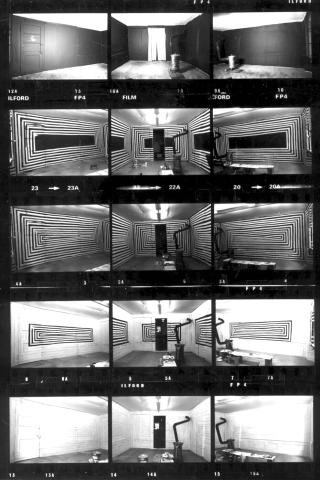
The Freistilmuseum twenty years later
In recent years, historians have taken an avid interest in the radical withdrawal from the art world and/or political activism of certain figures, with diverse motivations and backgrounds, such as Carla Lonzi, Lee Lozano, Shulamith Firestone and Agnes Martin. The Freistilmuseum (free-style museum) was initiated by three Aargau artists in the 1970s. Although the museum isn’t part of this feminist genealogy, it sheds its own light on distance from the art market and working from the periphery, through a materially non-productive activity akin to a form of mediation. As a student, Julie Enckell Julliard got enthusiastic about the critical counterpoints created by the Freistilmuseum when it introduced everyday objects into exhibitions by other artists. Twenty years later, she re-examines the eco-systemic value of this practice of relating. -
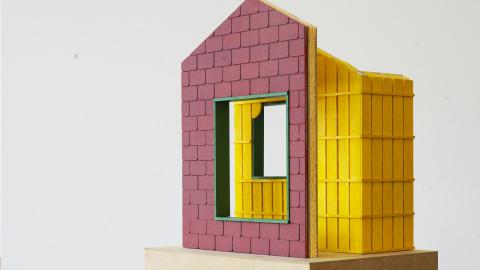
Architecture without new architecture
Architecture has long been synonymous with construction. The realisation of the destructive dimension of such an enterprise on a global scale is now pushing architects to consider other ways of pursuing their practice. Nobuyoshi Yokota's project for Leonid Slominsky's RE:WORK studio in the Interior Architecture Master’s offers to repurpose an abandoned railway guard house in Crans-près-Céligny, in the La Côte vineyards, as a place to learn the wine trade. Through minimal architectural interventions, Yokota endows these remains of the early days of railway with a programme that links ecological, social and economic thinking. -
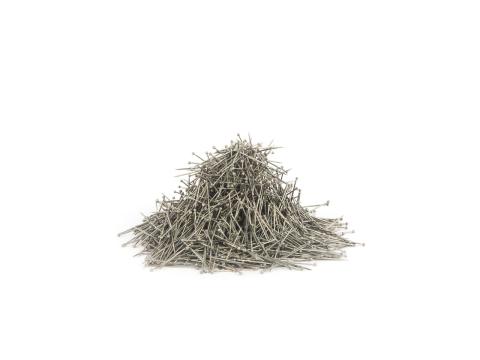
Between concept and competence
The handmade in the work of Zoë Sheehan Saldaña
In 1981, Ian Burn posited that conceptual art was responsible for a loss of manual skills among artists. By putting the emphasis on conception, artists have deprived themselves of the specific knowledge that was previously at their disposal when they painted and sculpted. In this landscape of deskilling, Zoë Sheehan Saldaña chose to take a paradoxical position. Since the early 2000s, she has been exploring industrial modes of production by reproducing consumer goods by hand or by craft. Her practice gives rise to a history of the organisation of work and capitalism in which Ileana Parvu sees the possibility of slowing down. -
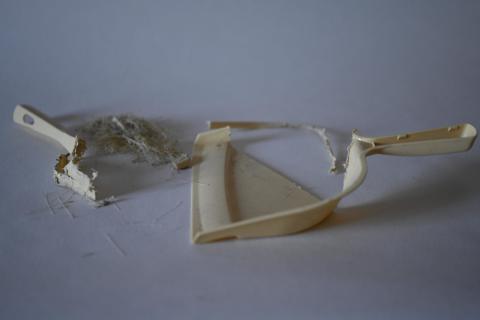
From User-Centred Design to Design that Removes
User-centred design has imposed itself solely on the development of computer interfaces and protocols. Far from being neutral, on the contrary, this approach to design is biased, because it is based on certain clearly identified users – workers, consumers – while other more precarious populations, or those with less formatted practices, remain in its blind spot. Reducing an object's thinking to its sole use also comes at the cost of a more global reflection which could integrate, for example, the waste the object will eventually become. At the invitation of the Rennes Digital Tech Conference 2021, Anthony Masure, head of research at HEAD – Genève (HES-SO), and Brieuc Saffré, director of the Circulab circular design agency, started a critique of user-centred design in order to consider other avenues, from citizen-centred design to design that removes rather than adds. We publish here an audio version of this discussion moderated by Julien Vey, president of Saint-Malo’s Institut supérieur de design.
-

Design of the Mind
Cold War spy films bear witness to a polarity between overt technophilia and a critique of technology’s hold on the human mind. In this text, which prefigures an exhibition that Alexandra Midal is preparing on this analysis of a section of post-war cinema, the HEAD – Genève, HES-SO design historian compares the gadgets of the James Bond franchise, which suggest that technical innovation can solve any operational difficulty, with films such as The Ipcress File, in which the spy has to face up to mental manipulation techniques that were then being experimented with in the CIA’s secret laboratories. As a multi-sensory system of images projections, cinema reflects itself in these films about brainwashing. -
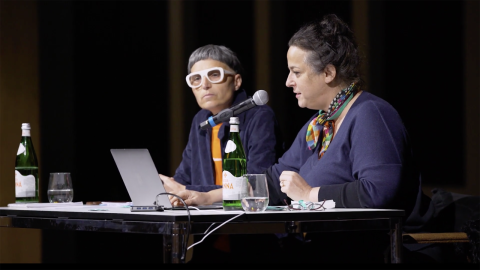
How Much CO2 Universities Release?
Case Study of a Talking Heads Series Lecture
The HEAD and the HEG have joined forces to develop a carbon calculator to measure the impact on the climate of the activities of the Universities of Applied Sciences and Arts (HES) in French-speaking Switzerland. Led by Anthony Masure, Yves Corminboeuf (HEAD – Genève, HES-SO) and Laurent Cornaglia (HEG), this research project is currently in its final development phase. It will then be available via a self-service application. For this feature, we have calculated the emissions of matali crasset’s lecture in January 2022, using this tool.
-
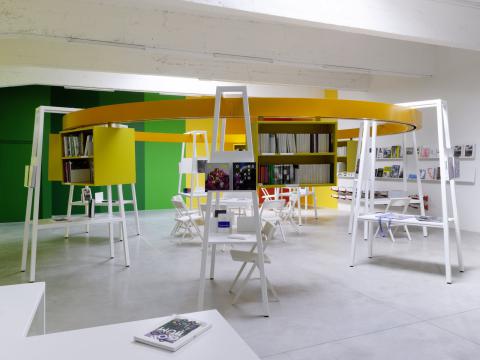
Talking Heads – matali crasset
matali crasset is an admired designer, known for her public commissions and numerous editions with brands. In this Talking Heads event hosted by Alexandra Midal, crasset addresses the more subterranean and essential aspects of her work, touching on politics and the role of the designer in a damaged world. Between a side step that leads into the neighbour's house, a thought of the object in its multiple layers of sensibility and what she calls the ‘dwellings of restitution’ – which are hypotheses of housing in direct relation to the environment – crasset transmits an idea of design as a point of mediation between ‘sensing’ beings and nature.
-
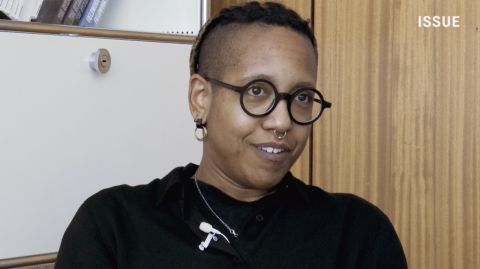
Head to Head – Nayansaku Mufwankolo
In this video portrait dedicated to them, the delegate of Diversity & Inclusion at HEAD – Genève, Nayansaku Mufwankolo, highlights the different stages that have allowed them to develop their practice. From poems initially confined to private notebooks and now developing into space, to academic studies on the official history of art which lead to the affirmation of an intersectional thought through the means of art, the path of Nayansaku Mufwankolo is marked by a desire for transmission and to break free from dominant dogmas.
-

No Monument
A CCC alumna, artist and activist, Marisa Cornejo made a film on the events that took place on Santiago’s Plaza Italia, which became the Plaza de la Dignidad on the 18th of October, 2019. For several weeks, demonstrators gathered there in the face of police repression to demand better social justice and the repeal of the Constitution inherited from the Augusto Pinochet regime. On the 13th of March, 2021, the government removed the statue of General Baquedano; a symbol of Chilean divisions which stood in the centre of the square and had just been damaged. A military hero for some, a genocidaire of indigenous populations for others, Baquedano left in the middle of the night, through the back door. Cornejo teamed up with her daughter Katya Kasterine and Cecilia Moya Rivera (a CCC student) to add to the film a multi-voice essay, a diary of the protest, published in English and Spanish. Together they weave together memories of a country criss-crossed with multiple conflicts, hopes, violence and inequalities, where the absent presence of the statue of the general has become a leitmotif. This article is a new episode in and the coda of a feature published last year: All Monuments Must Fall.
-
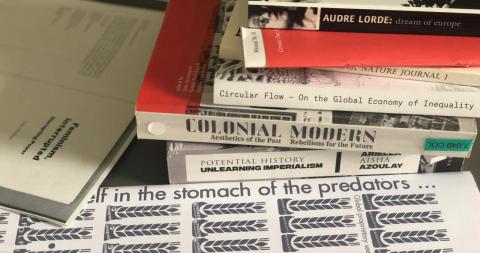
Femmage to Marion von Osten
This article pays tribute to the artist, exhibition organiser and researcher Marion von Osten, who passed away in November 2020. A pioneer both in the field of research-based practice and in her decolonial approach to modernity, von Osten taught for several years at the HEAD – Genève’s research programme, CCC. Doreen Mende discusses von Osten’s influence on the programme, while Basel-based editor and researcher Lucie Kolb points out how von Osten always sought to connect the concerns of arts programming to the material base in which the art itself was rooted. -
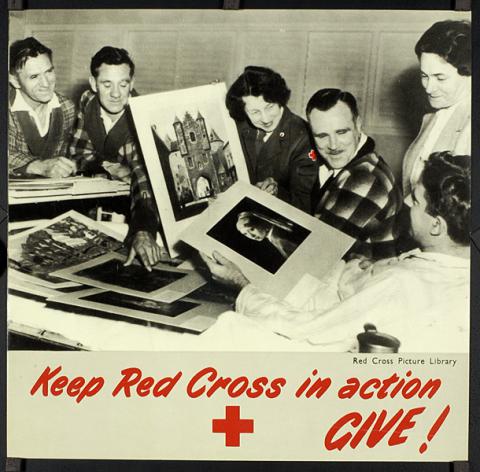
Dossier #11
Art and Humanity: What Is Possible? Video Footage of the Symposium
This feature brings together the fields of art, culture and humanitarian action as explored during the online symposium ‘Art and Humanity: What Is Possible?’, organised by the International Red Cross and Red Crescent Museum (MICR), the HEAD – Genève and the International Committee of the Red Cross, in partnership with the Geneva Red Cross, on the occasion of the exhibition Concerned. 30 Artists on Humanitarian Issues on view at the MICR in Geneva from 27 April to 26 September 2021. This multi-disciplinary approach aims to create links and explore potential collaboration between these fields of expertise which seldomly interact with one another. Today’s humanitarian problems are more complex than they appear at first sight. Conflicts are becoming more drawn-out. It is not always clear who the protagonists are. The reasons for conflicts are often hard to discern and their level of violence is not linear. Natural disasters are more violent, more sudden, more frightening, and affect all levels of society. We are taking stock of the impact of pandemics, and all the unknown factors associated with them. The digitization of our societies is introducing new humanitarian issues; we hear talk of cyber warfare, the impact of fake news and propaganda on civilians and the dilemma of the digital divide.
In the face of these challenges, are proposed a number of questions: can art enable us to grasp these complexities and give them meaning? By creating space and time for reflection in ways that differ markedly from those offered by the media, can works of art that address humanitarian issues help us achieve a more nuanced and concrete understanding? How can we ensure that representations of these issues betray neither the people affected nor the situations themselves? Can public, artists and humanitarians benefit from getting to know each other better and learning from each other? Does a dialogue between art and humanitarian action promote individual and collective commitment? What can artistic imagination do when that of a whole people is reduced to ruins? Can the artist play the role of mediator? With humanitarian issues mainly viewed through the media, how can we better relate them to everyday life? Even though humanitarian crises are often in the headlines, they feature as pieces of information, like so many others, mediated through channels such as screens, newspapers and radio that can be laid aside at will. It is easy to keep them at a distance. As a result, it can seem that they are happening elsewhere, far away from us, and only affect others.
And yet these questions are not as distant from our own reality as we might believe. We have all been feeling a degree of vulnerability and distress with the continued experience of the COVID-19 pandemic. We are all aware of climate change and the effect it will have on our daily lives – especially our access to resources. And we have observed the rise of extreme nationalism and vengeful, warlike rhetoric in many parts of the world. Could it be that we will all be directly affected by a crisis, sooner or later? Julie Enckell Julliard (HEAD – Genève), Pascal Hufschmid (MICR), Philippe Stoll (ICRC) Cover image: Anonymous, Keep Red Cross in action: Give! 1955–1957, MICR archives (ARR) -
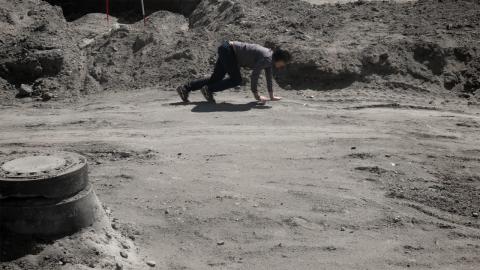
Jouer à être humain
An Interview with Sylvie Boisseau, Frank Westermeyer and David Zerbib
Sylvie Boisseau, Frank Westermeyer and David Zerbib publish the ebook Jouer à être humain (Playing at being human), the result of a two-year research project (HEAD – Genève, HES-SO) which brings together video experimentation and philosophical hypotheses. In it, Boisseau, Westermeyer and Zerbib test Helmuth Plessner's theory of positionality, according to which plants, animals and humans are differentiated by their distinct relationship to space.
-
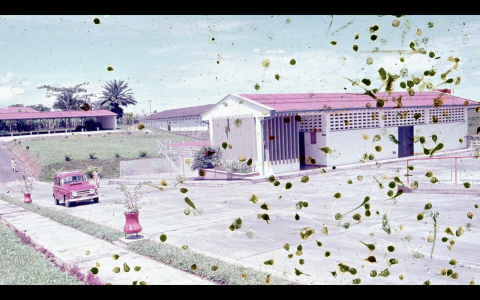
Art and Humanitarian
Impacting
This series of presentations looks at some concrete cases in which art and humanitarian aid work together in crisis areas. The speakers bear witness to the positive impact of art, both in their experience as viewers and in their practice. Katarzyna Grabska’s presentation offers final reflections to wrap up the symposium.
-
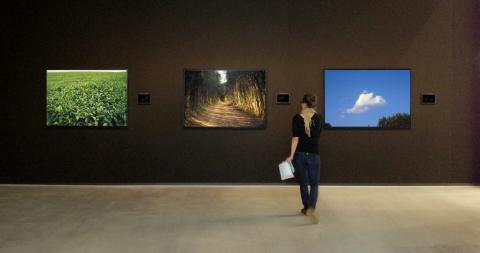
Art and Humanitarian
Learning
Artists who are attentive to humanitarian situations raise the question of the gaze in the face of vulnerability and appraise the risks of voyeurism. More generally, the speakers in this section reflect on the agency of an artwork in how it arouses complex aspects of cognition and emotion.
-
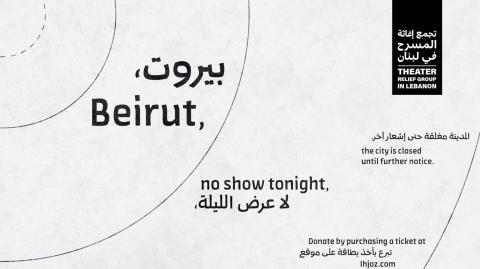
Art and Humanitarian
Engaging
These conferences tackle the issue of engagement. Beyond representation, how can art enter into dialogue with communities in the grip of humanitarian crises? Through projects in Kenya, Afghanistan and Beirut, the speakers evoke the healing potential of art. The model of Greek tragedy is also introduced as a way of exploring and purging personal and collective trauma.
-

Art and Humanitarian
Looking
These lectures question the related, though sometimes competing, notions of ethics and aesthetics. Certain symbols make it possible to connect these notions. Similarly, a dialogue between distant perspective and field action allows for the development of a positive entanglement between the two categories.
-
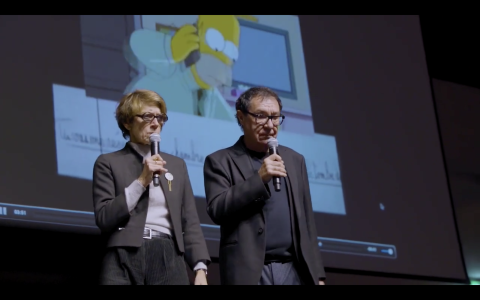
Talking Heads – La voix dans tous ses éclats
With Véronique Auguereau, Philippe Peythieu, Olivier Lebrun, Marge & Homer Simpson
Actress Véronique Augereau and actor Philippe Peythieu are the voices behind the French Marge and Homer Simpson. For this Talking Head, Augereau and Peythieu sit down with graphic designer Olivier Lebrun, author of the cult book A Pocket Companion to Books from The Simpsons. While sharing their own dubbing anecdotes, they address the importance of the voice in cinema and acting, the emergence of talking pictures, the technique and know-how of dubbing actors, artificial voices, and the longevity of Matt Groening's libertarian and rebellious Simpsons.
-
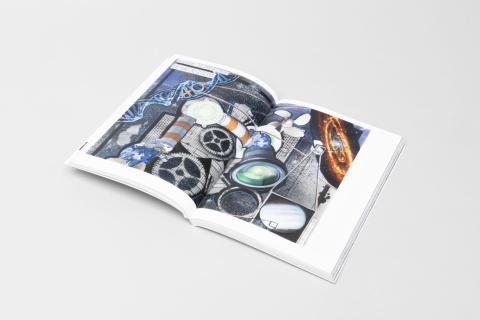
Strong Interaction
Scientific Observation Put to the Test by Photographic Observation
In recent years, the Photography Pool of HEAD – Genève has organised two transversal workshops in collaboration with CERN, the EPFL’s Biophore and the Geneva Astronomical Observatory. In 2017-2018, the "Figures" workshop led to the publication, Un signal sur un bruit de fond. In 2019-2020, Infiniment infini was the title of both a second publication and the workshop from which it stemmed. Both publications are accessible in PDF in this article. Artist and curator Annette Amberg was invited to bring these two years to a close with a text of her own creation, which we also publish here. In it, Amberg reflects on the place of CERN in culture, also analysing the tensions between technological development – which includes increasingly sophisticated visualisation and representation tools – and the tangible space-time to which human relations are limited.
-
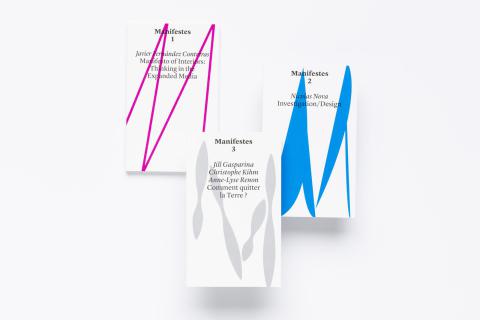
Autopsy of an Editorial Experiment
HEAD – Publishing's Multi-Platform Books Collection Manifestes
The HEAD – Genève’s policy is to defend access to the knowledge it produces. To this end, the HEAD launched a new multi-media editorial unit called HEAD – Publishing, whose first collection, Manifestes, brings together short, incisive theoretical texts by teachers and researchers from the school. HEAD – Publishing’s originality lies in the fact that it offers these works in the form of printed books sold in bookshops, but also in print-on-demand, free ePub versions and screen reading on the HEAD – Publishing website. The books were designed through an innovative process that questions the relationship between printed and digital books. The initiators of the project – Julie Enckell Julliard, Anthony Masure and Dimitri Broquard – report here on this editorial experience.
-
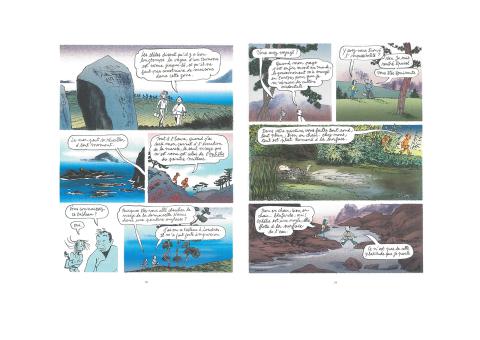
Catherine Meurisse's Pantheon
An Interview with Comics Artist Conducted by Benjamin Stroun
As part of a research project, Benjamin Stroun (HEAD – Genève, HES-SO) sat down with Catherine Meurisse, author of the comics La Légèreté (Dargaud, 2016), Les Grands espaces (Dargaud, 2018), and more recently La Jeune femme et la mer (Dargaud, 2021). Meurisse is also known for her long-standing collaboration with the French satirical newspaper Charlie Hebdo. Here is an audio extract of this interview, in which Stroun questions Meurisse about her relationship with comics; a genre for which she has momentarily set aside press cartoons.
-
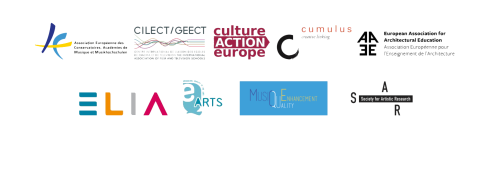
What's Wrong with the Vienna Declaration?
Artists are largely absent from both the process and the content of the Vienna Declaration on Artistic Research. In their critique of this international policy document, Florian Cramer and Nienke Terpsma recall the foundational role of artists in the practice of art research and propose on this basis modes of research that challenge and subvert the hierarchical academic framework rather than merging with it. The original version in English is accessible here. -
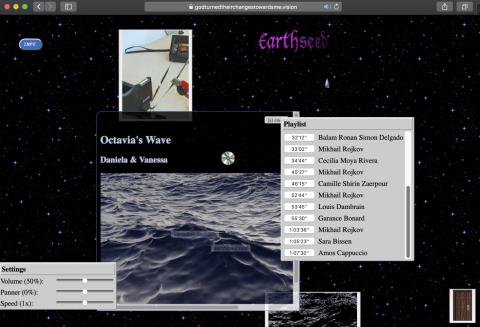
A Charter for Advanced Practices
A Collective Proposal to Rethink the Value of Artistic Research
The European Forum for Advanced Practices (EFAP), an informal forum of artists, theorists, philosophers, educators, performers, curators, musicians, urbanists, anthropologists and other cultural actors across Europe and beyond, has assembled to propose new ways of recognizing the values of contemporary cultural practices. The EFAP Charter for Advanced Practices takes the form of a preliminary communication is hoped to become an expanded conversation across the fields that have been at the forefront of significant shifts in what is recognized as research and of its place within the trajectory of practice. There is an investment here in new ways of multiplying and proliferating how practices instantiate forms of open source research as opposed to new forms of excellence. We publish a translation of this text, whose original version in English is accessible here.
-
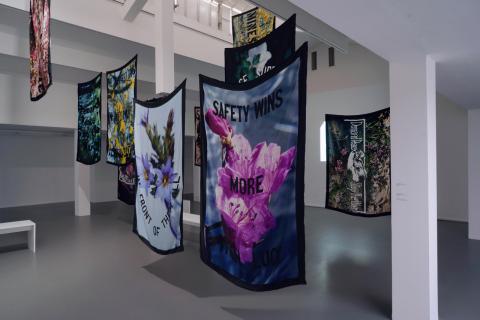
Dossier #10
The Controversial Institutionalisation of Artistic Research: Comments on the Vienna Declaration
In June 2020, European umbrella organisations for higher-art education came together to produce a document called the Vienna Declaration on Artistic Research. The aim was to provide a framework for artistic research, in terms of both objectives and outcomes. The declaration recalls and continues the work begun by the 1999 Bologna Declaration, which led to the harmonisation of academic education in Europe through the LMD reform (Licence/Bachelor’s, Master’s, Doctorate). While it hasn't yet been much talked of, the Vienna Declaration does contain some controversial proposals. Nienke Terpsma and Florian Cramer, two art researchers who claim non-academic status, wrote a text in January 2021 entitled, "What is Wrong with the Vienna Declaration on Artistic Research?”. We are publishing it along with a translation in French, as we feel it necessary to open a debate on these issues. Indeed, the Vienna Declaration, which Terpsma and Cramer judge reductive and neo-liberal, was developed without consulting the people who would be affected by it, namely the artists. This feature culminates in an interview with Anthony Masure (Head of Research at the HEAD – Genève) and a statement by Doreen Mende (Art Researcher and Head of the CCC Visual Arts Master’s), both of which reflect the position of the HEAD – Genève, notably in its defence of research-creation. Lastly, we publish another charter by a collective of art practitioners which offers an alternative and resistant vision to the Vienna Declaration’s attempt to control artistic research. At the crossroads of multiple issues and ideologies, this field oscillates between the need for funding and legitimation on the one hand, and the art-specific demand for freedom in its formats and methodologies on the other. Sylvain Menétrey Cover image: Denise Bertschi, Oasis of Peace. Neutral Only On The Outside. Exhibition view, Centre Culturel Suisse Paris, 2021, photo: Tristan Savoy. Denise Bertschi is currently working on a PhD in art at HEAD – Genève.
-
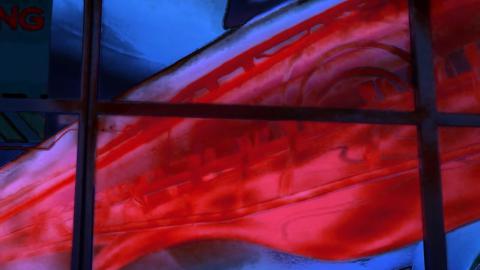
Principles for an Open-Ended Artistic Research
Statements by Anthony Masure and Doreen Mende
As a member of one of the signatory umbrella organizations of the Vienna Declaration on Artistic Research – the Society for Artistic Research (SAR) – the HEAD – Genève is indirectly linked to this declaration. However, the HEAD advocates for and develops research formats that depart from an overly academic, or application-oriented, framework. In an interview, Anthony Masure, Head of the Research Institute at the HEAD, describes the school’s initiatives to develop an heuristic research process driven by creation and whose restitution can bypass the academic text. In addition, Doreen Mende, Researcher and Head of the CCC Research-based Master Programme, discusses the political role of advanced art practices in their dissemination of knowledge and how they deconstruct historical hierarchies, which, conversely, the Vienna Declaration tends to rigidify.
-
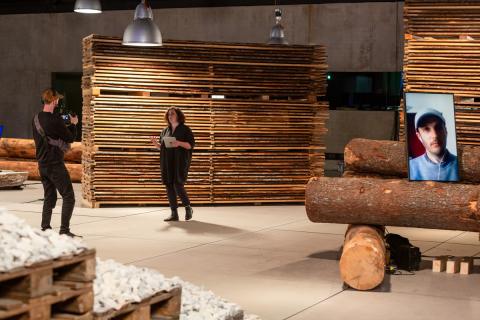
Impressions of Archipelago: Architectures for the Multiverse
A Selection of New Ideas to Build Differently
Renewing architecture and its paradigms for a future full of unknowns, in a multiple and archipelagic world, subject to the depletion of resources and the challenge of climate change; such was the ambition of Archipelago, an event jointly organised by HEAD – Genève and HEPIA. Dozens of international practitioners and theoreticians took part in meetings that were broadcast in livestream from the HEAD Cube auditorium, transformed into a television studio for the occasion. This article looks back at a selection of scenarios evoking a radical change of the discipline of architecture, including that of ceasing to build.
-
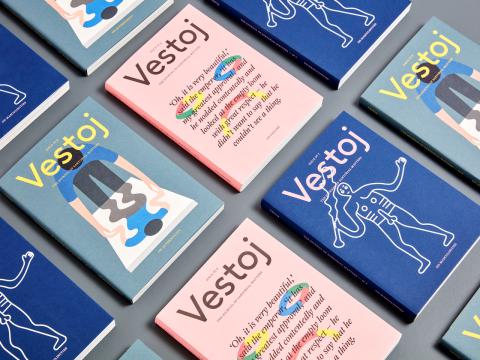
Fashion studies
Conversation with researcher and Vestoj magazine founder Anja Aronowsky Cronberg
In the spring of 2021, the Fashion Department invited Anja Aronowsky Cronberg to talk to students about her experience as the editor of the magazine Vestoj. Cronberg was a pioneer in developing an academic theoretical approach without denying a love for the glamour of fashion. An abridged version of this conversation, led by Aude Fellay, is presented here.
-
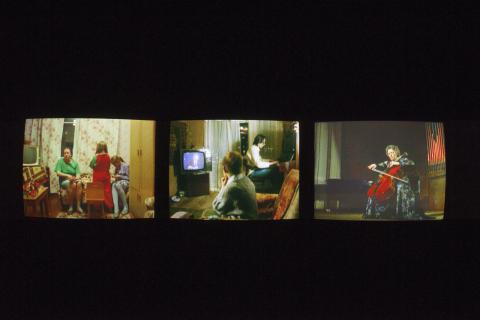
Politics and Aesthetics of Film Montage
From Cinema to Installation
Against a deluge of images, certain forms of montage, compilation and spatialization allow for a critical engagement with images. Doreen Mende looks back at the approaches of Soviet women editors and the artist Harun Farocki, who distinguished themselves in this emancipatory "new pedagogy of images," while Claire Atherton evokes Chantal Akerman's film installations and Olivier Zuchuat looks at the internal construction of Roy Andersson's shots, which are conceived as paintings.
-
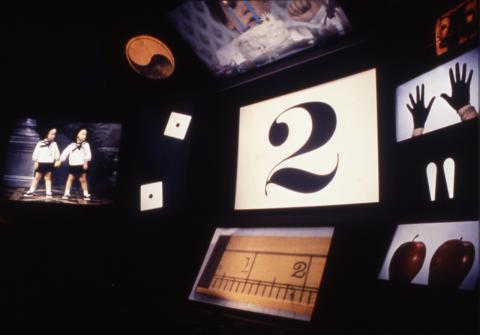
Film Montage and its Effects
Montage is one of the privileged instruments of cinema for directing the attention and emotions of the spectators. Alfred Hitchcock, who defined himself as a director of spectators before being a director of actors, agreed with this. This series of lectures looks at several experiments and theories related to the effects that montage produces, from the manipulation of minds through subliminal images, to the discoveries of the Russian theorist Lev Koulechov on the meaning that emerges from the interaction of shots, and finally to the contemporary technique of oculometry, which determines where the gaze lands in an image.
-
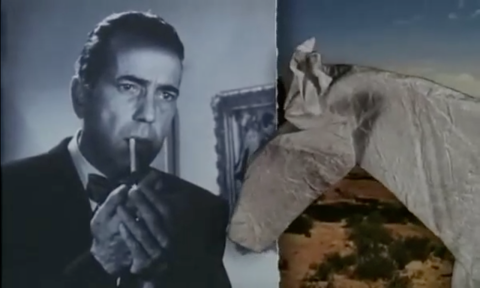
Dossier #9
Editing Arts International Symposium: Video Footage of the Talks
In March 2021, the Cinema Department organised Editing Arts! Montage en mouvement, an international symposium on montage in cinema and the contemporary arts, both retrospective and prospective. Starting with the major features of cinematographic montage (alternating montage, parallel montage, oppositional montage), speakers from different fields of contemporary culture were invited to discuss the mutations and evolutions encountered in the practice of montage in art and design (scenic arts, visual arts, architecture, music, literature, comics, video games, etc.) and to observe the way in which these changes can influence cinema’s forms. This symposium was a continuation of the Start Making Sense! Cinéma et arts contemporains transforment l'essai symposium, organised in 2013, and Montage. An anthology (1913-1918), a book co-published with the MAMCO in 2018. The symposium offered to rotate between fundamental lectures on montage, dialogues between theorists, critics and artists, and performances and film screenings. Thanks to Lorin Wüscher for the video editing, Mathis Damour for the sound recording and Aurélien Haslebach for the Zoom coordination Cover image credit: Fast Film, Virgil Widrich, 2003
-
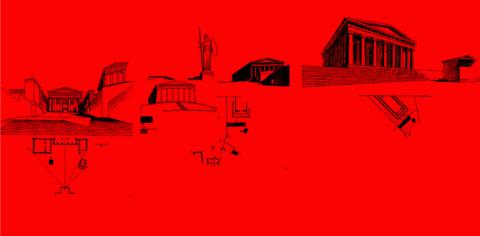
Sound, Narrative, Performative and Spatial Sequences
These lectures highlight the physical and material dimension of montage in various contexts outside cinema. Through musical composition, theatre, architecture or literary creation, montage can be a technique as much as a subject or a metadiscourse; one that reveals its seams in transpositions outside the field of the moving image.
-
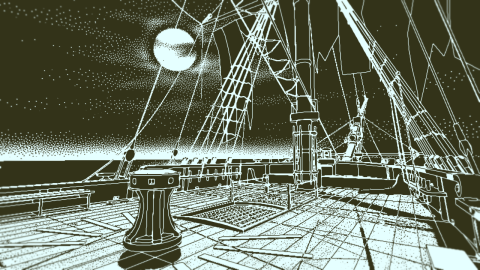
Juxtapositions and Hyperlinks
Montage from Comics to Digital Cultures
This series of lectures approaches the notion of montage in arts and activities close to cinema such as new media, video games and comics. Freeing himself from cinemacentrism, Frederik Peeters defends the position that montage in comics takes place in the reader's mind, while Selim Krichane also points out the difference of video games as the art, first and foremost, of immersion. Digital cultures, for their part, bear witness to a montage process that escapes the singular figure, becoming collective in the case of the fans detectives into which Chloé Galibert-Laîné is looking, or even automated by algorithms, according to the research of Nicolas Nova.
-

Inside the Box
An Interview with Morag Keil about Remote Art Teaching and Making
Through videos, immersive installations and drawings, Morag Keil looks with disillusioned humour at the impact of what Shoshana Zuboff famously called surveillance capitalism. The multiple lockdowns and calls to telecommute during the Covid-19 pandemic only reinforced this economic model, making the precariousness of life in gentrified urban territories even more sensitive. A Work.Master guest lecturer in 2020-2021, Morag Keil comes back to her experience of teaching remotely, including the methods she set up to sketch out a digital community with her students. Together they created the film Great expectations/ broken dreams, about an alternative art school of their imagination.
-
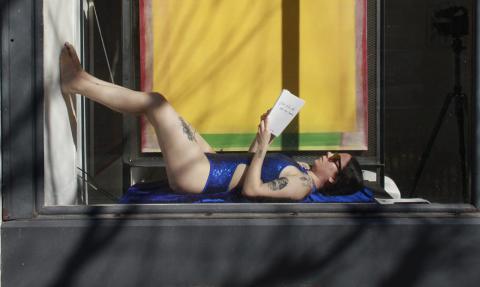
Agence de tutorat artistique
An Interview with Collective Medium Sans Serif and a Performed Reading by Inès Berdugo
The history of artists is marked by two contradictory impulses: first, to free oneself from the judgement of institutionally approved personalities, and second, to overcome one's own solitude. This double fantasy acts as a motor, as resistance, as a displacement that often leads to the creation of new forms or artistic communities with variable self-management formats. In 2020, three graduates of the Visual Arts department (Justine Salamin, Eliot Ruffel and Samuel Cardoso) formed the Medium Sans Serif collective to offer support to young artists. Through discussions, "critical sessions," editorial production and curatorial projects, they aim to support and nourish the reflections of young graduates after their training at the HEAD. The approach took root at the Galerie Alexandre Mottier, at a time when the gallery was looking to reinvent itself.
-

The Secrets of a Film Script
An Interview with Director Carmen Jaquier
It is rare to read excerpts from a film script that is still in post-production. Between two editing sessions, Carmen Jaquier discusses the writing of her second feature film, Les Paradis de Diane, which tells the story of Diane, a thirty-year-old woman on the run after giving birth to her first child. Co-written with Jan Gassmann, who also co-directed the film, the script was initially developed between September 2014 and June 2016 within the HEAD/ECAL Film Master’s. Although the substance of the film was already present in this first version, the story has since changed significantly. This interview conducted by film critic and peer director Mariama Balde highlights the often winding journey of a film, from the first idea to editing.
-
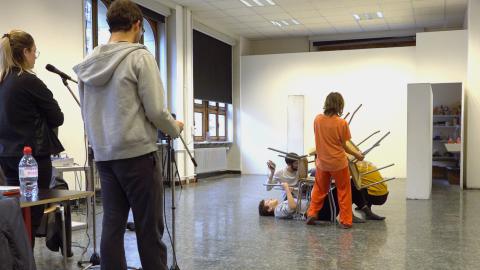
Badaboum
The Badaboum collective was created in 2018 in Geneva during a workshop delivered as part of the [inter]action major in Visual Arts. Until 2020, Badaboum carried out a whole series of experiments, the purpose of which remained mysterious to many. Its members gathered around practices of action, observation, description and reconstruction. 50 copies of a book recounting the activities of Badaboum were printed. We are making the book more widely available here by publishing it as a pdf. -
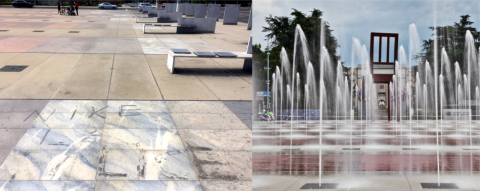
Must (monumental) Water Fall Too?
The liquid element is omnipresent in Geneva, a city known for its harbour, its Jet d'Eau, rivers and fountains. Yet numerous infrastructures also channel and domesticate this water in a draconian way. In this text, the author attempts to bring out a Genevan spirit in the examination of water-related monuments in the city at the end of the lake.
-
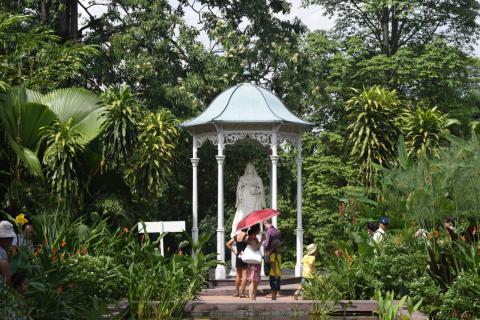
Monuments of the Mind
In 1996, shortly before the handover of Hong Kong to China, an artist sprayed the statue of Queen Victoria with red paint and disfigured it with a hammer. The meaning of this action remained ambiguous. Was it an attack on British colonial power? A return to the methods of the Cultural Revolution's Red Guards? Or the broader idea of one empire succeeding another? In light of the new ideological division in Hong Kong – in which the Victoria statue was appropriated both by the "democracy" camp and the Chinese repression of dissident forms of action – Phoebe-Lin Elnan advocates deconstructing the forms of mental oppression that certain monuments represent.
-

Justice Afoot
Communing with the Friends of Acoma
One night in 1998, a collective amputated the foot of an equestrian statue of Juan de Oñate in New Mexico. In this article, Gene Ray examines the multiple echoes of this iconoclastic act, a reference to the mutilation of indigenous Acoma people 400 years earlier by the Spanish conquistadors, to whom Oñate belonged.
-

Columbus, a Spanish Imaginary
In a country like Spain, where the memory of Christopher Columbus is regularly brandished as a national cement and source of pride – and with the institution of monarchy in decline – debates over the demolition of his statues arouse widespread disapproval. Román Alonso analyses the myth of the "discovery" of America in the Spanish imagination and the place occupied within it by the numerous monuments dedicated to Columbus, symbol of the beginnings of colonisation.
-

Decolonize Listening
Or How to Tear Down the Monument of Hegemonic Listening
Based on a neighbourhood dispute between an Arab man who listens to loud music at night and an unidentified person who demands silence, Balam Ronan Simon Delgado reflects on the politics of sound and listening. He hypothesises that our way of listening is marked by the burden of history on both a personal and collective level, influencing our relationship with our environment.
-
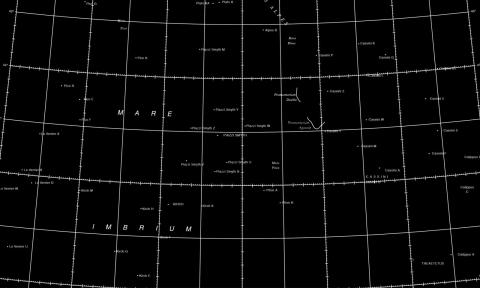
Dismantle Louis Agassiz
Embedded Racism at the Near Side of the Moon
In this text, Roman Karrer examines the way in which the names of streets, squares or mountains lend such places a symbolic dimension. The name of the botanist and zoologist Louis Agassiz, born in Fribourg, Switzerland, is found in almost 80 locations, even on the Moon, and is an example of this kind of problematic anchoring. Long unaddressed, the racism of Agassiz – who, in defence of white supremacism, opposed Darwin's theories of evolution – now makes him a famously controversial figure. Karrer discusses the various ways in which Agassiz's name was glossed over (or not) in recent years, and considers some positive developments, including the tribute paid to the black science fiction novelist Octavia E. Butler, whose name designates a point on the planet Mars.
-
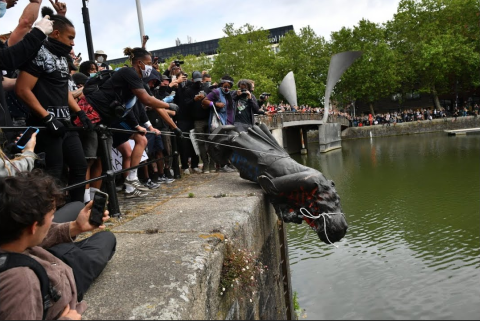
Dossier #8
All Monuments Must Fall: Episodes and Counterimages from a Present History of Iconoclasm
“All Monuments Must Fall.” Four words, calling out and calling up. An indictment of police terror, a demand for an end to impunity. A toppling of white supremacist, settler colonial patriarchs: Robert E. Lee and Christopher Columbus, Cecil Rhodes and Leopold II. And more: this “all” reaching the roots of monumentality itself, imagining a reordering of public culture and public space, a summoning of the common to come. Iconoclasm: the breaking of a dominant image, or the breaking of its power, its spell or grip or bad aura. The breaking of regime and amnesia. A proposition, then, for a reparative repatterning, a Now-Time of Justice. The Critical Studies Seminar of the CCC Research-based Master Programme took the proposition and practice of All Monuments Must Fall as its 2020-2021 focus. (The phrase itself comes from the excellent online syllabus collaboratively produced by a Baltimore group, discussed in the introductory essay, below.) Through readings, discussion and immersion in the visual evidence of this new moment of iconoclasm, the seminar reflected on the differences between remembrance from below, the monumentality of official history from above, and counter-memorial artistic practices. The construction of history, the ideology of monuments, and the social and political functions of public space were critically explored. Some artistic interventions into the cultural politics of memory and forgetting were considered and discussed. Students were asked to choose examples or case studies, either from the public spaces of Geneva or elsewhere, for further investigation and reflection. Professor Roberto Zancan from the Space Design Department completes the issue with a reflection on monuments and memory in Venice. Gene Ray (HEAD – Genève, HES-SO) Photo caption: Bronze statue of slave trader and Tory MP Edward Colston tossed in Bristol Harbor by BLM protesters, June 2020. Photo: PA Wire.
-
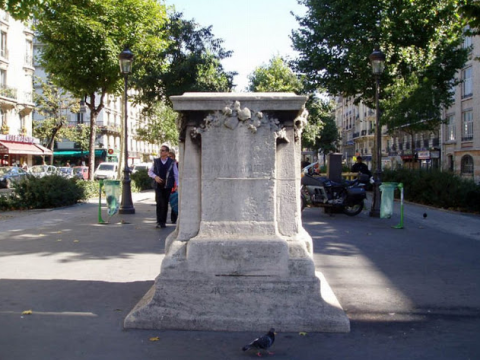
Ode to an Empty Plinth
Iconoclasm by Other Means
In a 1997 issue of October journal devoted to the Situationists, T.J. Clark and Donald Nicholson-Smith rejected the narrative that, in the early 1960s, the SI renounced art in favour of politics. In reality, the organisation only renounced conventional and representational forms of art, all the while defending the utopian dimension of the artistic project. Gene Ray develops this argument by relying on the action of the Situationists at the Place de Clichy in Paris, where they tried to reinstall a statue of Fourier.
-
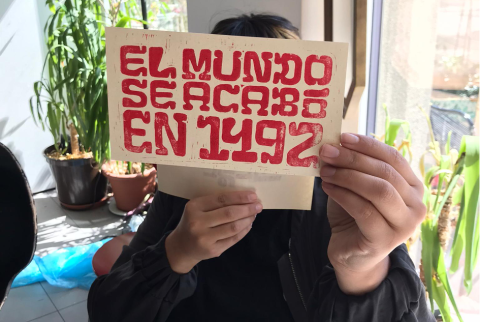
Domingos de llanto y jueves vacíos o Teary Sundays and empty Thursdays
Like a dialogue between languages, this bilingual Spanish-English text also takes the form of a song and then a harangue. The text revisits Chilean history through the demonstrations against social inequality that took place in Chile in 2019. These events led to the overthrow of the equestrian statue of General Badequano, a military man who participated in the war against the Mapuche indigenous people.
-
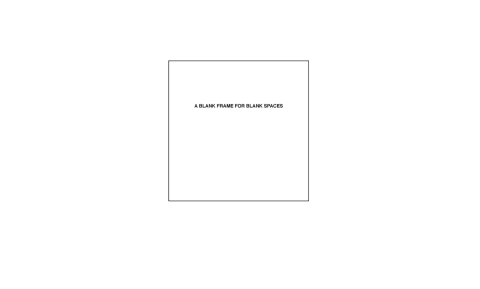
Other Monuments Should Stay
Resistance in Squats and Counter-Cultural Spaces in Geneva
For 25 years, Geneva benefited from a squat scene that was rich and crucial, both socially and culturally. The squats were occupied under various legal arrangements, defying real-estate speculation. The authors of this text take the position that the squats had become monuments, which nonetheless were eradicated by a concerted policy in the 2000s, which the authors discuss.
-
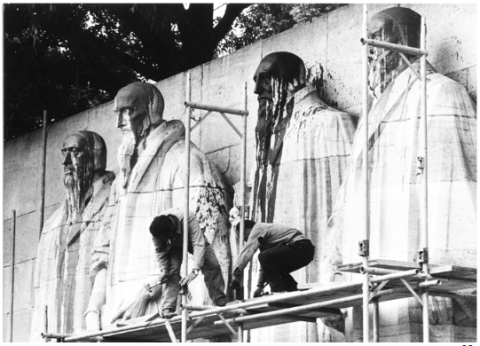
Monuments Must Be Edited
Since its construction in 1909, the Reformers' Wall in Geneva's Parc des Bastions has been vandalised numerous times. Based on this history of tagging and painting, Basile Collet considers the way in which vandalism participates in the disruption of a supposedly pacified public order, reigniting debate and social conflict.
-
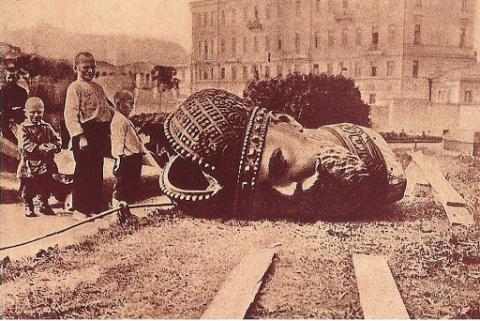
A Dream of a Cuttlefish
Sara Bissen compares the psychological trauma left by her experience of sometimes violent historical events in the former Soviet zone – where a series of brutal regime changes were punctuated by the overthrow of statues – to the repetitive cycles of statues being erected and overthrown.
-
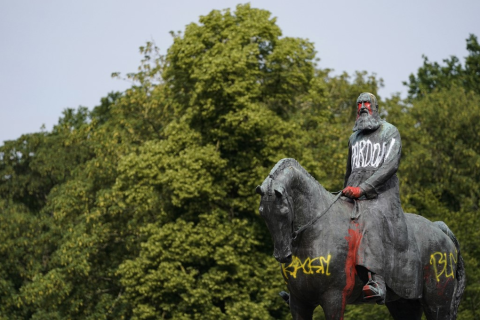
All Monuments Must Fall
Thinking Through the Proposition
In this introduction, Gene Ray (HEAD – Genève, HES-SO) reviews a series of recent events, mostly related to the Black Lives Matter movement, which may suggest that a new iconoclasm has begun. Ray associates this aggressive way of questioning the dominant history – by attacking statues – with Nancy Fraser's ecological concept of wilding. He thus creates an alliance between decolonial movements and climate activists who, in recent years, have similarly diffused forms of indiscipline in the public space.
-
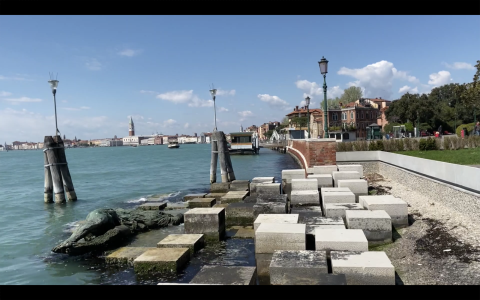
Hey, Hey, My My... Can Monuments Ever Die?
All those who have visited the Venice Biennale have noticed a monument on the waterfront in front of the Giardini, almost in front of the Swiss Pavilion. It is the famous memorial Alla Partigiana, designed by Carlo Scarpa – the master of post-war Italian museum architecture – in collaboration with the sculptor Augusto Murer. But few know that this complex hides a key episode in the confrontation between contemporary art and political terrorism in post-war Italy. In fact, this low and horizontal monument is a reconstruction of a previous monument destroyed by a terrorist act aimed at desecrating the object of the testimony.
-
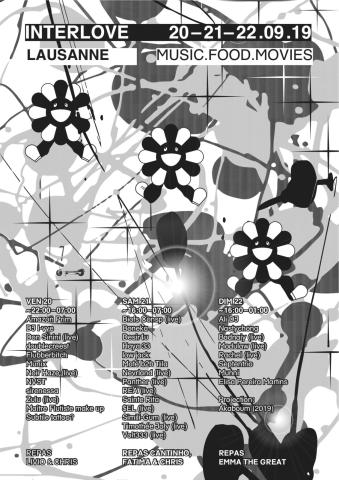
All Revolutions Must Be Collective
But what must fall? This podcast interviews members of French-speaking Swiss resistance collectives who stand against forms of oppression such as racism, patriarchy and police authority. This question broadens the notion of ‘monument’ to include institutions, such as prisons or the police.
-
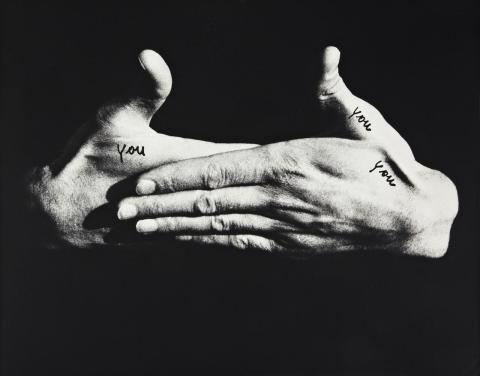
I SAY I – SHE SAYS YOU YOU, AND ME?
The following essay comes from the transcription and re-elaboration of a collective reading session Camilla Paolino proposed at Fri Art Kunsthalle in February 2020, within the framework of the exhibition Dal momento in cui… which featured works by the Italian artist Ketty La Rocca (b. 1938, La Spezia; d. 1976, Florence). Taking a set of poetic proses written by La Rocca between 1972 and 1974 as a starting point, Paolino addressed concepts of incommunicability, illegibility, alienation, and withdrawal into solitude, problematizing them from the perspective of several women operating as art practitioners and cultural producers in 1960s and 1970s Italy. The deriving reflection relates the experience of La Rocca to those of Carla Lonzi, Carla Accardi, and the other members of Rivolta Femminile, who in the same years embraced the opacity of their radical postures towards culture and society, transforming their position of alterity into a fertile ground for their subjectivation to take place. The picture then expands, drifting overseas and drawing speculative connections with the experiences of North American cultural outcasts such as Valerie Solanas and Lee Lozano.
-
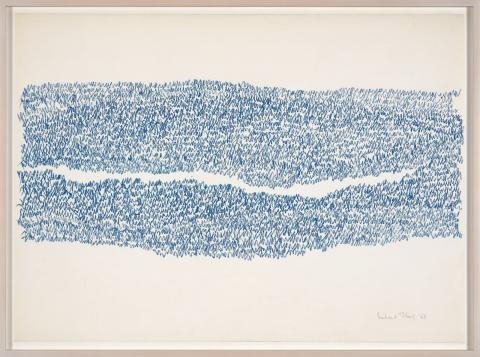
A History of Legitimacy
In this podcast combined with a large body of images, Charlotte Laubard (HEAD – Genève, HES-SO) explores what she calls the ‘self-taught enigma.’ Multiform, this enigma questions the modes of art learning and artistic invention as much as the criteria of legitimacy that govern art history. In particular, Laubard compares the trajectory of artists who have been subjected to various labels such as ‘brut,’ ‘outsider’ and ‘naïve’ with that of avant-garde artists from the 1950s who had to implement a form of unlearning in order to break with tradition on the one hand, and creators from non-Western spheres and learning environments on the other.
-

Dossier #7
The Self-Taught Enigma: A Collective Study on a Figure of Art History
The 2013 Venice Biennale dropped a bit of a bombshell when, in the official exhibition curated by Massimiliano Gioni, some forty participants with no artistic training were presented side by side and indiscriminately with seasoned artists from the professional sphere. Controversy raged: how could productions that ignore art theory and its traditions be included in the most important biennial in the art world? How could the creativity of works – conceived without any in-depth knowledge of aesthetic criteria – fascinate to the point of serving as an enigma? Produced during a study day organised by Charlotte Laubard, head of the Visual Arts Department at HEAD – Genève, the entries in this feature look back at the place of self-taught artists during the 20th century in order to resituate the historical and theoretical issues that took part in the construction of the self-taught enigma. The entries aim to undo certain mythologising representations of artistic practices by examining what self-learning concretely produces within a creative process. To this end, they postulate an approach at the crossroads of disciplines, calling on learning theories from the fields of sociology, anthropology, pragmatic philosophy, and cognitive and educational sciences. Not only do these entries look to create space for artistic productions that have been kept on the margins of art institutions, they also call on us to completely revise our criteria of judgement within the context of the unprecedented broadening of creative practices that have been disrupted by globalisation and digital technologies. The conferences both feed and complete the research run for a vast historical exhibition organised by Charlotte Laubard at the Museum of Modern and Contemporary Art in Saint-Etienne (October 2021-April 2022).
-
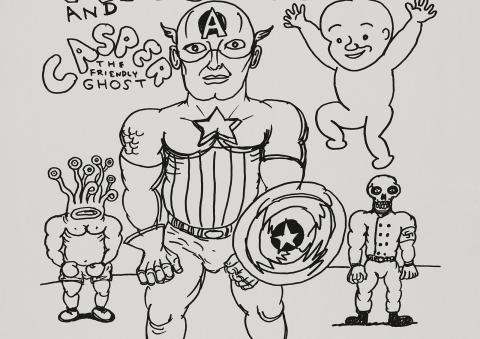
Auto-reverse Learning
Daniel Johnston and Recording
Portrayed as an absolute oddity, both solitary and providential, the American singer-songwriter and cartoonist Daniel Johnston (1961-2019) has often been labelled an outsider, ‘naïve’ and ‘crude,’ by artistic historiography. Based on readings of his work that are in turn mundane, hagiographic and biographo-pathological – and accompanied by his songs in the background – Christophe Kihm explains how Johnston embodies a certain myth of the self-taught genius, in contrast to the values of a pop music considered inauthentic and commercial.
-
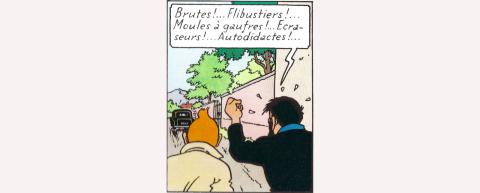
The Self-Taught Enigma, from the Making of the Work to its Recognition
What can We Learn from Accounts of Learning?
By evoking a series of discoveries made during her research on 'informal' or 'unformatted' learning, Hélène Bézille explores the socio-historical construction of the figure of the autodidact. She observes in particular how this dual figure, oscillating between disqualification and recognition, alienation and emancipation, gained legitimacy from the 1960s onwards with the construction of the self-made man and the growing 'artification' of what we see as radical singularities.
-
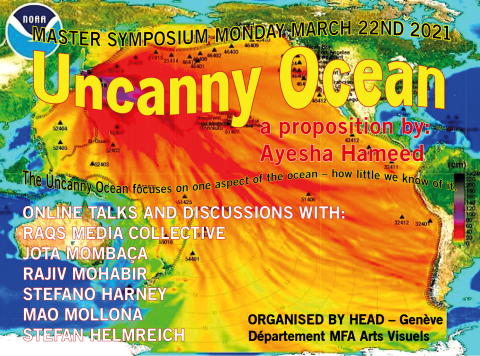
Uncanny Ocean
Master Symposium 2021
Held on Monday March 22nd, the 2021 edition of the Master Symposium was a collective all-day event organised by the HEAD’s MA in Visual Arts Department: Work.Master, CCC, and TRANS. This year, the artist Ayesha Hameed was invited to define the theme and invite the speakers.
Titled Uncanny Ocean, the symposium focused on one aspect of the ocean – how little we know about it.
They say we know more about outer space than about the bottom of the sea. The symposium took the unknowability of the ocean as a starting point to think about the aquatic as a material and a medium. Exploring the mystery of the ocean as well as its rich and complex history of migration, trade and violence also enables us to consider spells, time out of joint, time travel, visionary fiction and other possible worlds.
This article rounds up the video recordings of the speakers’ lectures: Stefan Helmreich, Jota Mombaça, RAQS Media Collective (Monica Narula, Jeebesh Bagchi and Shuddhabrata Sengupta), Mao Mollona, Stefano Harney, and Rajiv Mohabir.
-
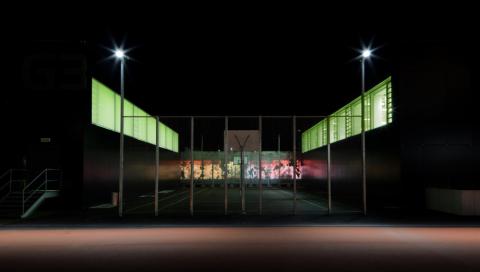
El Croquis. Édition nocturne
In this essay, Javier Fernández Contreras examines the implications of architectural photography’s daytime tropism. While Modernism saw the development of an architectural thinking inspired by nocturnal leisure and entertainment venues such as casinos or nightclubs, a daytime mode of representation remains the dominant paradigm in architecture magazines. During a workshop in February 2020, the HEAD – Genève’s Department of Interior Architecture invited Richard Levene to create a “night edition” of El Croquis. The students’ photographs produced in this workshop engage with Koolhaas’s idea of “post-occupation,” showing buildings taken over by society, and not eternally empty and untouched. The original version of this text was published in the periodical Plan Libre.
-
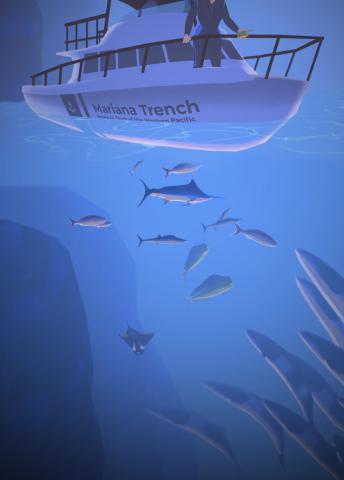
Endless Dive: Scroll, Play and Learn
Endless Dive, the game that Catia Barreiras developed for her Master's degree in Media Design, departs from the standards of Candy Crush-style mobile games by focusing on narration and learning rather than addictive gesture. A diver and an oceanographer dive into the Mariana Trench and meet its inhabitants. The player follows the evolution of their relationship, all the while discovering an underwater environment whose subjective view they can adopt. Interviewed by Alexia Mathieu, Barreiras explains her choices and the extensive research it took to create this game at the border of education and entertainment. -
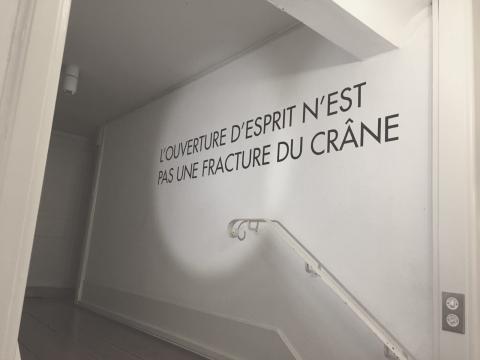
The Joy of Writing and Rewriting
An Interview with Carla Demierre and Fabienne Radi
While remote teaching has momentarily transformed their common creative writing course into a podcast, Fabienne Radi and Carla Demierre nonetheless advocate for experiential learning: the experience of reading, writing and rewriting beyond the clichés of poetry as it is taught in primary school. Radi and Demierre discuss their methods and the special place made for writing in an art and design school.
-
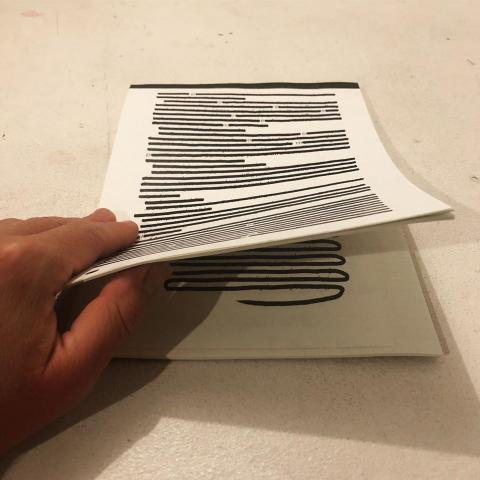
Littérature, terrain d'action
Republication of an Interview with Hervé Laurent
In September 2009, the literature periodical Remue.net – founded by the technophile writer François Bon – sat down with Hervé Laurent, the HEAD's "Monsieur Texte," to discuss the writing workshop Laurent pioneered ten years earlier. Here we are republishing the interview, on the occasion of this case study. Conducted by Fabienne Swiatly, the interview explains what is at play when developing a writing practice in an art school.
-
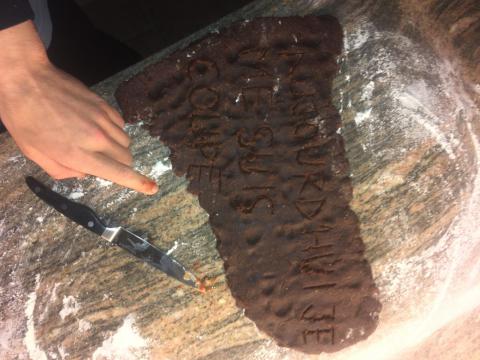
Writing and Its Many Voices
A Selection of Students’ Writings
This selection of works by students and alumni from the HEAD's creative writing workshops testifies to the vitality and diversity of ways in which a text can be rendered. The variety of genres, from writing on the self to poetry, is matched by the variety of forms and media: editions, radio creations and sound postcards.
-
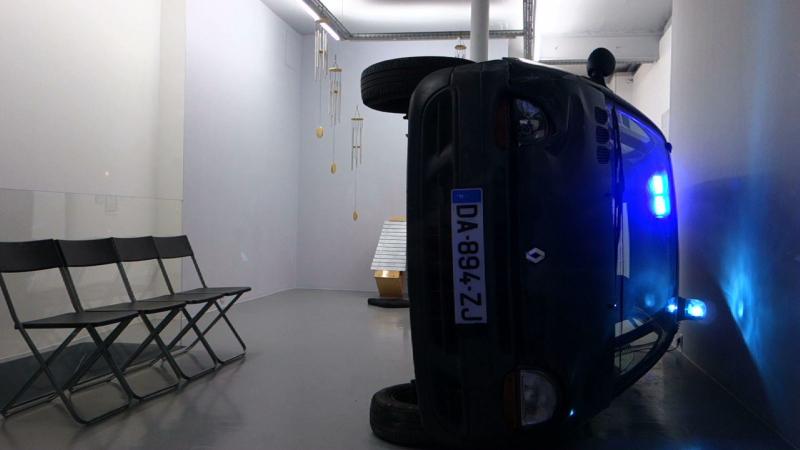
Une lunch box dans la fable
Review of Fabienne Radi's Le déclin du professeur de tennis
Fabienne Radi published two books in 2020: Émail diamant at Art&fiction and Le déclin du professeur de tennis at Sombres torrents. Sylvain Menétrey focuses on the latter, a collection of four short stories written by Radi and inspired by works she chose in the contemporary art collection of the Documents d'artistes network in France. In Le déclin du professeur de tennis, Radi dissects Bounty chocolate bars and catalogues of lumberjack accessories to keep morality at bay.
-

D'autres voix
Review of two Carla Demierre recent publications by Julie Sas
With Autoradio, published in 2019 by Héros-Limite, and Qui est là, published a year later by art&fiction, Carla Demierre uses concrete poetry and polyphonic narratives to express the variety of her own voices.
-
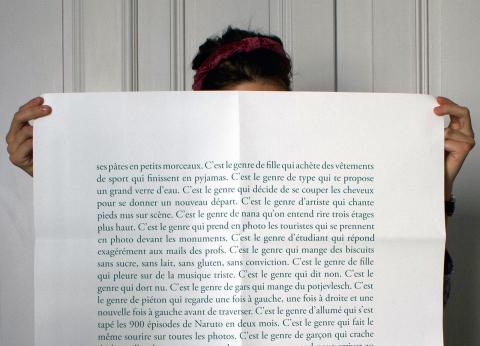
Dossier #6
Talking Words: Creative Writing Practices at HEAD – Genève
When I took over the direction of the ESBA (editor’s note: formerly the Geneva School of Fine Arts) in 2004, Hervé Laurent’s writing workshop had already been a singular and lively space there since 1999. Laurent and I met on this commitment and I have only been following it through, with conviction. The relationships between art and writing, between painting and poetry in the 20th century in particular, have been one of the areas of my work as an art historian. I also opened creative writing workshops at the École Supérieure des Arts Décoratifs de Strasbourg in 1996, entrusting them to Catherine Weinzaepflen and Jacques Demarcq. These workshops led to the publication, rather uncommon at the time, of several collections of students’ texts.
Very quickly, we set up a small working group including, in addition to Laurent, Carla Demierre, then an assistant in the writing workshop, and Alain Berset, the founder and director of the Héros-Limite publishing house, who was also involved at the school. We agreed on an active “policy” of inviting writers or artist-writers. After giving a workshop at the school, they would give a public reading of their own texts as part of the Voix Off series of events held at the Mamco, thanks to the friendly cooperation of Christian Bernard. It was also at this time that we created the Courts lettrages collection with Héros-Limite. Alain Berset, Hervé Laurent and I co-directed the collection. In reality, the choice of published authors was made by Laurent and Berset and my own role was mainly that of an initial supporter... The first book by Carla Demierre – who took over from Laurent as the person in charge of the workshop – was published there, as well as the texts of some twenty young graduates, some of whom, to date, have gone on to become Swiss literary or publishing figures (such as Julie Sas, Vincent de Roguin, Baptiste Gaillard, Anne Le Troter, among others).
The idea that words are inscribed in contemporary art practices was thus very much anchored in the culture of the school. Carl Andre, for example, came to meet the students when Christophe Cherix showed his visual, typed poems in the Cabinet des Estampes. At the time, Jacques Demierre and Vincent Barras were already offering an astonishing work of sound poetry in the school’s sound workshop. In short, the question of writing and the idea of the text as visual or sound material was always running through the school. And this continues. These examples are testament to a singular and open creative space, at the crossroads of literature and the arts. Our alumni who have become writers have a singularity that is partly due to this origin of the text in the plastic arts, crossed from within by a visual dimension. They work the text as a texture, like clay. The text is a framework, a net with which to capture a part of reality. In their work, words appear to have a physical dimension. I would also like to emphasise that, beyond the singular field of creation they open up, the workshops hone a language skill that is now a key skill for all artists – and if we are talking about HEAD, for all designers – as an active vector of a way of thinking.
Within the art school, the work of writing opens up a particular space of freedom, giving licence that you wouldn’t usually allow yourself in a context more traditionally associated with literature. In an art school, the work of writing is an act of displacement; we work the text in a related territory. On the one hand, the text offers itself to very fertile logics of transpositions. On the other it is not, or is less, burdened with heroic, sometimes paralysing, figures. It is a creative space that can be inhabited more easily, free from the weight of genre and history. I hope that this feature reveals these remarkable sensibilities.
-

Head Voices VI – Dora Garcia
A Conference Selected in the School's Archives
This new episode in the Head voices section, which revisits notable conferences held at the HEAD – Genève in a relatively distant past, gives the floor back to the artist Dora Garcia. On May 9th, 2012, Garcia was the guest of a Talking Head dedicated to her work, which can range from texts and performances to multimedia installations and research. During the 2012 conference, Garcia – who had the honour of being invited to Europe’s largest art events, including the Skulptur Projekte in Münster, Documenta in Kassel and the Biennale de Lyon – looked back on some of her major projects, which blurred notions such as the public and the author.
-
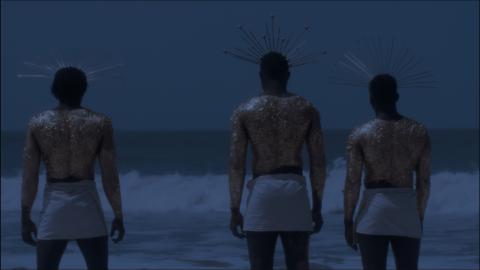
The Rainmaker and the Filmmaker
Interview with Director Rokhaya Marieme Balde
In her short film À la recherche d'Aline, Rokhaya Marieme Balde focuses on her great-aunt, Aline Sitoé Diatta, who was a heroine of the anti-colonial struggle in Senegal. In addition to her political commitment, Sitoé Diatta was also reputed to possess the gift of making rain fall. Balde's film combines dreamlike reconstructions, a documentary investigation of the memories left behind by the resistance fighter and prophetess Sitoé Diatta in Casamance, and a look back at the making of the film. These different levels of narrative weave a complex portrait of a character between myth and historical reality. In this interview, Balde talks about the shoot and her career as a young filmmaker with a Bachelor's degree in Cinema from the HEAD – Genève.
-

Once Upon a Time
Interview with Annie A. Marca
For her Bachelor’s degree in Visual Communication, Annie a Marca authored a comic book with stylised illustrations, frightening lights and looming cast shadows. This variation on Perrault’s tale Little Red Riding Hood takes place in a contemporary cityscape. In it, the wolf becomes an emblem of rape and harassment culture. However, in this reinterpretation, little red riding hood refuses to be eaten up. In this interview, Annie a Marca returns to the mechanisms by which certain fears are imposed on women and how to overcome them.
-
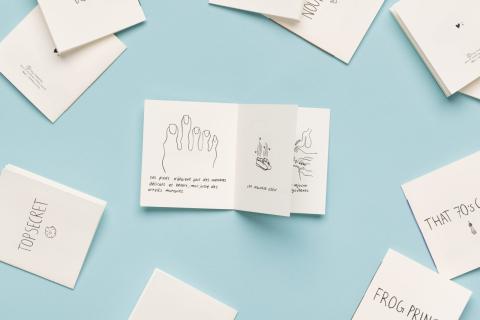
Brilliant Tiny Tragedies
Self Published Works by Julietta Saccardi and Dorodea Leone
Over the course of a workshop, Bachelor students majoring in Image/Story created artist’s books they individually produced, which were intended to be presented at the P.A.G.E.S. book fair. Comic books, leporello books, fanzines and collective projects in their own right, these editions enabled the students to consider how best to share their drawings. Here we introduce two pieces from this workshop, authored by Dorodea Leone and Julietta Saccardi, respectively a series of micro-published books – in the literal sense – and a crayoned booklet on a fratricide struggle, both mixing poetry and originality in an economically effective manner.
-
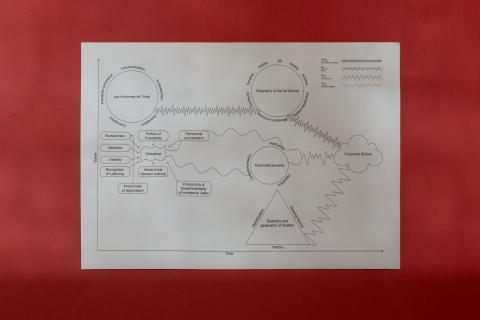
Head to Head VI – Doreen Mende
Video Profile of the CCC Research-Based Programme HEAD Professor
Head to head is a series of filmed portraits of teachers, researchers, artists and designers active at the HEAD – Genève. The portraits allow them to speak about their often brilliant careers outside the school. For this new edition, Doreen Mende, head of the CCC Research-based Master Programme, sat down with Issue’s editor Sylvain Menétrey. Head to head est une série de portraits filmés d’enseignant·e·s, de chercheur·euse·s, d’artistes et de designers actif·ve·s à la HEAD – Genève. Ces rencontres sont l’occasion pour ces personnalités d’aborder leur parcours, souvent brillants, en-dehors de l’école. Pour cette nouvelle édition, Doreen Mende a répondu aux questions de l’éditeur d’Issue, Sylvain Menétrey.
-
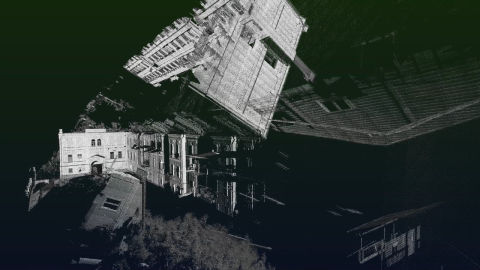
Talking Heads – Bahar Noorizadeh
Challenging Cybernetic Conspiracy
This Talking Heads delocalised online gave the floor to artist and researcher Bahar Noorizadeh, who considers the alternatives that stem from art and art-research to block the machine-mania running our future. To do this, Noorizadeh exposes and deconstructs the political economy of the Internet, which modeled itself on the theories of classical liberal economists. This Talking Heads falls within the framework of a semester of lectures dealing with possible new creation models and their results on the production and valorisation systems of art and design. At a time of artificial intelligence and machine learning, work organisation and production mechanisms are transforming, inviting us to rethink the very notion of making.
-
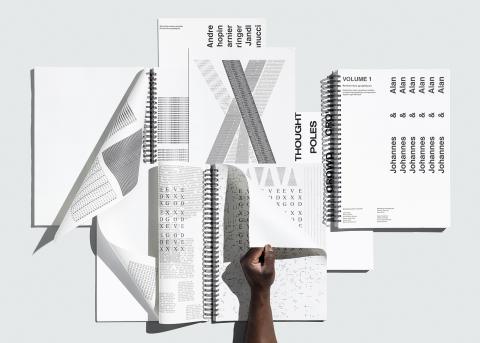
Johannes & Alan
A Workshop of Algorithmic Typography
The designers Demian Conrad and Alex Dujet co-organised a workshop in technology-aided typography. The aim of the workshop was to use the synergies between the analogue and the digital in the production of lettering for prints which fell within the field of concrete poetry. It was a matter of determining, on the one hand, how a composition made with an algorithm can influence the layout of a manual composition and, on the other, how manual metal typesetting changes coding in graphic design. Here’s a report on these experiences.
-

Inclusive Typography
An Interview with Graphic Designer Tristan Bartolini
For his Bachelor’s Degree in Visual Communication, Tristan Bartolini developed a new system of typographic characters which transcends gender binarism in the French language. Bartolini redesigned characters from an existing font, Laurenz Brunner’s Akkurat, so as to make some of the letters interlock. While they remain readable, the gendered endings of the words escape the dichotomy of gender, or the precedence of one gender over the other. The words’ fluidity stretches between the feminine and masculine poles. Both poetical and political, Bartolini’s project was awarded the Red Cross’ Prix Art et Humanité 2020. Nayansaku Mufwankolo, an assistant at the CCC research Master’s Programme, sat down with Bartolini to discuss the political and technical issues at the heart of his project.
-
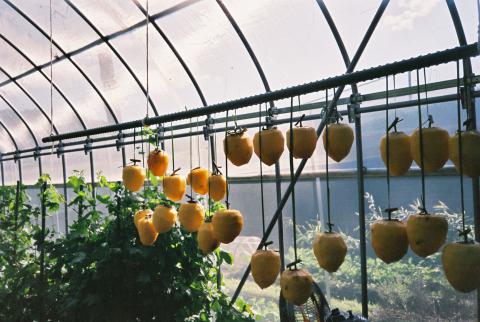
Memories of a Grand Tour – Episode 3
An Interview with Loana Gatti
This third part of the Grand Tour memories is dedicated to the work of Loana Gatti, who graduated from the CCC research Master’s Programme. In her Master’s Thesis, titled “Exploring Alternatives: counterattack of a fallen leaf,” Gatti considers alternative forms of pedagogy. Her research is informed by the transformative potential of collective and personal experiences. For her diploma presentation, Gatti developed iconographic and documentary material she collected during an exchange semester in Kyoto, Japan, where she took part in the management of a permaculture garden. This experience led her to reflect upon notions of autonomy and care.
-

Memories of a Grand Tour – Episode 2
An Interview with Henrique Loja
We continue with our memories of the Grand Tour with Work.Master graduate student Henrique Loja’s sculpture work. Loja presented a series of objects partly composed of recycled materials, in which micro-stories and the planet’s geological history mix. Floating between the ruins of a wrecked civilisation and clues as to a possible future, these works fit perfectly within our uncertain present.
-
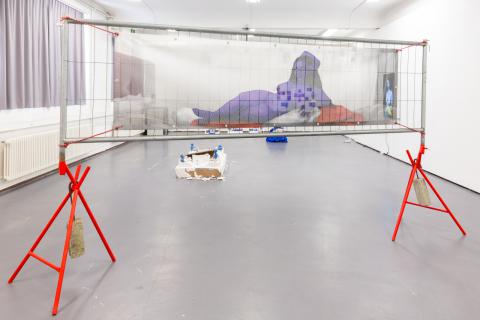
Memories of a Grand Tour – Episode I
An Interview with Giulia Essyad
On September 8th 2020, the Visual Art Department organised its traditional graduation exhibition, the Grand Tour. There’s nothing ordinary about this year’s exhibition though, which was planned for early summer, but was rescheduled to the start of the following academic year for public health reasons. Most importantly, students had to work within a context disturbed by the pandemic, be it in their working conditions outside the school or in their imaginations, hijacked by the echoes of a world in pain. ISSUE’s editorial team offers a panorama of those young art practises in full turmoil, presenting a series of interviews with graduate students and images of their works shown at the Grand Tour.
In this first chapter, Giulia Essyad, a Work.Master graduate student, explains how she took over prevailing devices and aesthetic languages to create surprising, funny and powerful images. Not only seeking to fight on equal terms against the tyranny of beauty, skin colour and thinness which invades our subconscious, her pieces also invent a personal spirituality.
-
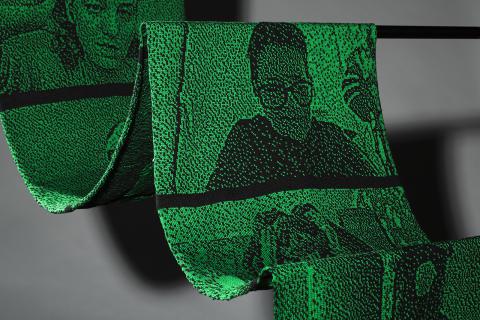
La maille anticapitaliste
Interview with Valentine Ebner, Head of the KnitGeekResearch Project
Historically, the clothing industry has often been in the vanguard of great economic rationalisation movements. It was one of the first industries to be industrialised in the 19th century, and in the second half of the 20th century was one of the first to seek cheap labour in Asian countries. These evolutions had a disastrous impact on the employment market in the West. They also resulted in both a loss of local know-how and the scandal of fast fashion workers’ working conditions in Asia. In addition, fashion designers have been completely cut-off from production. By hacking domestic knitting machines to enable them to meet the needs of small fashion labels in terms of experimentation and volume management, Valentine Ebner research project KnitGeekResearch aims to give direct control back to fashion designers. In this interview, Ebner, a professor and designer, defines the founding principles of her research, which lie between engineering and design. She also explains how her two prototypes work, giving an insight into the new aesthetics made available by these machines.
-
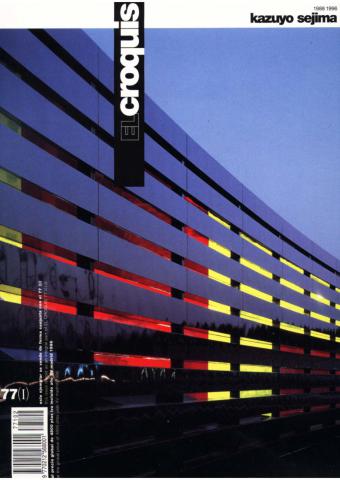
El Croquis: An Architecture Magazine Success Story
In this conversation, Richard Levene returns to the origins of the leading architecture magazine El Croquis, which he co-founded as he was finishing his architecture studies in 1982. Originally published as a black and white newspaper for the architecture projects of Spanish professors, El Croquis progressively integrated photography, colour, the English language and the monographic format dedicated to architecture’s international top names for which El Croquis has become known. In conversation with Javier Fernandez Contreras, the head of the HEAD’s Interior Architecture Department and assistant Sven Högger, Levene explains the specific choices in terms of graphic design, photography and curation which have made El Croquis a widely acclaimed magazine.
-

Foreword – Pour mémoire
An interview with Jean-Pierre Greff
Jean-Pierre Greff has been particularly involved, within the Franco-Swiss area, in the pedagogical and political development of the Master’s thesis in Art and Design schools. In this interview, Greff comes back to this formalisation, which dates back about 20 years, and how his convictions led him to think about the open interdependence link between theory and practise. This link now guides the making of Master’s theses at the HEAD – Genève. -
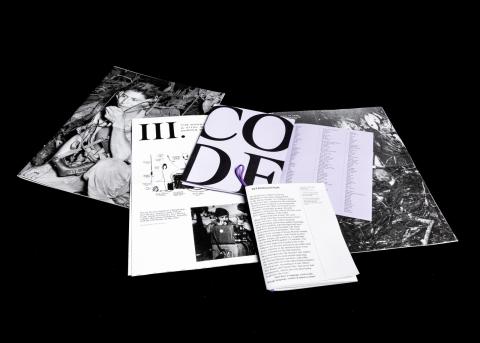
Introduction – Le mémoire, une formation intellectuelle et sensible
An interview with Lysianne Léchot Hirt and Anthony Masure
Each year, the Master’s theses produced at the HEAD – Genève bear witness to great thematic, methodological and formal wealth. As mentioned by Lysianne Léchot Hirt and Anthony Masure (respectively head of education coordination and head of research at the HEAD – Genève) Master’s theses nonetheless fall within a clearly defined pedagogical framework, not only allowing students to contextualise their practise but also opening the doors to research, teaching and hybrid artistic practises. Insightful hypotheses and the setting out of a methodology proper to the fields of art and design are the main criteria for a successful thesis.
-

Where Are Our Common Dreams Now?
An E-mail Exchange Between Katrin Kettenacker and Maria Lucia Cruz Correia
In association with the far° Nyon, a group of students from the HEAD – Genève worked with the artist Maria Lucia Cruz Correia. At an interdisciplinary workshop during the Semaines de tous les possibles, they developed a collective project that will see the light of day at the next edition of far°, fabrique des arts vivants, from the 13th to 22nd August in Nyon. The students and the artist imagined a school for the future which develops a programme of thinking and doing linked to the notions of survival and common dreams within our dystopian present.
-

Pourquoi
Master Thesis by Greg Clément
Pourquoi (Why) is an essay that considers the position of the author within a collective form of cinema. Pourquoi articulates film analysis, accounts of experimentations and descriptions of devices. Pourquoi guides and questions an action-research, on which it also gives a report. A text montage, Pourquoi tries to answer a series of questions: how can you make films with children? How should you interact with them, their parents and the context to create a story? As an author, how should you give the floor to amateurs playing their own role? How can you let them transform the original project? How can you depart from authority, collaborate and make art a collective process? The preface is by Claude-Hubert Tatot, Greg Clément’s tutor for this Master’s thesis in the Visual Arts’ TRANS– Socially Engaged Art Practices program. -
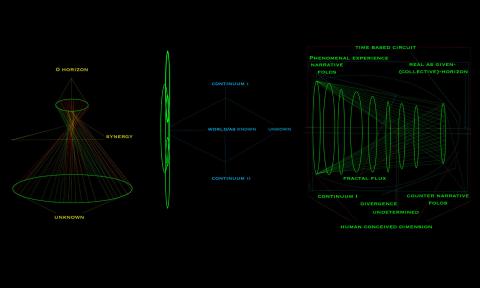
To Destroy a World
Master Thesis by Laila A. Torres Mendieta
In the Master’s thesis she completed in 2019 within the framework of the CCC, Laila A. Torres Mendieta uses the performativity of fiction theory to create what she calls “fissures” in the model inherited from colonialism in terms of class, genre and race relations, beginning with the example of her native Mexico. Her critical writing creates a space in which non-western narratives sensitive to feminist intersectionality can be voiced as a means to enable counterfactual universes. Horror plays an essential role in this ambition, insofar as it presents a paradox of discontinuity, dimensions and time, both in the sense of the time in which we’re living and the fractal futurities we shape via science fiction. The thesis is introduced by an interview with Torres Mendieta as well as the text from the Actes de recherche published by CCC. -
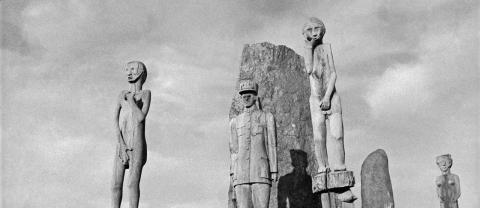
rano rano, naming, listening to, refusing the coloniality of the exhibitionary complex
Master Thesis by Léa Thaïs Genoud
The research conducted by Léa Genoud within the framework of the CCC Master’s research programme in 2019 is a reflection on the coloniality of the museum - a product of Western imperialist history - and more specifically on the very format of the exhibition. From different artistic and theoretical viewpoints inspired by the postcolonial, decolonial and Black Studies field, her approach to this widely debated issue is to tackle the non-questioning principle when it comes to the hegemonic history of the museum and, most importantly, the articulation of the museum’s gaze technologies, from ethnographic photography to contemporary performance. -
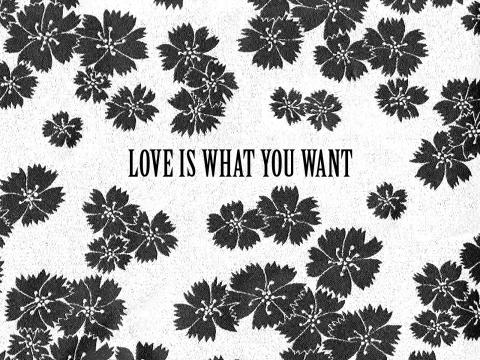
Love is what you want
Master Thesis by Diane Rivoire
Through a montage of texts and interviews with artists and authors, Diane Rivoire traces the links between art, love and friendship, the love of art and workplace friendships. Some passages are borrowed and have been subtly updated while others are personal writings inspired by lived experiences. The conversations in which Rivoire engages, chapter after chapter, are the opposite of the image of passivity usually associated with the posture of the female admirer. This panorama of chatty and, directly or indirectly, loved figures is the starting point of a process of production of the self as an artist, a lesson of appropriation in its own right. Rivoire 2020 Master’s thesis comes with an introduction by her tutor Jill Gasparina. -
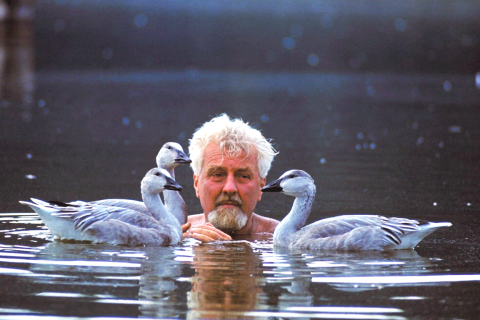
Clara, Chuck et les autres
Master Thesis by Laura Spozio
Laura Spozio proposes a reworked version of her 2019 Visual Art Master’s Thesis for this online publication. Readers can choose between two non-linear entries. The first story is of a literary nature, created from a collection of anecdotes taken from ethology, human sciences, philosophy and communication sciences. The second story, which is of an analytical nature, comes back to some researchers in cognitive ethology who make a complementary use of different observation and experimentation methods. Through this mirror perspective, Spozio seeks to restore anecdotal narratives to favour in science, taking a pragmatic viewpoint to understand interspecies relationships. -
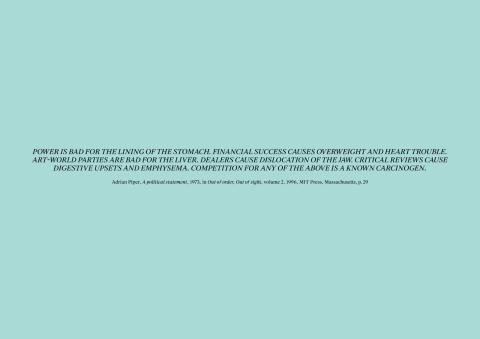
N'importe quoi mais pas ça
Master Thesis by Johana Blanc
Johana Blanc’s 2020 Work.Master Master’s thesis collects together a series of peremptory judgements sprinkled by some artists, critics and other authority figures of the art world when talking about art. Banishing some practises, the line they take clashes with the breaking up of the art field in the 20th century, which has ceaselessly included new forms on the principle that anything could potentially be art. With a marked sense of derision, Blanc navigates these double binds for an art student, outlining a personal stance anchored in practise. Her Master’s thesis is introduced by a text by her tutor, David Zerbib. -

Sustainability Revisited
MA in Fashion and Accessory Design Thesis by Tara Mabiala
In her Fashion and Accessory Design Master’s thesis, Tara Mabiala tackles the question of sustainability in fashion through an affective and political approach. Instead of focusing on an optimisation of production modes and raw materials, Mabiala takes an interest in the other side of the equation, namely our relationship to clothes. Starting from the idea that sustainability implies a notion of caring for the environment, but also for ourselves, Mabiala engages in a reflection on the notion of “self-care.” She confronts this notion with case examples, citing the outfits of black activists from the civil rights movement and punks as examples in which singularity and the collective meet. Her research is presented under the form of an interview conducted by Aude Fellay, in charge of theory in the MA in Fashion Design, and a mood-board bringing together the essay’s hypothesis.
-

Head to Head V – Alexia Mathieu
Video Profile of the Media Design Master HEAD Professor
Head to head is a series of filmed portraits of teachers, researchers, artists and designers active at the HEAD – Genève. The portraits allow them to speak about their often brilliant careers outside the school. For this new edition, head of research Anthony Masure sat down with Alexia Mathieu, head of the Media Design Master’s.
-
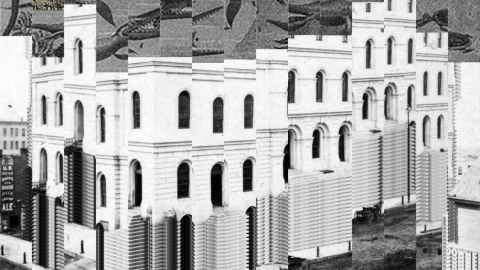
Earth( e)scape. The Raising of Chicago
Master Thesis by Jozef Eduard Masarik
Raising of Chicago, a visionary project of the 19th century engineering, was a project consisting of lifting the whole city up to 14 feet above the city’s original location. Such projects blending the real and the unbelievable were bringing the tradition of technology used to execute wonders or spectacle, which was disappearing at the time, back to life. The evolution of the perception of the relationship between the city of Chicago and the Earth is closely linked to the 19th century imaginary, represented in the research especially by the miasmatic theory and technological optimism. The perception of the city’s natural conditions and the steps leading to the project clarify the raising and its aspirations. In order to discover the relationship between the raised city and the Earth, the raising is studied in the context of the 19th century imaginary and theories of built environment. -
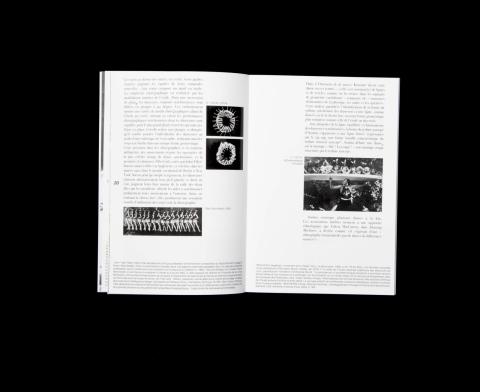
Face à face
Master Thesis by Amandine Lécuyer
In 1935, during French colonialism in Maghreb, the Franco-British moviemaker Edmond Thonger Gréville finished his movie Princess Tam Tam, starring Joséphine Baker as a poor young Tunisian woman named Aouïna. In the movie, Max de Mirecourt, a French writer bored with the Parisian life he is leading with his wife Lucie, moves to Tunisia where he meets Aouïna. An ambiguous relationship begins to develop between them. Max, in the role of the coloniser, chooses Aouïa as the heroine of his new novel. Aouïna plays a double role, personifying both the colonised and the Princess from far-off Africa. Amandine Lécuyer’s Space and communication Master’s thesis Face à face is based on the comparative study of the female dancers’ synchronised and syncopated rhythms in Princess Tam Tam. The dances reveal a political dimension, which comes to life in the movements of both the synchronised dancers and Anouïna: from the exploitation and androcentrised representation of the female body to colonialism and hierarchisation. An interview with Lécuyer introduces the Master’s thesis. -
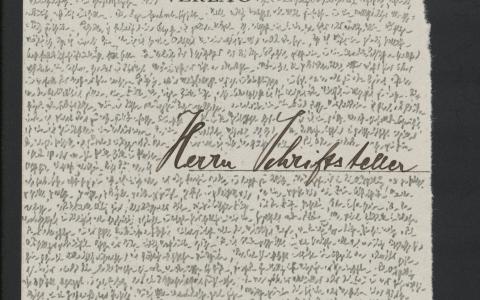
Dossier #5
Masterful Thesis: A Selection of Master Thesis
In an art and design school, writing a research thesis amounts to an exercise which is at the same time singular, perilous, useful and bold. Singular because research is, a priori, not the first goal in the training of future artists and designers. Perilous because numerous students chose the production of forms as a mode of expression as opposed to writing. Useful because writing a thesis allows them, amongst other things, to write a state of the art and to locate their personal practice, as Lysianne Léchot Hirt and Anthony Masure mentioned in the introductory talk to this case study. Bold, lastly, because a research thesis often expresses strong and ambitious critical stances, developing itself through off-piste methodologies and forms. The editorial office of Issue made this selection of theses with the support of Issue’s editorial committee from proposals by the different Master’s orientations. While the quality of the theses presented here seem indisputable to us, the concern in selecting them was less to publish the school’s “best” theses than a general survey of the diversity of issues at stake, research practices and methodologies, as well as the forms of writing in which the students engaged. The way in which a thesis fits into the pedagogy and curriculum differs greatly from one Master’s orientation to the next[note]The Master’s theses presented here come from the Master’s orientations in art (CCC, TRANS-, Work.Master) and design (Fashion and Accessory Design, Space and Communication, Media Design). The Interior Design Master’s having been created in 2019, its first Master’s theses will be available next year. A broader selection of Space and Communication Master’s theses is available on the orientation’s website: masterthesis-maspaceandcommunication.com.[/note]. Some orientations make the thesis the completion of the two years of study while others consider it more as the starting point of a critical process within their students’ practise. In order to give an account of this heterogeneity and allow for critical thoughts to be displayed in other forms than that of the final text, we chose distinct modes of presentation: text in full, extract or a complete reformulation of some research hypothesis. We are preparing to publish an autonomous case study for the Cinema Master’s, which will specifically focus on the format of the scenario. Each research work presented here comes with a preface, written either by the tutors or on the basis of an interview with the authors, highlighting the work’s intrinsic qualities and the way in which it falls within the student’s practice. Issue’s editorial office thanks the authors, tutors and orientation managers for contributing to this 2019-2020 Master thesis’ state of the art.
Cover image: Mikrogramme, Robert Walser (detail). Courtesy: Keystone / Robert Walser-Stiftung. All rights for the other pictures reserved
-
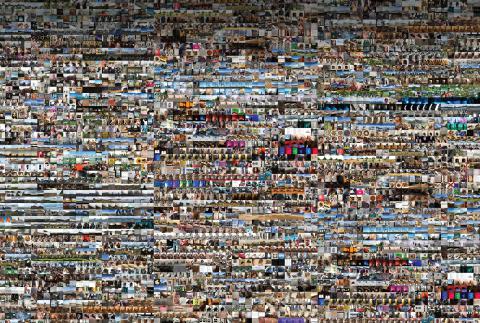
Shot on auto mode
Master Thesis by Tammara Leites
For most of us nowadays, taking a photograph usually consists of tapping a smartphone screen, setting off a series of operations which lead to a ready-to-share image for social media. The angle, framing and even retouching are carried out automatically by multiple processes which mobilise the complex resources of the smartphone – a pocket-sized computer in its own right – without us even noticing. Through an imaginary exhibition catalogue, Tammara Leites’ thesis deals with how digital automatisation techniques are occupying an ever-growing space in the mainstream use of photography. By combining an historical viewpoint to the selection of a series of art projects which explore the vernacular dimension of photography, Leites interrogates the ways in which the delegation to automatic features has shaped both usage and content. -

Converser à l'ère de l'autocomplétion
Master Thesis by Mathilde Buénerd
This Media Design thesis by Mathilde Buénerd, defended in 2019, explores autocompletion, the omnipresent tools which help device users write their daily text messages or complete online forms. Starting from a reflection on the normalisation of language that autocompletion tends to provoke, Buénerd engages in a criticism of some of design’s totem principles, including usability, calm technology and invisible design. Concerned with making users more aware of the tools submitted to them, Buénerd suggests the concept of a spiced-up technology and how it could be put into practice, hinting at both a closer and more flexible collaboration with the machine. -
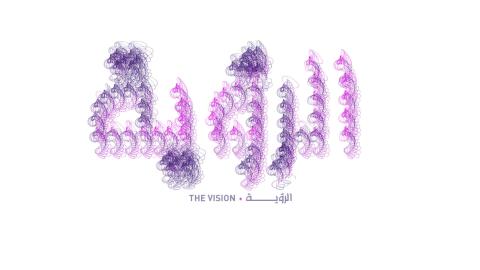
Arabic letter-forms in motion
Master Thesis by François Harik
This 2020 Media Design Master’s thesis is dedicated to the design space for Arabic letter-forms in motion. It is an excellent introduction to the subject, which François Harik tackles from the angle of technology, while pointing out that the question itself cannot be dissociated from political and cultural concerns. Harik’s thesis begins with a very well-documented state of the art. This shows the paramount importance, in the digital context, of matters such as the sources of Arabic typography in handwriting, the framework typography has fixed for and in Western European languages, and the non-Latin writing systems’ standardisation and harmonisation processes. Harik then reminds us of the lines of enquiry currently being followed by designers: for instance how to breach typographical codes so as to make full use of computer graphics potential, or now to reinterpret Arabic calligraphy’s guiding principles in the digital type design space. By taking a closer look at recent research done on temporal typography, François Harik then focuses on Arabic letter-forms but in the field of motion design. And thus he puts forward the problem he faces in that field: how to set Arabic letter-forms in motion and how to represent them if these are fixed and limited by the existing type design space and the rules it implies? Harik’s thesis is introduced by Daniel Sciboz, lecturer and tutor in the Media Design Master at HEAD – Genève. -

Design viral : méthodologies pour un buzz citoyen
An Interview with Artist-Researcher Caroline Bernard
In this interview, Caroline Bernard returns to some practical experiments she conducted with colleagues for the research project “Design viral: méthodologies pour un buzz citoyen.” From an attempt at a “self heroisation,” to spreading rumours and infiltrating social media and the street, the “Design viral” project used resources from “performed design” in an effort to enrich the debate around democracy – a tall order, since as a rule virality seems to be a vehicle for Manichean and discriminatory language. Considering the current pandemic, Bernard also evokes the relationship between biological viruses and media virality, going beyond mere vocabulary.
-
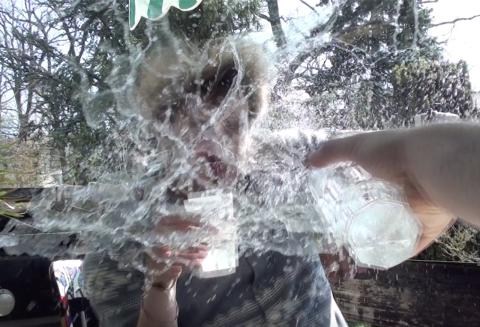
Robinsoneries
How can you continue to practise art when you no longer have access to your studio? How do you keep up your studying rhythm when every day feels the same? How can you stay connected to students, whether Swiss or international, confined to their respective shelters and countries, during a pandemic which is devastating the world? A few days after it was announced that the school would close because of the development of the Covid-19 pandemic, the Construction major of the Visual Arts Department offered its students the option to create a “lock book” cultivating these questions. Every day since March 23rd, a student has published a text and some images on the major’s web page as a chronicle of their daily life as an isolated castaway; thoughts on the future, the creation of an alternate reality, a tattered world’s poetry. We are publishing a selection of these Robinsoneries here. The complete students’ contributions, including those yet to come, are available at this address. The Construction major plans to bring together all of these entries in a book that will come out by Summer 2020. -
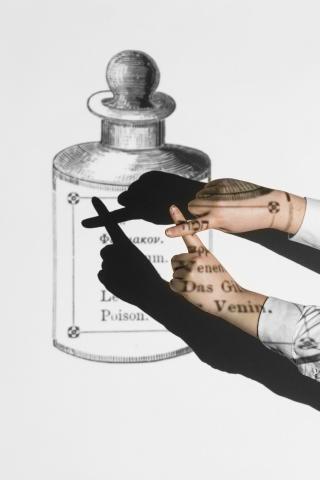
Towards an Alternative Design of Artificial Intelligence?
Douglas Edric Stanley and Jürg Lehni in Interview with Anthony Masure
Has the dominant tendency of neural networks (deep learning) drained all artificial intelligence cultures? In the field of creation, and more specifically design, how can we anticipate, if not derail, the uses of AI and their social repercussions? Anthony Masure presented these questions to Jürg Lehni and Douglas Edric Stanley, who organised the Thinking Machines workshop within the HEAD – Genève’s Media Design Master’s.
-
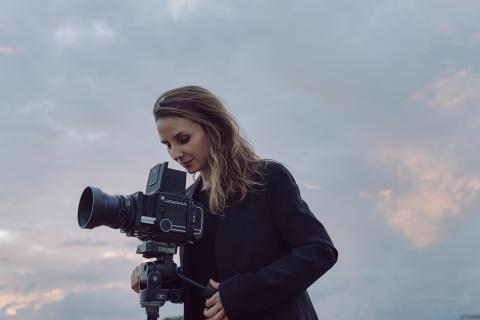
Filming the Intimate and the Political
An Interview with Petra Costa
The deputy dean of the Cinema Department Delphine Jeanneret conducted an interview with the Brazilian filmmaker Petra Costa, invited at Visions du Réel Festival taking place online from April 17th – May 2nd, 2020. Five documentary movies directed and produced by Costa, including The Edge of Democracy (nominated at the 2020 Academy Awards), can be watched on platforms associated with Visions du Réel Festival for this particular edition. Within the framework of this retrospective, Costa will also give an online Masterclass on Thursday April 30th, 2020, at 3pm, which will be moderated by Jeanneret and Giona Nazzaro (Visions du Réel). During the interview, Costa discusses her movies and her particular hybrid method, which involves the weaving together of personal content, family stories and anthropological considerations. Costa also comes back to the rise of the far right in Brazil, echoed by her latest film, centred on the deposition of the former President Dilma Rousseff.
-
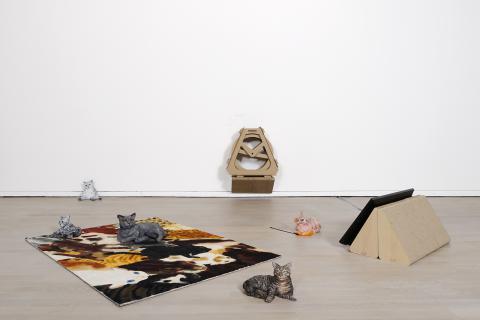
Borders of Empathy
A Conversation between Curator Charlotte Laubard and Anthropologist Emmanuel Grimaud
In this interview with Charlotte Laubard, the French anthropologist and India and Hinduism specialist Emmanuel Grimaud revisits some of the fascinating experiments and cinematographic research in which he tackled the inter-subjective borders of communication and perception, using robots, objects of worship or idols. Distrustful of the rise of empathy as a key notion in the cognitive sciences – which reduce our relationship with the environment to neuronal functioning – Grimaud hints at ways of thinking that are more inventive, reversing away from the classical subject-object dualism and our natural tendency to anthropomorphic projection. He notably finds inspiration in shamanic experiences, charged objects and theories in experimental psychology from the 19th century. Laubard recontextualises these approaches in the art field, which is seen as a place for experiences and otherness.
-
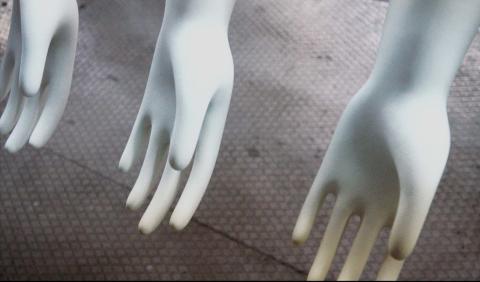
Dossier #4
Studies in Empathy: How Images Affect Us
At the core of this issue is Charlotte Laubard’s exhibition, Études sur l’empathie. Laubard, who is in charge of the Visual Arts department, organised Études sur l’empathie at the Fondation Ricard in Paris in 2019, gathering together fourteen HEAD artist students or graduates. Some of the exhibited works dealt with empathy and emotional mechanisms or tackled concern for others and the ethics of care. Some pieces used a contemporary iconography which makes viewers feel outraged or moved, as with the Lolcats memes, or explored the relationship between body and mind within the sensory experiences we call embodiment. The exhibition started from the principle that to address empathy is also to address the effects of art – in the sense that it is through aesthetics that we work towards an understanding of others. At the same time, it took stock of a tendency in the last decade for research in cognitive sciences and neurosciences to focus increasingly on the preconscious mechanisms that allow us to access other people’s emotional states, and on our ability to reproduce them thanks to mirror neurons, among other things. Interest in these mechanisms widely surpasses the field of cognitive sciences, as research in visual cultures also considers how images affect us. The Aby Warburg Institute researcher Manos Tsarikis and Laurent Huret discuss this in an interview published here. Of course, the contemporary infatuation with empathy should be looked at in light of technical developments in artificial intelligence. Already in 1982, Ridley Scott’s movie Blade Runner dealt with just that: androids supposedly distinguishing themselves from human beings through an absence of empathy. Laubard evokes the question of the empathy of machines with the anthropologist and India specialist Emmanuel Grimaud, who notably worked with scientists to develop a robot of the god Ganesh. The robot answers devotee’s prayers. Despite all the research, empathy remains a concept whose definition most find hard to grasp and whose appraisal is not always positive. The psychologist Paul Bloom thus wrote Against Empathy, in which he reveals the perverse effects of identifying with someone else’s emotional states, sometimes leading whole groups of people to develop a collective hatred based on criteria such as sex or race. Bloom defends the notion of sympathy – a rational reaction to the feelings of others, not a semi-conscious imitation. Simon Pinkas’ Master’s Thesis on online outrage – which is re-published in this case study – illustrates the risks of a purely empathic society.
Cover image: Vanessa Safavi, Velvet, 2019, (screenshot)
-
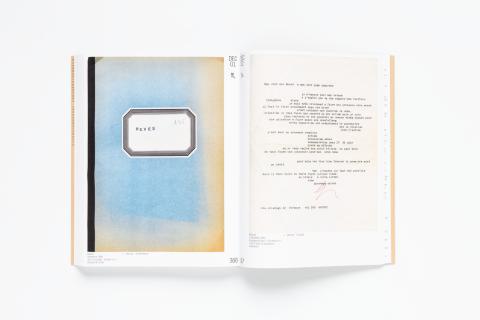
Dream Piece
The book Almanach Ecart. A collective archive, edited by Elisabeth Jobin and Yann Chateigné, concludes two years of research conducted in the archives of the Geneva collective Ecart (active between 1969 and 1982). Co-edited by the HEAD-Genève and art&fiction in partnership with the Mamco, and typeset by Dan Solbach, this collective editorial project received the Golden Letter, the highest honour from the “Best Book Design from all over the World 2020” award. In order to celebrate this outstanding distinction, we are publishing an important essay from the book, essential for the understanding of Ecart’s practice. In the published essay, Chateigné considers John Armleder’s performance Dream Piece (1976): a Native American headdress, a roller duck and a tape recorder are mentioned, among other things. Chateigné’s text presents itself as a meditation on the archive and the archive’s ascendency over the future.
-
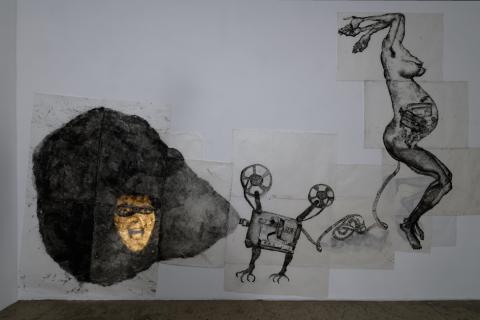
Head to Head IV – Marie Losier
Video interview by Lucien Monot and text by Julie Enckell Julliard
This portrait in two parts of Marie Losier, professor at the HEAD-Genève’s Cinema Department, addresses two of her complementary practises. In a video interview with her former student Lucien Monot, Losier talks about her movies, which are free and poignant portraits of people out of the ordinary, always on the edge, as with the lucha libre gay wrestler Cassandro or the musician Genesis P-Orridge. In response to this interview, Julie Enckell Juillard took an interest in Losier’s drawings, in which she found Losier’s taste for fringes and the painful contortions of living with limited bodies, but also the joys of existing and creating.
-

Radi∞{((0O0))}∞Head
During the weeks at the beginning of the second semester at the HEAD – traditionally dedicated to transversal workshops – the artist Vidya Gastaldon invited the sound artist Jonathan Frigeri to design a radio workshop with around twenty registered students. Two podcasts which stemmed from this week of workshops are published here. Since being invented at the beginning of the 20th century, the radio mass-medium has been re-purposed by artists who have made it their own. Their personal, often critical, use of radio goes against the mercantile, controlling and conformist tendencies of mainstream radio and explores the poetic potential of experimenting remotely. In his introduction, Jonathan Frigeri lays the foundations of a radio-art which goes beyond simply mixing sounds, music and speech, taking into consideration the listening mode and the phantasmagoria produced by the faceless voices carried by radio waves and optical fibres. Alternating silence, relaxation, noise and chaos, poems, readings, parodies and music, the students’ creations bear witness to the manifold expressiveness of radio, a medium which the Internet has made widely accessible in recent years. -
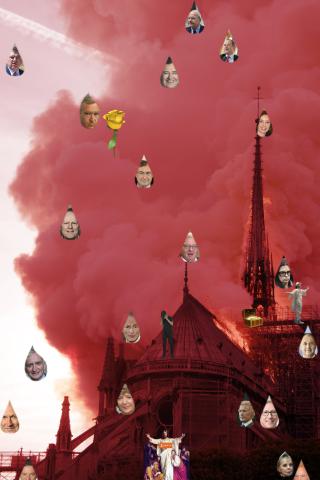
Performative images
Lauren Huret Interviews Manos Tsakiris
With the participation of the researcher Manos Tsarikis, the interdisciplinary research project “Body & Image in Arts & Sciences” attempts to measure how images affect us. What would be the psychological and formal mechanisms at play were an existing link to be established between images and political behaviour? In conversation with the artist Lauren Huret, Tsarikis mentions how a press photograph can dehumanise groups of people in the way it is framed, or how people, depending on their age and Internet proficiency for instance, will react to images and evaluate their veracity.
-
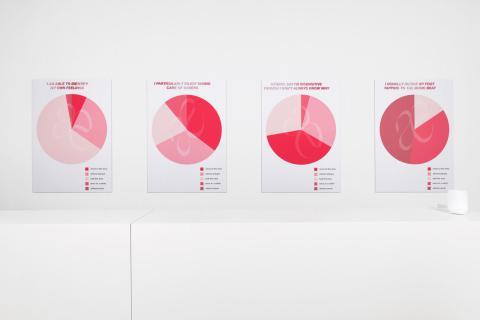
Guinea pigs assemblages
Réflexions de Sylvain Menétrey sur la pratique d'Eva Zornio aka Affective Evaluation
Since 2018, artist and Work.Master graduate Eva Zornio has been developing a series of participative projects under the label Affective Evaluation, where she asks the audience to consider the question of empathy. In this text, Sylvain Menétrey postulates that Zornio’s project is actually a cover-up which allows her to test the very motivations of the audience’s participation as well as its willingness to submit to authority. -
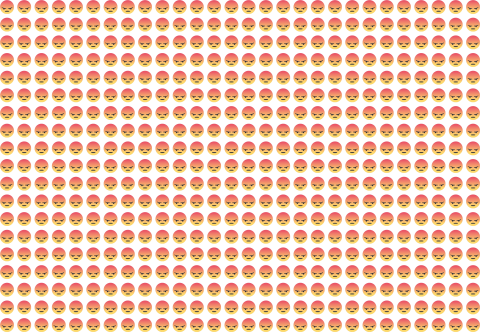
Outrage!
(Social) media and the coaxing of the moral mind
In his Media Design Master’s Thesis, Simon Pinkas analysed the rise of outrage culture on social media, studying significant recent cases in which true or false information triggered important – and sometimes worldwide – waves of emotion. His work thoroughly explores how deregulated ad-driven companies have managed to become sounding boards for outrage. Pinkas thus shows the way in which any given person can gain a large audience by spreading fake news, just as in the case of a Christian conservative couple operating from their garage in Pennsylvania. In a second phase, Pinkas assesses how this outrage culture has already changed our relationship with politics by fostering the rise of far-right populism and threats against freedom of speech. -
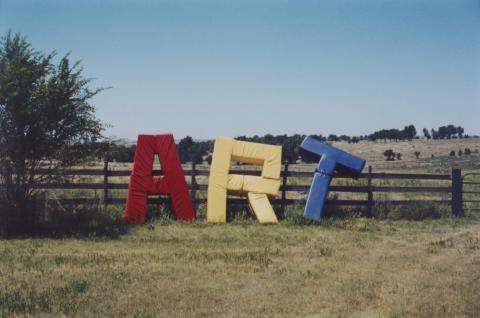
Head Voices V – Nathalie Boulouch
"La photographie couleur n'est pas vulgaire"
Every month, Ambroise Tièche unearths a notable lecture given at the HEAD – Genève during its history, from past to present. Most of the video recordings he uses have never been made public. A Visual Arts teacher and artist, Tièche comments on his choices, explaining the interest of these discourses in relation to contemporary art and design. For this new chapter, Tièche selects a lecture by French art historian Nathalie Boulouch, who was invited to a talk at HEAD in 2009. At that time, Boulouch's research concentrated on the eruption of colour in photography and the way this reshaped the traditionally black-and-white medium.
-
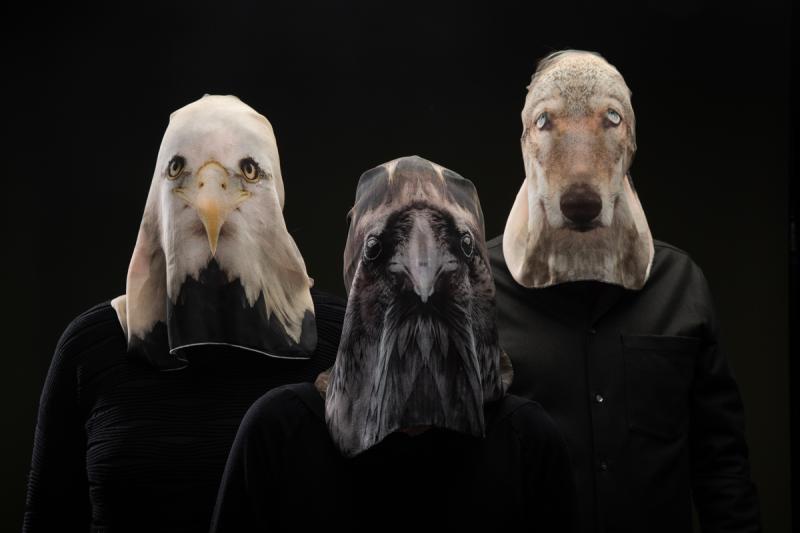
How to Create Performative Objects
A Research Between Design and Theatre
During a research project, the stage director Isis Fahmy and designers Laura Couto Rosado and Benoît Renaudin joined forces to assess the concept of performative objects. This notion, which they invented, covers objects that set a story in motion but which are above all fictions in themselves, specifically imagined for on-set action and actively evolving in the same way as the actors during their performance. At the time of this research – a joint project by the HEAD–Genève (HES-SO) and the Manufacture in Lausanne – Couto Rosado, Fahmy and Renaudin invented three practical capsules to explore points of convergence between the design and theatre practices and to consider our relationship to the other, be it machine, material or a living being. Interviews were also conducted with the German designer Judith Seng, and with the French stage director Halory Goerger. This article summarises different moments in the research process by combining various formats, such as theoretical text, video footage, the design of performative objects, captioned photographs and interviews.
-
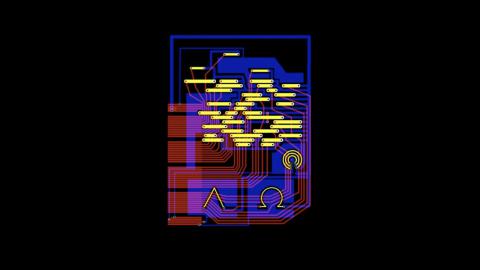
Talking Heads – Jonas Voegeli
Zurich-based art director Jonas Voegeli was a guest at a Talking Heads conference on October 15th, 2019, where he presented a series of books created with the Hubertus Design studio. These award-winning books bring together regular “good design” principles – never more than two typographies per page, a strict grid, etc. – and often radical concepts in terms of content organisation, which act as metaphors for how the information was produced or assembled. The Hubertus Design studio is also technically innovative, working for instance on a “smart book” equipped with sensors that enable words to appear when the reader talks to it, like an oracle. -
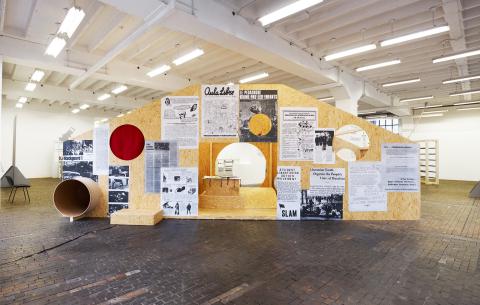
Head to Head III – microsillons
The HEAD–Genève’s TRANS– Masters is devoted to students wanting to get involved in socially engaged and collaborative artistic projects or cultural mediation. The Masters was founded by microsillons, a duo composed of Marianne Guarino-Huet and Olivier Desvoignes. In this filmed portrait, they look back on their career histories and how they met. Both having an interest in collective practices, Guarino-Huet and Desvoignes conducted practice-based doctoral research, thinking about alternative educational methods as well as the way in which working together with non-artists can transform our cultural models. Guarino-Huet and Desvoignes also speak about the advent of cultural mediation in academia and the educational turn in curatorial practices, in which they took part as mediators at the Centre d'art contemporain de Genève between 2008 and 2010. -

Third culture clothes
Having graduated as a Bachelor in Fashion Design in 2019, Maëva Weissen created an upcycled women’s collection titled “1213 Onex or the Manifest of a Third Culture.” Her source material was used football jerseys, which she reworked with traditional Scandinavian and handmade techniques such as weaving, patchwork, tufting and hand-painting. In so doing, Weissen wanted to contribute to the development of the circular economy within the fashion industry. This committed project also raised awareness about a series of phenomena linked to cultural domination. For instance, the project denounces the imperialism of the fashion industry, in which street fashion has been reappropriated to create products inaccessible to those who inspired them. The collection also addresses the position of women in grassroots neighbourhoods such as that of the Cité d’Onex – which serves as a backdrop for the collection’s imagery – where an openly macho culture can prevail. The collection collages the identities of football clubs and nations and through upcycling produces creolised objects which are greater than the sum of their parts. It was with this project that Weissen won the Geneva Red-Cross’ Prix Art Humanité in 2019. -
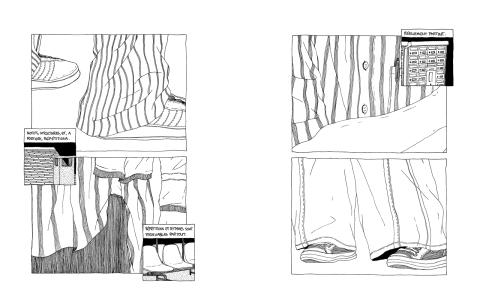
Some fragments of conversation
Discourse around comics is often dominated by the question of drawing. Freshly graduated after majoring in Image/Story, Jeff Délez embarked on an experiment in which issues relating to decoupage are of paramount importance, notably through repetitions and ellipses. Délez, whose final project, Quelques bribes éparpillées par-ci, par-là (unpublished) has been shortlisted for the 2019 Töpffer Award for young comic book writers, speaks with Florence Marguerat about the particulars of his narrative, as well as his influences and first steps in comics. -
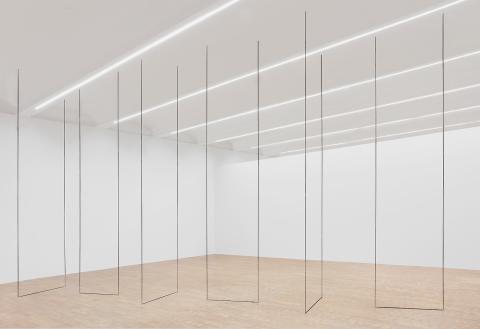
Défiler le défilé
In this introductory text, Christophe Kihm addresses the formal logic of the fashion show. The French term for fashion show, “défilé”, refers to a narrow pass in a mountain which people walked through in single file, as well as – by metonymy – the actual act of walking across the pass. Based on this, a “défilé” refers to time rather than space. However, through the construction of an image of this lapse of time to a specific rhythm, the “défilé” also produces its own space.
-
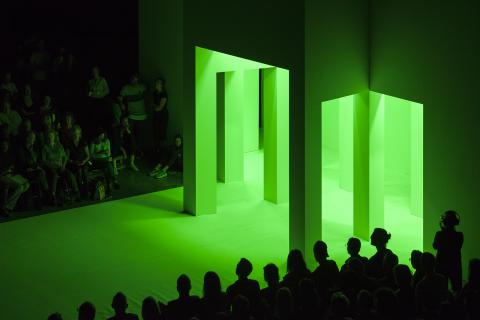
Dossier #3
Models on the Jetty: Form and Function of the Fashion Show Today
After several months of preparation in the bubble of the studio, clothes suddenly come to life in the public sphere and transform into a desirable object/image in the frenetic atmosphere of the fashion show. The main parameters of fashion shows, with their models, catwalks, looks and music have hardly changed since these came into being at the beginning of the 20th century. However, the history of the genre boasts a few acts of bravery as seen in Thierry Mugler’s grand, mainstream shows, Alexander McQueen’s dramaturgy and John Galliano’s exuberance. Faced with the pressures of a sustainable fashion model and the digital industry, which have challenged the rhythm of collections as well as the way fashion images are consumed, such major productions seem like a thing of the past. Aude Fellay has interviewed several designers for this special feature dedicated to the issues facing contemporary fashion shows. Although they all condemn the industry’s overproduction and the image effects, at the expense of the clothes, that surround fashion shows, they nevertheless remain essentially convinced of the relevance of this model as a means to share a brand’s vision. Featuring a presentation of scenography projects from HEAD – Genève’s Department of Interior Architecture for the school’s 2019 fashion show and an aside written by Ambroise Tièche about the word of mouth which a fashion show triggers with specialists and laypersons, this special feature addresses a model that is more than willing to reinvent itself.
-
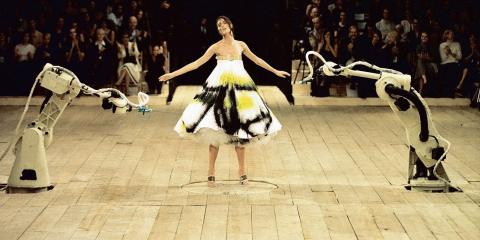
The Fashion Show at the Heart of Debate
The recent climate change protests have affected the Fashion Weeks. The event in Stockholm was cancelled, while it was symbolically buried by the Extinction Rebellion activists in London. In other words, it may be time for fashion shows to turn a new page. Through four interviews with fashion designers Faustine Steinmetz, Emilie Meldem, Cosima Gadient (Ottolinger) and artist Marlie Mul, Aude Fellay reflects on the main criticisms as well as the undeniable benefits of this performative model, which concentrates and consumes plenty of energy. With her interlocutors, she evokes the power of the fashion show’s creative synthesis and speculates about the future of this presentation mode.
-
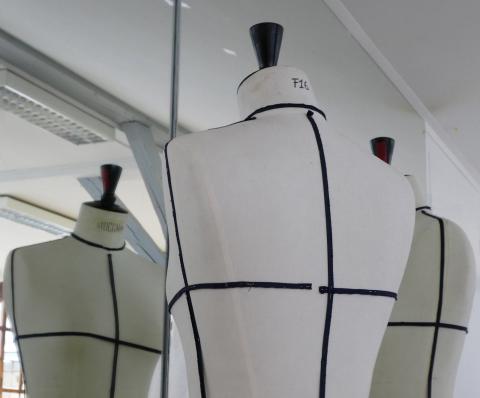
A Piecemeal Conversation on Bus No. 6 on 8 November
A Short Play by Ambroise Tièche
Invited by the Fashion Department to evoke the fashion show, artist and Visual Arts teacher Ambroise Tièche imagines a conversation that drifts from one thread to the next following a Geneva bus route.
-
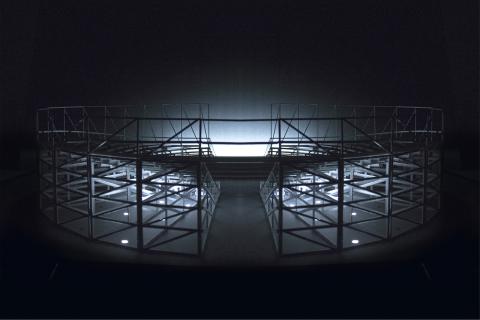
Scenographies Projects for HEAD's Fashion Show 2019
For the first time, the Department of Interior Design has been commissioned to design the scenography of the fashion show for the Fashion Design graduates’ collections which will be held on 8 November 2019 at Le Cube on the school’s campus in Châtelaine. Several students submitted their projects. Ultimately, after a competition in several stages, Paulo Jorge Dias’ project Poésie was selected. The head of the workshop, Leonid Slonimskiy, discusses a selection of students’ works for this scenography as well as issues of space, narration and image associated with a fashion show in an age when cameras are ever-present.
-
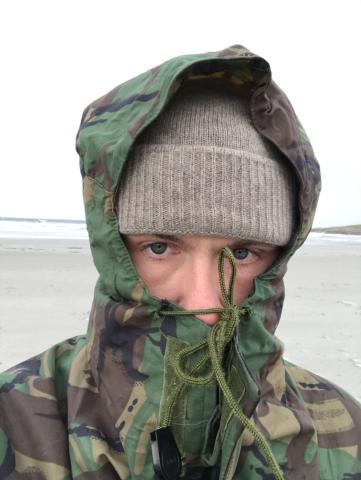
Alex Mullins: designer d'images
In this interview carried out in connection with a master class focusing on prints, which he conducted at HEAD – Genève, Alex Mullins evokes his obsessional relationship with ideas. The London fashion designer takes his inspiration from powerful images that flow from screen to body and vice-versa. His clothes stand out thanks to a series of polarities: sartorialism and streetwear, chromatic shocks, creativity and rationality. His approach to design and images is strongly influenced by internet culture, with its memes, social networks, infinite repertoire of influences, and flattening of hierarchies and temporalities. Just like his collections, his Instagram account, which features photos of his fashion shows, fittings and private life, bears evidence to these loops that feed off each other. In this interview, the designer also addresses his collaborations with models and stylists as well as the abnegation required for an independent fashion brand to exist. Graduate of Central Saint Martin’s and The Royal College of Art, Mullins worked with designers such as Alexander McQueen, Jeremy Scott and Kanye West before establishing his own brand in 2013 with the support of the British Fashion Council. His collections are now on sale in fourteen shops in Australia, Japan, China and the US.
-
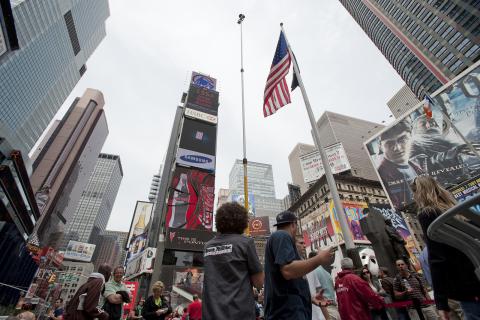
Ethnography through Design
We are sharing a paper originally co-authored by Lysianne Léchot-Hirt and Nicolas Nova for the scientific periodical Techniques & Culture. The paper describes how the “creation-research” approach used by designers constitutes a unique form of technography, which may prove fruitful in the field of anthropology.
-
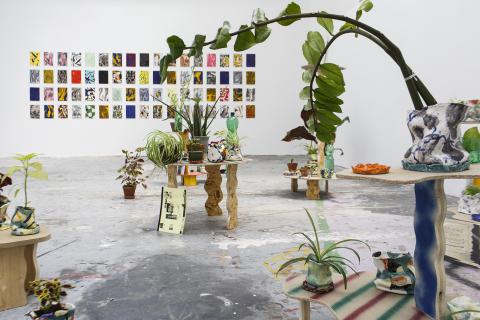
Enseigner par le milieu
Upon entering his final year as Head of Visual Arts in September of 2017, Yann Chateigné addressed some of the key principles he had learnt during his eight years in the department. Totally foreign to teaching, Chateigné had immersed himself in this new experience and, in this transcription of his lecture, he lists the methods he invented in ten fragments, akin to logbook entries for unknown territory. Far from any classic pedagogical textbook, his words, which have been slightly edited for this written version, draw inspiration from the work of anthropologists, neurobiologists and philosophers. As a result, Chateigné was able to think in terms of relationships and organisations that are non-authoritarian, and which support the flow of ideas and welcome difference in order to allow the unexpected to express itself. -
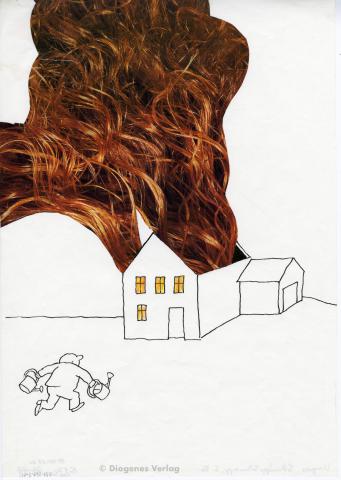
Head Voices IV – Tomi Ungerer
In discussion with Thérèse Willer
Every month, Ambroise Tièche unearths a notable lecture given at the HEAD – Genève during its history, from past to present. Most of the video recordings he uses have never been made public. A Visual Arts teacher and artist, Tièche comments on his choices, explaining the interest of these discourses in relation to contemporary art and design. For this new chapter, Tièche pays tribute to the late artist and cartoonist Tomi Ungerer, who gave a talk at HEAD in 2015. Ungerer’s immense career was in touch with the news stories and society of his time and embraced a number of different genres, styles and topics. Ungerer is joined in the discussion by Thérèse Willer, the curator of the Tomi Ungerer Museum.
-
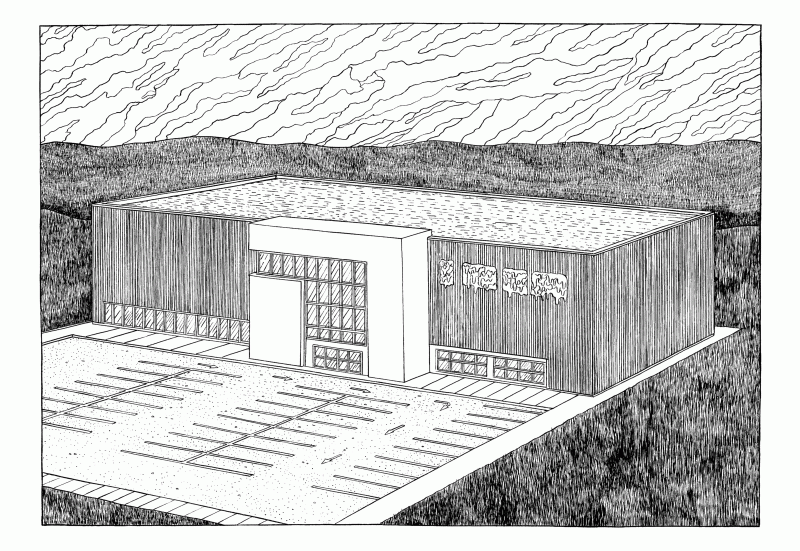
This is not a test
Helge Reumann published his new comic book SUV at the Editions Atrabile in 2019. Benjamin Stroun, Reuman’s colleague at the HEAD’s Image/Story major, dedicated a text to him in which he looks at Reuman’s collage of visual documents, which resolve themselves into a pre-apocalyptic and war-against-all atmosphere. Stroun analyses how, through nightmarish multiplications, graphic prototypes give form to tribes, gangs and populations. He also summarises how Reuman disturbs linear narrative by inserting drawings of disquieting buildings in double-page spreads, which are apparently external to the narration, but actually create multiple associations. -
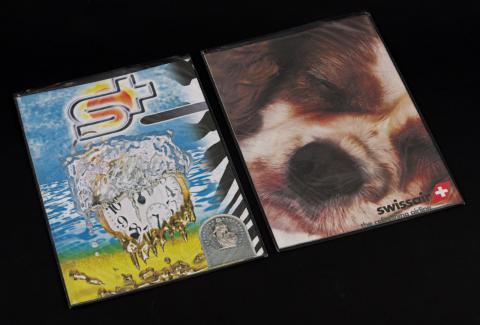
An Initial Conversation
Denise Bertschi with Giulia Bini
Exploring places in the world where Switzerland has played an active historical role, whether as a nation or through its nationals, the artist Denise Bertschi works on the notion of « Swiss neutrality. » Bertschi defines the traces she finds as soft evidence, which she then organises and connects with other images and narratives in her video, photography and graphic design works. Her work reveals the spirit of a time and place, translating into images the ambiguity of the abstract and unsustainable notion of neutrality — a smoke screen for Switzerland’s international activities. In this talk with the curator Giulia Bini, Bertschi evokes her mode of operation, how she combines narratives, and her use of the visual clues she finds on site. Bertschi is currently writing a PhD thesis in art (HEAD-EPFL) under the supervision of Doreen Mende and Nicolas Braghieri.
-
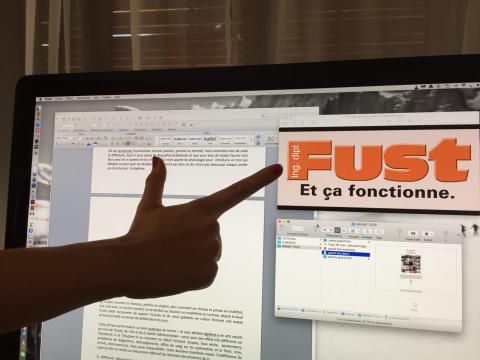
Oh, un diplôme
The 2018-2019 school year in Visual arts ended with the traditional Grand Tour exhibition, which presented the diploma work of students in the Boulevard Helvétique, James Fazy and Général Dufour buildings, in a climatically overheated month of June. Fabienne Radi lets visitors choose which works in the exhibition should be pointed out the and, in a concluding text, gives some final advice to the (ex-)students and considers the meaning of a diploma. -
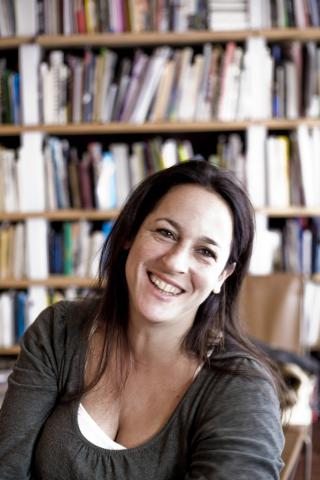
Head to Head II – Alexandra Midal
In this portrait, which takes the form of an interview, Julie Enckell Julliard seeks to grasp the originality and radicality of Alexandra Midal’s thinking, which enlarges the field of design theory by tackling unusual topics such as the links between the Industrial Revolution and the appearance of the first serial killer in Chicago. Formerly the director of a Fonds regional d’art contemporain (FRAC), Midal took an avid interest in design and the social issues it raises while writing her PhD thesis in Princeton. Often stemming from pop culture, her case studies are strategically chosen to undo some of design theory’s authoritative hierarchies. Midal, who is also a professor in the Space and Communication Master, explores the flaws of history and reconsiders its founding stories. All the while, she ponders the contemporary inflation of design, a conquering discipline which ceaselessly appropriates new fields of expertise.
-
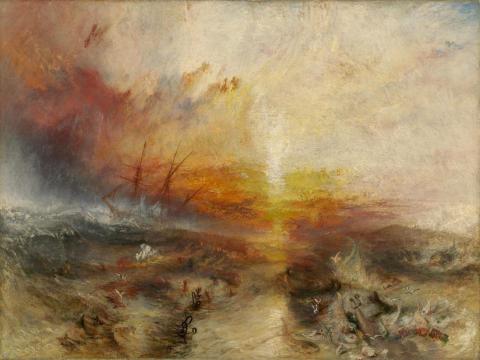
Dossier #2
Common Denominator: Art in the Ruins of Modernity
In William Turner’s Slavers Throwing Overboard the Dead and Dying, Typhoon Coming On (1840), sublime, unrelenting nature meets the revolting behaviour of men treating other men as refundable commodities. Images of black bodies at sea echo those of migrants drowning in the Mediterranean today. The funeral landscape can also be read as an allegory for a wrecked planet, brought to a state of disrepair – some scientists are predicting – by the exploitation and combustion of human and natural resources. The thematic issue gathers research projects, artistic practises, lectures and talks from the HEAD, tackling both the place of humans in nature and their way of accepting or refusing to see the Other as a person, be they human, animal or a river. In the face of collapse, artistic approaches that undo the sovereignty of the individual, the Nation-State and other expropriating organisations are called into action.
-
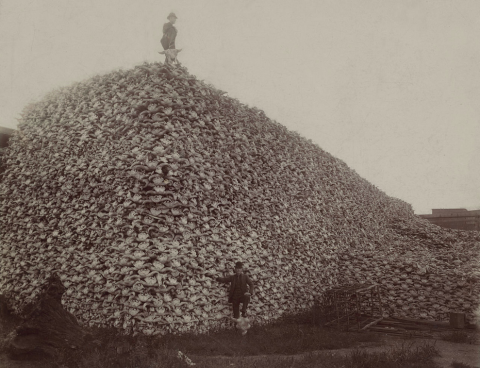
Diasporas of the So-Called Anthropocene
Notes in the Margins of "The Anthropocene Atlas of Geneva" - An essay by Gene Ray (HES-SO)
Gene Ray (HEAD – Genève, HES-SO) calls for a post-modernism that would fully overcome capitalist modernity and its catastrophes. From a reading of Walter Benjamin’s Thesis on the Philosophy of History and Trauerspiel, Ray invokes allegory as an operational mode likely to save the relics of lost fights and inspire future struggles. Art—thought of as a knowledge that uses not only reason but also the senses—must collect these relics lest they become the trophies of the ruling class: in the apocalypse-stricken aboriginal people of America and the devastating effects of the ecological crisis, Ray sees the consequences of the modern progress it pursues. Ray’s sharp reflections follow the completion of the The Anthropocene Atlas of Geneva (TAAG) HEAD-FNS collective research project, in which Ray took part. Amongst other things, TAAG put the little “green” Geneva back into the entanglement of the Anthropocene’s planetary perturbations through movies, documents, and interviews made by artist researchers.
-
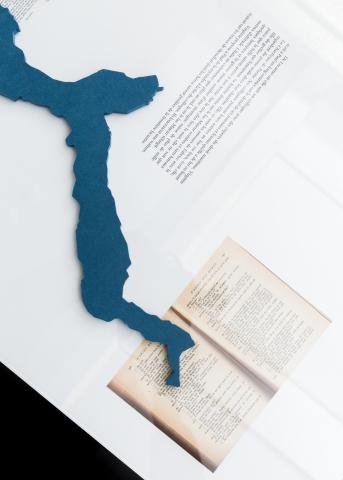
Water policy and poetics
A conversation with Aurélien Gamboni, Jean-Pierre Greff and Daniel de Roulet
Source of life or the « armed wing » of migration policies; object of contemplation for painters and object of fears for islanders; static or furious element, deceptive metaphor for commercial exchanges and the digital; water circulates between poiesis, poetics and politics. In this podcast, the artist Aurélien Gamboni, the writer Daniel de Roulet and the art historian and HEAD director Jean-Pierre Greff share varied perspectives on the ambivalence of the liquid element. -
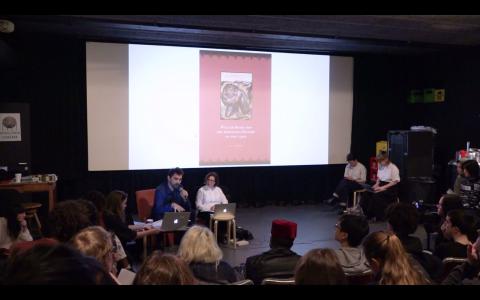
Double Bound Possession Master Symposium – Introduction
Avery Gordon in conversation with Anselm Franke
In English, the word “possession” has two divergent meanings, perhaps not quite accidentally. It’s earliest sense is taking possession or occupation, which becomes legal property. The second meaning is of a thing or a person possessed, as in demonic possession (first recorded in the 1580’s in Europe) and the manifold forms of shamanic and other possession rituals across the non-European world. Might the two meanings, at first sight radically diverging, in fact form a double bind that sheds light on the history of the modern subject? Many historians and theorists have shown how the “self-possessed”, rational and autonomous subject of enlightenment and colonial Europe was instituted legally in relation to private property. Dis-owning one’s self in states of trance and spirit possession constituted the quintessential antithesis to that subject’s rationality. The ideological “great divide” between modern self-possessed and property-owning subjects and non-modern forms of collectivity enacted a double-bound colonial division that has had enormous influence on our understanding of forms of communion. In this lecture and introductive talk to the Double Bound Possession symposium, Anselm Franke explores the systemic interconnections between various forms - both symbolic and material - of possession and dispossession. Franke also considers our reading of the history of the modern subject through the lens of this double bind and the impact it has on our understanding of spirituality. Next, Avery Gordon tracks down the forms of dispossession that have marked the rise of capitalism at the end of the feudal period, focusing on what Marx has described as primitive accumulation through colonisation, and the Inclosure Acts in Great Britain. Gordon shows how practices such as magic and vagrancy, amongst other so-called marginal lifestyles, acted as forms of resistance against these phenomena of expropriation. -
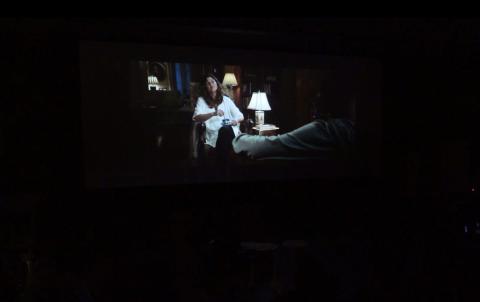
Double Bound Possession Master Symposium – Kodwo Eshun
We Are the Gods Who Are Trapped in Cocoons
What if the abolition of slavery had given way to more sophisticated forms of servitude? Is it possible to detach the notion of liberty from the history of property that secured it? These questions span the reflection of Kodwo Eshun who, relying on Saidiya Hartman, undermines some liberal concepts such as individuality and freedom as oppression’s core values. All the while, Eshun offers a reading of the thriller Get Out, putting the spotlight on race privileges. -
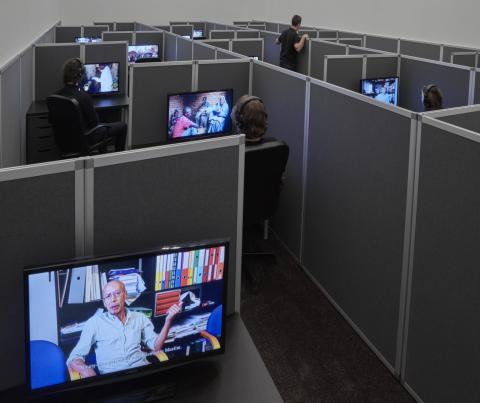
Double Bound Possession Master Symposium – Kader Attia
The artist Kader Attia shows the familial circumstances that led him to produce the Reason's Oxymorons (2015) video installation, in which he explores the relationships between pyschopathology and belief. Through the story of his epileptic sister—whose crises stopped after she spent several months with her shamanist grandmother in Algeria—he considers the paradoxes of what, in this social context, was considered a case of possession. -
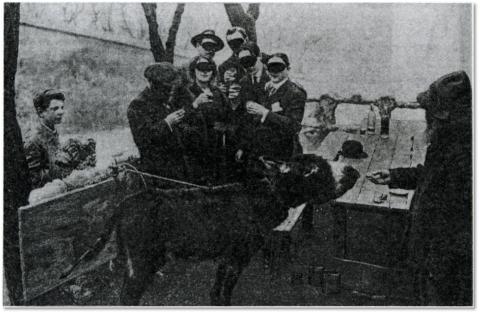
Head Voices III – Arnaud Labelle-Rojoux
"Art et mystifications"
Every month, Ambroise Tièche excavates a notable lecture that was given at the HEAD – Geneva in a more or less distant past. Most of the video recordings he uses have never been made public. A Visual Arts teacher and artist, Tièche comments on his choices, explaining the interest of these discourses in relation to contemporary art and design. Third chapter: Arnaud Labelle-Rojoux on Incoherents from the specific viewpoint of an artist-researcher.
-
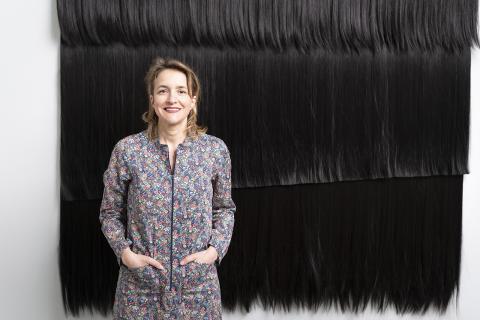
Head to Head I – Charlotte Laubard
On the run up to the Venice Biennale 2019, Sylvain Menétrey sat down with Charlotte Laubard, the curator of the Biennale’s Swiss Pavillon and the head of the HEAD’s Visual Arts’ department. The interview evokes the political dimension of Laubard’s choice of a duo of female artists, Pauline Boudry and Renate Lorenz, to represent Switzerland. It also tackles other commitments from Laubard, notably within the framework of the Nouveaux Commanditaires project, which supports citizens commissioning a public artwork. Laubard defends her vision of art as collective creation rather than the expression of an individual genius, and as social factor rather than autoreferential practice.
-
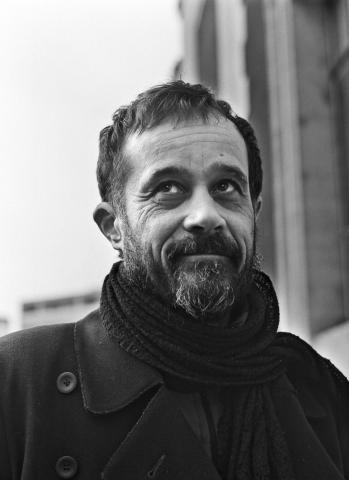
Talking Heads – Claude Barras
It took Claude Barras ten years to complete his first full-length animation film My Life as a Courgette (2016), which tells the story of a young, round-faced, big-eyed orphan boy. The film was awarded two Césars. Talking with Delphine Jeanneret, from the Cinema department, and Myriam Poiatti, from the Visual Communication’s Image/Story minor, Barras offers an insight into the making of this little epic, which was made using modelling-clay puppets. The talk is dotted with preliminary videos and drawings, giving an understating of the overall production process from scenario and storyboard to dubbing, animation and shooting, as well as the collective dimension of such a project. Barras also evokes his previous illustration works, talks about Georges Schwizgebel’s influence on his decision to work with animation, and discusses his latest film project, about an orang-utan in the Borneo rainforest.
-

Head Voices II – A Talk by Harun Farocki
Harun Farocki (1944-2014)
Every month, Ambroise Tièche excavates a notable lecture that was given at the HEAD – Geneva in a more or less distant past. Most of the video recordings he uses have never been made public. A Visual Arts teacher and artist, Tièche comments on his choices, explaining the interest of these discourses in relation to contemporary art and design. Second chapter: the late filmmaker and theorist Harun Farocki.
-

The Alien and the Alibi
Christophe Kihm (HEAD – Genève, HES-SO) outlines the history of extra-terrestrial life representations through a series of scientific, philosophical and artistic speculations. The field Kihm calls “alienology” — which is intended to study our relationships with the extra-terrestrial — is based on exchanges between science and fantasizing. The exchange, he claims, also occurs within the relationship between extra-terrestrial and extra-earthling viewpoints. The prospect of the “all-other” (the alien) and that of the “all-elsewhere” (the alibi) allows for the emergence of decentering practices. This text comes from a paper given on January 28th at the HEAD – Geneva during the “Spacecraft and Alien Physics in Orbit” day, within the framework of the Distortion Series lecture cycle offered by the Media Design Master’s. -
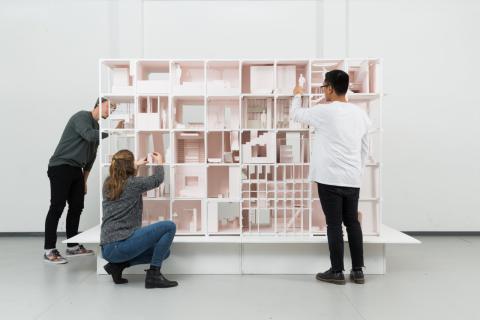
A Dialogue on Interior Design Education
Interior design is subject to the growth of architecture and design, which appropriate its own field of competence. Yet interior design’s particularities — flexibility and timeliness as well as its own considerations of atmosphere, the decorative and narrative — are not easily subsumed into neighbouring fields. In this talk, the director of HEAD – Geneva, Jean-Pierre Greff, and the manager of the Space Design Department, Javier Fernandez Contreras, evoke present or future avenues intended to reaffirm interior design’s legitimacy. These avenues include a development of interior design’s theoretical foundation and an encouragement that students be recognised as authors.
-

Éclairer les recoins
Passing through Geneva in 2018, the comic-book author and founder of the independent publishing houses L’Association and L'Apocalypse Jean-Christophe Menu sat down with Clément Paurd to talk about his obsessions. Menu explains his chronic oscillation between the genres of autobiography and fiction, as well as the many formats of his intense publishing activity. When it comes to drawing, Menu invokes the power of schematisation that rouses the reader’s imagination—a trip inside a fragmented mind passionate about exploring all the possibilities of his medium. -
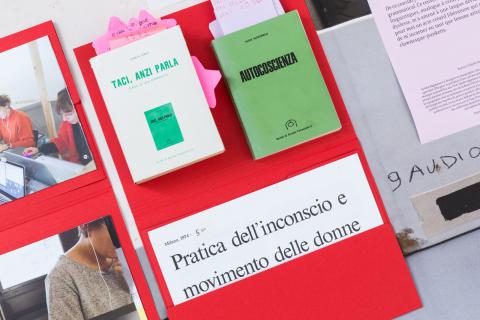
Terms and Conditions for Practice-Based Doctoral Research
Irit Rogoff, Professor of Visual Culture at Goldsmiths University in London, and Samuel Bianchini, artist and professor-researcher at EnsAD in Paris, were guest speakers of a research day on May 25th, 2018, organized by the CCC PhD-Forum at the HEAD in collaboration with the EPFL. Both speakers shared their experience and vision of what it means to undertake research in art and design. What do these processes activate? What are the long-term consequences of such researches as a network of practices? Founder of three PhD programme at Goldsmiths, Irit Rogoff argues that the “research turn” is characterized by a shift from “inherited knowledge” to working “from conditions.” She advocates that one’s own vulnerability and instability must be the starting point of a research in constant dialogue with formal knowledge. Responding to the latter without adhering to it, as well as invoking the subjectivity without narrating it as such demands a new methodology and a new vocabulary in order to resist the bureaucratic and neoliberal agendas which force experimental research to be formatted along fixed pathways to employment. For his part, Samuel Bianchini shows the intermingling of theory and practice, emphasizing the case of the collective research situation experienced during a workshop session. The empathy inspired by the failure of an engine built to perform an expected movement can—for example—prompt a reflection on the notion of disabled objects. His interactive apparatuses and behavioural objects are examples of a practice-oriented research at the crux of society, technic and aesthetic.
-

Head Voices I – A Talk by Marie-José Mondzain
L’image qui nous fait naître
Every month, Ambroise Tièche excavates a notable lecture that was given at the HEAD – Geneva in a more or less distant past. Most of the video recordings he uses have never been made public. A Visual Arts teacher and artist, Tièche comments on his choices, explaining the interest of these discourses in relation to contemporary art and design. First chapter: the philosopher Marie-José Mondzain on image anthropology.
-

Ecart, 1969–1982
On the occasion of the re-edition of the book Ecart, 1969–1982. L’irrésolution commune d’un engagement équivoque, published by MAMCO (in French) and by Walter Koenig (in English), Elisabeth Jobin — who participates in a research project on the Ecart archives with Yann Chateigné — shares and comments on a video interview with John M Armleder, one of the three members of the seminal neo-avant-garde artist group Ecart. From Geneva, Ecart maintained exchanges with other worldwide artists, whether by mail (mail art) or by inviting them into their gallery/tearoom space. -
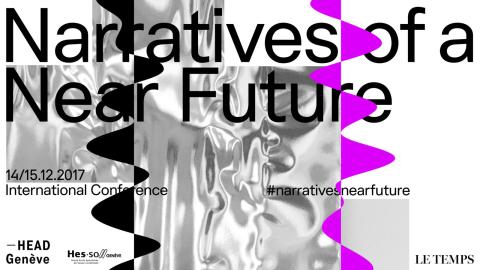
Jean-Pierre Greff – Foreword
Jean-Pierre Greff, the HEAD – Geneva’s director, returns to the founding of the school’s interdisciplinary project, and of the AC/DC (contemporary art/contemporary design) symposium, a cornerstone event for the school in 2007. Ten years later, Greff considers Narratives of a near future a way to propel the project towards new horizons of thought, though we are plunged into a systemic crisis that blockades the future. -
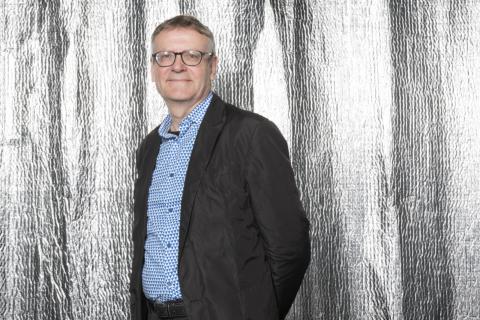
Mark Wigley
The architect and design theorist Mark Wigley has engaged in a re-evaluation of the notion of design, so as to uncover some of the features that led mankind to design its own extinction.
-
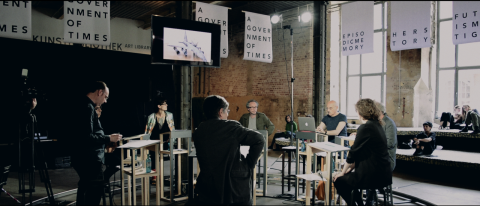
A people is missing – Extension du régime potentiel
Our age has been described as the age of winter – an ice age for possibilities. Faced with this ‘crisis of the future’ that the early 21st century is undergoing, Les Impatients – a series of works created by A people is missing – are those who work towards reconstructing the future (or futures). They are the same people who feel a sense of impatience towards a seemingly stagnant and immobile History. Based on this crisis, this series arises from the urgency to rediscover possibilities for the future. A people is missing collects and gathers together traces and hints of possible futures. They then seek to sew together these ‘bursts’ of possible futures, which many modern artists and thinkers express. They address this investigation like rhapsodes – the rhapsode who goes from town to town reciting poems written by others, the seeker, the liaison agent who, in the primary sense of the term, aims to sew and link together different spaces, continuously, as far as the limits of the inhabited world. -
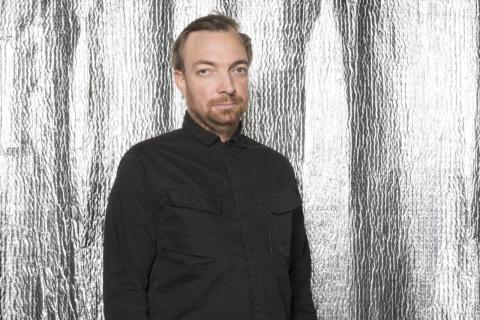
Liam Young – Hello city!
Digital technologies are radically reshaping our perception and occupation of cities. Join speculative architect Liam Young and an all-seeing smart city operating system as they take a tour in a driverless taxi through a network of software systems, autonomous infrastructures, ghost architectures, anomalies, glitches, and sprites, searching for the wilds beyond the machine. The talk is an audio-visual expedition to a city found somewhere between the present and the predicted, the real and the imagined, stitched together from fragments of real landscapes and designed urban fictions. -

Mathieu Triclot – Has the cyber-world become a reality?
A look back on a policy for information machines
Cybernetics has addressed all these issues, which have made a major comeback in the public discourse about technology, while also constructing a framework (in particular around Norbert Wiener’s public commitments) for political criticism of technology which it is interesting to revisit at this time. A cyber-policy involves several axioms which Wiener might spell out as follows: the mode of production of knowledge must be taken into account; information is not immaterial; information is not intended to be traded; governing machines are an illusion; “thinking gadgets” should be rejected and the myth of robots replacing humans, dispelled. -
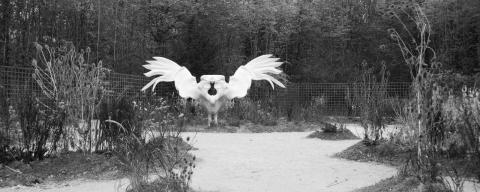
Marguerite Humeau – Riddles
The complex of works RIDDLES consists in five projects and exhibitions that took place in 2017 on the High Line in New York, at C L E A R I N G New York/Brussels, at the Schinkel Pavillon in Berlin, in the Bosquet de l’Arc de Triomphe in the Château de Versailles gardens and at Haus Konstruktiv in Zürich. The figure at the center of all RIDDLES exhibitions is that of the sphinx, a human-animal composite being present in all civilisations around the world, the beginnings of which date all the way back to the early history of humanity. In both Egyptian and Greek mythology, a protective function is attributed to the sphinx: the ability to guard humanity against potential enemies. In ancient Greece, it would also decide on life or death according to whether a riddle was answered correctly or incorrectly. Marguerite Humeau bridges the gap between past and present, hypothesizing that today’s surveillance systems, drones for instance, are directly descended from the ancient figure of the sphinx. While researching the origins of the sphinx, the artist came across the Lion Man, a figurine 35’000 to 41’000 years old, found in 1939 in the Hohlenstein-Stadel cave in the valley Lonetal. This shows that sphinx-like figures were already being made in the Upper Paleolithic Age, a time when humans were exposed to wild animals and had not yet become the dominant species on Earth. Another observation support this theory: vultures and lions, that together compose the figure of the sphinx, and that are often represented in early representations of conflicts, are two of the rare species to be eating human flesh. This led the artist to assume that early humans invented the figure of the sphinx as a protective deity to guard against enemy attacks. Humeau sees the sphinx as a hybrid of all menacing attackers, which it protects and also threatens. -

Mathieu Lehanneur
Mathieu Lehanneur draws his audience into a travelogue about his projects and the wishes of his sponsors, from a priest to a champagne brand. It appears that, beyond a considerable use of cutting-edge technology, Lehanneur’s work runs through the understanding of essential human needs and drives: the headiness of speed, circadian rhythms and protective maternal concern. -

Baptiste Morizot and Nastassja Martin – Retour du temps du mythe
Sur un destin commun des animistes et des naturalistes face au changement climatique à l’Anthropocène
Can we conceive any other relationship with the living than the one the Western world has inherited? Our relationships, between exploitation and protection, are based on a fundamental asymmetry between us and them. Could we conceive and implement relationships that would recognise our uniqueness as human animals without creating a split that would condemn us to “natural” relationships with nature’s creatures?
-
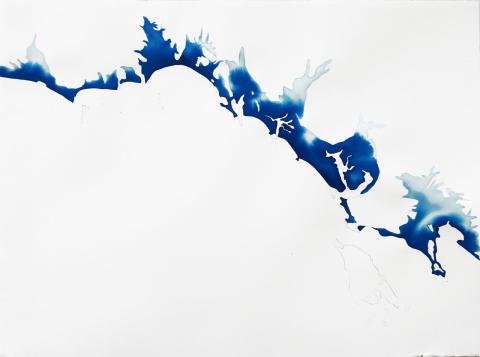
Marie Velardi
Terre-Mer (“Land-Sea”) is an ongoing project that focuses on both past and future shifting coastlines, and on the relationship between land and sea. It follows field experiments carried out by Marie Velardi in France, Scotland, India, Thailand, Italy and the Netherlands. Based on encounters and conversations with coastal residents, questioning living conditions with the sea and how human beings live with uncertainty and hazards, Marie wrote a Letter from Land-Sea. The project has also led to other productions, including watercolour cartographic paintings representing coastal areas: where the sea once was and where it could come back to, linking memories of land through old historical maps with simulations of rising seas in the future. This method of representing the land does not correspond to the usual distinction between land and sea with a coastline. In her paintings, the coastline is thicker, representing an in-between area, where the land and the sea interact and connect, where the past could meet with possible futures. -
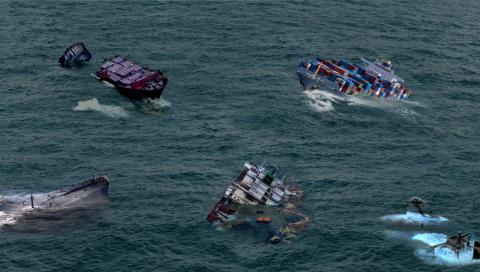
Oliver Ressler – Gathering around the Wreckage
Not too long ago, global warming was science fiction. Now it has become hard science, and a reality we already live in. According to the Copernicus Climate Change Service, average global temperature in 2016 was close to 1.5 °C above pre-industrial levels. Many scientists see this as the “red line” beyond which global warming will be unstoppable and uncontrollable. In his presentation, Oliver Ressler will talk about a new cycle of films that may turn out to be a story of the beginning of the climate revolution, the moment when popular resistance began to reconfigure the world. The project follows the climate movement in its struggles to dismantle an economic system heavily dependent on fossil fuels. It records key events for the climate movement, bringing together many situations, contexts, voices and experiences. The first two events – there is one film for each – are the action during the COP21 summit in Paris in December 2015 and a blockade of a fossil fuel extraction site in Germany in May 2016. -
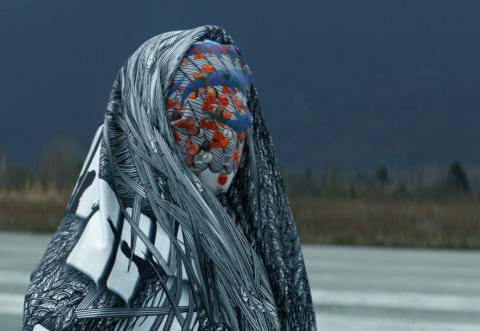
Metahaven – Complex belonging
What does it mean to live together in this new reality?
Complex belonging question: how about "the transformation profonde de la condition humaine"? The stories of the postanthropocene are (of course always) studies of new inequalities, of holographic pop singers, faceless factory workers. From pamperer vs. pampered to renderer vs. rendered. The rendered are 21 years old. "The future is a stranger." (Yes.) Complex belonging is a question of longevity of living relationships and livelihoods. How does the child explain it to you? Where does everyone go? What if you are stripped of our usual language? Task. Try to build sentences about this world without using the words smartphone, internet, server park, infrastructure, AI, drone, etc. That's hard but it is necessary to bring out new and better words for our life with contradictions, objects and others. Tell stories. Everyday science fiction. Digital monasticism. Let's do it. -
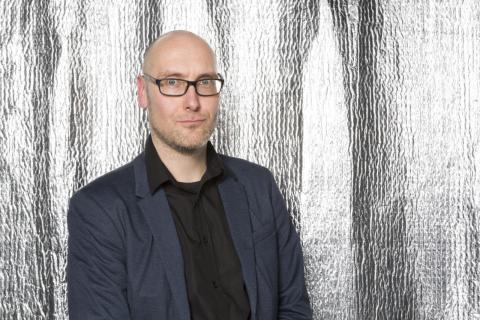
Jussi Parikka – Some people say not to worry about the air
This presentation speaks about air and the lack of air. The air is full of nitrogen, oxygen, light, clouds, wind, pollution, radio, airplanes, satellites, signals, dust, birds and more.
-
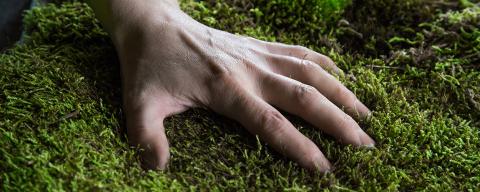
Vanessa Lorenzo Toquero – Inhabiting the Toxic Jungle
From Cyborg Moss to Bacterial Super Powers
Most interactions between humans and the Earth are mediated through technological objects, often influenced by a dualism that separates nature from culture; they filter out a wide range of data streamed from events that cut across spheres (biosphere, lithosphere, ionosphere, semiosphere, techno-sphere, etc...). This partial approach to our environment haunts our perception and requires new modes of abstraction to decipher the secrets of a global shift. By exploring the potential contribution of living beings to media systems, we build a common ground that enables equity by considering the other inhabitants at the same level to tell stories about our planet: citizens with memory, sensing capabilities and political weight that could influence policy making and help us create forms of collaboration. What would be the dialogue between a GMO with sensing capabilities and a toxic artifact? Could fungi and bacteria stream out data to map techno-geographies of our damaged locations? Could moss sound out the Anthropocene? By appropriating technologies and scientific protocols, we could give rise to new ecologies that would lead us to alternative futures.
-

Kodwo Eshun – The Science Fiction of Kojo Bernard Laing from the Year 2020
Major Gentl and the Achimota Wars, the third novel written by the Ghanaian novelist and poet Kojo Bernard Laing in 1992, is the most sustained science fiction yet written in which the futurity of the African continent constitutes the ground and the stake of warring forces. Set in the year 2020, Major Gentl and the Achimota Wars narrates the right to invent futurity as a War for and over the future existence of the continent. Laing’s conflictual vision of the year 2020 poses problems and possibilities for the future thought of science fiction’s futurities. In what ways does Laing’s science fiction from the year 2020 pressurise the predicates that support the futures narrated by science’s fictions? -
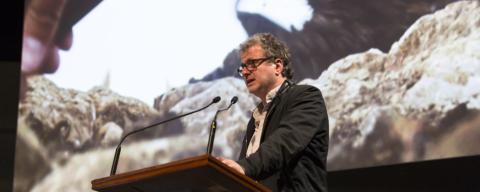
Khalil Joreige – Unconformities
Khalil Joreige presents his most recent collaborative project with Joana Hadjithomas, Unconformities, which works on temporalities and confronts the idea of the city in relation to its complex histories of inhabitation. The pair creates artworks derived from drilling cores, which reveal and fix the subterranean worlds of Paris, Athens and Beirut: three cities omnipresent in their personal imaginary. Recovered from the construction sites that discard them after use, these core samples bare their "unconformities" – temporal ruptures, natural disasters, geological movements – in full view, revealing construction as a cyclical process; the defining feature of civilizations past and present. History appears not as layers but as actions, a kind of palimpsest mixing epochs and civilizations. These poetic recompositions question the dominant forms of narrating and representing history, but also address debates around the Anthropocene. Hadjithomas and Joreige presented Unconformities at the Centre Pompidou in Paris after their nomination for the Marcel Duchamp Prize, which they won. -
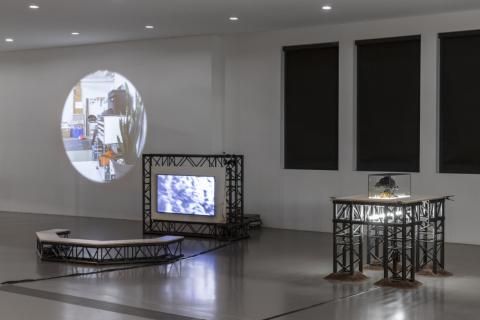
Dossier #1
Narratives of a Near Future: International Conference for HEAD – Geneva 10th Anniversary
For its 10th anniversary, HEAD – Genève is hosting the International Conference Narratives of a Near Future which addresses the challenges that the next generation will have to meet by crossing, in an innovative way, viewpoints of artists, designers and scholars. Designed as a real forum, Narratives of a Near Future features talks, screenings, performances and exhibition spaces in the new campus buildings. How do artists, designers and scholars envision the future?
-
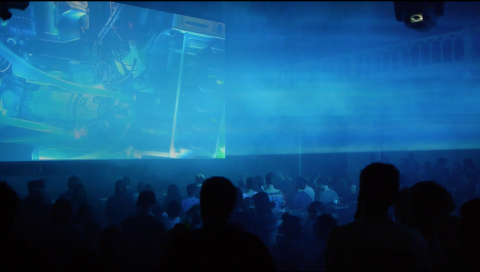
J. G. Biberkopf – Mechanics of Overflow
J. G. Biberkopf (Gediminas Žygus) works within the paradoxical relationship between club music and art music. Assembling a collage spanning a vast range of influences from dark ecology, sound studies, architecture, media theory, existentialist movements, post-dramatic theatre to grime and musique concrete. His live performance reflects the urge to make music sound as a “self-sufficient” ecology that cannot be traced back to him as a creator, but that rather seems to originate from an actual landscape. In this vein, he works intensively with aural signifiers, taking sounds that are eminent in public sphere, and noises that work as signs or memes, to explore the semiotics of sound.
-
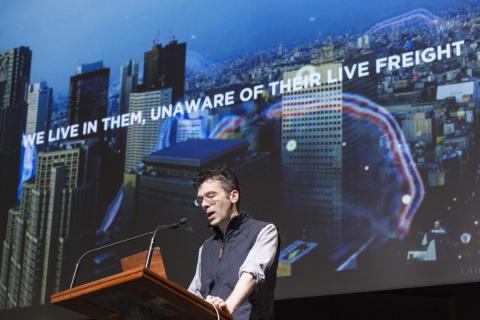
Kevin Slavin
Kevin Slavin works at the crossing of biology and art. Here, Slavin introduces us to the emerging investigative field of “urban metagenomics.” The reduction in costs of DNA sequencing has opened up new possibilities for the mapping of non-human microbiotes which compose and hybridise our bodies and environments. Slavin underlines the poetry in this unsuspected bacterial landscape. -
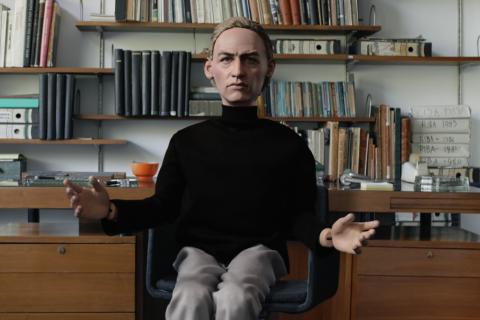
Cécile B. Evans – Feeling For You
Feeling For You is an ongoing, frequently updated performative lecture that reverse engineers the artist's practice through a series of personal anecdotes, google searches, images, audience reactions, and video clips. Meandering through the last few years of Evans' work, the talk follows the same 'hyperlinked' logic used in recent projects like Hyperlinks or It Didn't Happen or AGNES. Touching on the impacting rise of digital technology and the disorienting feedback loops it creates within society, Evans takes the opportunity to question the last few years of her own work, including projects such as Sprung A Leak, What the Heart Wants, and Amos' World. -

Michael Hansmeyer
Using examples of “caves” he created, including some for an exhibition at the Centre Pompidou, the architect Michael Hansmeyer explains how algorithmic programming allows for unrivalled complexity in architecture. The division of simple geometric forms into always-smaller units generates baroque structures that are produced by means of 3D printing. The delegation from drawing to the computer raises the question of authorship for such structures whose level of detail challenges human imagination. -
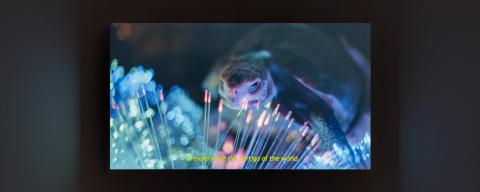
Korakrit Arunanondchai
‘Will you find beauty in this sea of data?’ A question posed by the artist, encapsulating the intense reality of the present, while Arunanondchai introduces us to his grandmother who is descending into dementia: ‘In this body the data is alive but it is stuck in a loop, the present stopped existing for me’. Korakrit Arunanondchai’s Painting with history in a room filled with people with funny names 4 explores universal themes such as — the past and the present, the future and the past, the human and the animal, memory and technology, life and death.
Annie Godfrey-Larmon
-
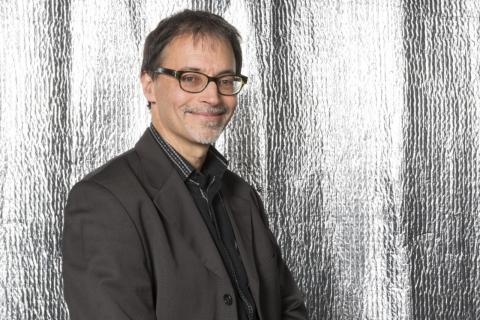
Yves Citton – Carbon Liberation Front vs. Carbon Copy Conspiracy
We often say that we live in a world of “data” (given), often forgetting that this is in fact “capta” (taken). The joint role of artists and scientists now could well be to over-take the way in which programmes deal with the capture and management of the data which prevalent economic paradigms feed on. What type of over-takings do contemporary artistic approaches give us the model of? What political value can we draw from it? This intervention will require the clever mind of Vilém Flusser to define the issues of what is at play between human gestures and the programmed devices that now make up our working and living environment. The aim will not be to advocate a de-programming retreat, away from the pernicious and totalitarian grip of programming, or to settle for re-programming (a little better) the algorithms of ubiquitous computation. Rather, the aim seems to consist in over-taking what takes us, without necessarily claiming to avoid it, but with the hope of diverting the path of the ineluctable data companies that plot our daily lives and our futures. -
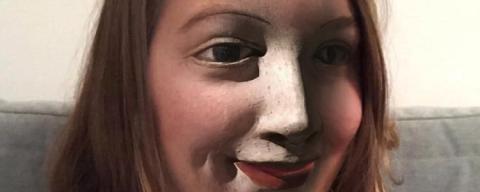
Lauren Huret – Les âmes suspendues
Entirely shot with a smartphone and a facial recognition application, the video is composed of a collection of attempts to replace identity and unexpected trade between faces and objects. In search of spectral appearances in various contexts, the application seeks to recognise the features of a woman on everything that resembles her and superimposes her own drawn, empty, disturbing masks. The video results are kind of hallucinatory "algorithmic pareidolies". -

Dan Hill
Uber (the taxi service) has made car traffic skyrocket in cities, extracting profits and resources from exploited territories and accumulating those profits in the Silicon Valley. This example is testament to the hazards of technology in cities where technology is the prerogative of big corporations. Self-driving vehicles are likely to bring about even more brutal disruptions. The designer and urban-planner Dan Hill pleads for a re-appropriation of technology through modest, adjustable, small-scale, and cooperative-inspired planning forms. -

Aimée Mullins
Aimée Mullins is an Olympian, ground-breaking model, beacon for design/tech and an actor. Born without fibulae, she was amputated below the knee at the age of one and learned to walk on prosthetics. She was one of three students chosen for full academic scholarship from the Department of Defense and at 17 became the youngest person to hold a top-secret clearance at the Pentagon. While at Georgetown she became the first female amputee to compete in the National Collegiate Athletic Association (NCAA) and was instrumental in the design of, and the first person to compete in, carbon fiber prostheses modeled after a cheetah, now the international standard for amputee runners. She set world records in the 100m, 200m, and long jump. Mullins made her catwalk debut for Alexander McQueen, becoming a muse for him and artists like Matthew Barney. As an actress, she currently appears in the award-winning Netflix series Stranger Things. She's in conversation with Jill Gasparina. -
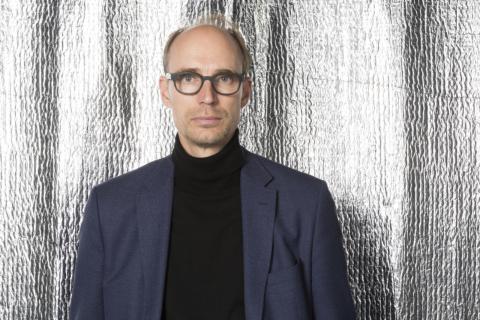
Olaf Blanke
From bionic limbs and surrogate bodies to digital selves and out-of-body experiences: Neuroscience, robotics & virtual reality
Modern robotic and haptic technology in the form of surgical robotics, prosthetics and rehabilitation robotics has been widely applied for the improvement of surgical procedures, the training of new abilities, and the restoration of lost sensorimotor functions. Unprecedented advances have also been made in neuroscience and especially our understanding of the human brain. This work discovered the dedicated structure and functions of the human brain, including the neural processes and networks that encode how our brain represents our body and how these brain mechanisms enable human consciousness and the self. I will first present our recent work in psychology, neuroscience, and digital technologies (virtual reality) that has linked consciousness and the self to the processing of bodily signals by specific neural processes. Next, I will show how these scientific insights, if linked with engineering expertise in robotics and virtual reality can be applied to the design of powerful bionic limbs, aviation robotics and medicine. I will conclude by sketching the future of the full integration of digital technologies with neuroscience and robotics in order to develop what I propose to call experience engineering of body and self. -
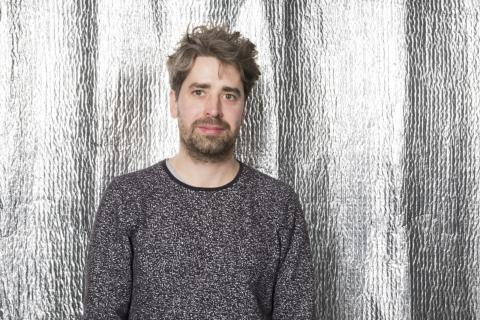
Thomas Thwaites – A holiday from being human (GoatMan)
Wouldn’t it be nice to take a holiday from being a human? A holiday from the existential angst, worry and stress of life as a self-aware mortal being. Wouldn’t it be nice to be able to enjoy fresh green grass, to gallop across the landscape, to be free from time? Yes. So I tried to become a goat to escape the angst inherent in being a human. The project became an exploration of how close modern technology can take us to fulfilling an ancient human dream: to take on characteristics from other animals. But instead of the ferocity of a bear, or the perspective of a bird, the characteristic most useful in modern life is something else; being present in the moment perhaps. With this work I wanted to present an alternative aesthetic for the vision of the post-human; a little twee, a little homely, a reminder that there are many viewpoints, many perspectives, and many futures. Anyway I ended up in the Alps, on four legs, at a goat farm, with a prosthetic rumen strapped to my chest, eating grass, attempting to become a goat. -

Ying Gao
Two dresses, named “Can’t” and “Won’t”, displaying an aesthetic and motion reminiscent of microbial life, which react according to a facial expression recognition system and stop moving as soon as the on-looker begins to emote. Paradoxes. The “Can’t” and “Won’t” dresses push the notion of a false neutrality a bit further by asking the on-looker, who is usually highly solicited, reactive and emotional, to maintain a stoic attitude and posture. It is only on this condition that the garment’s “life” is prolonged, having already been set in motion by the visitor’s presence; it demands a level of humility clearly out of synch with today’s over-the-top expressiveness. Being asked to take an active part in a “living” system, the spectator therefore becomes a component of a self-generated ecosystem, as French philosopher Edgar Morin suggests in La Méthode, La Vie de la vie (The Method, The Life of Life): “Auto-eco-organisation signifies the plurality of possible relations within a living organism, which is simultaneously closed on itself, and infinitely open to the environment and its diversity.” This balletic back and forth is entertained by a means of trompe l’oeil, where robotised movements and shadow plays create a nuanced and delicate breathing effect. -
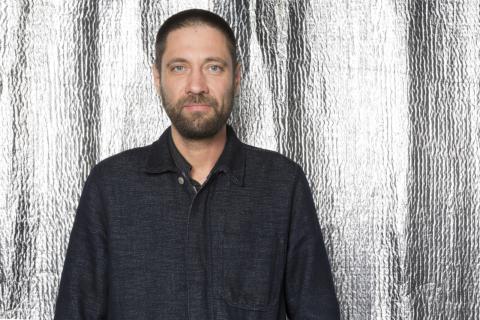
Arne Hendriks – The Incredible Shrinking Man
A performative lecture on downsizing the human species
Over the past 8 years Arne Hendriks has investigated if and how the human species can become smaller. "The Incredible Shrinking Man" investigates the possibility of a smaller human species. Small people need less and have more. At present Homo sapiens is growing towards scarcity where we should be shrinking towards a situation of abundance. The human species is one of the most hypervariable species on Earth. The smallest person known to human history was Chandra Bahadur Dangi from Nepal, who measured 54.6cm. American Robert Wadlow was the tallest person in recorded history with a height of 272cm. "The Incredible Shrinking Man" suggests to shrink to 50cm. At this height we need less then 25% of the resources we need today. The challenge is not so much how to become smaller, this is a matter of genes and food, but how to desire to become small. People have an irrational love for tallness, growth, more. We don’t want to become smaller. Yet we must. Arne Hendriks will share his ideas on how to overcome the seemingly impossible and take the first few small steps towards a smaller human species. Rule one: Suspend disbelief. -
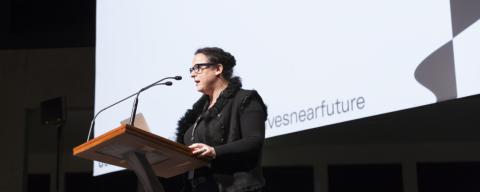
Alexandra Midal – Conclusion
As soon as the colloquium is over, Alexandra Midal undertakes the flashback exercise. Her synthetic and personal re-reading unravels the spool of time and narratives, proceeding in between myth, animism and apocalypse but also speculation, eroticism and hope as resistance. So many arguments contradict Rem Koolhaas’ assertion that "capitalism is our only horizon."
-
Dossier #
ISSUE#12 – De/production without cons/des/truction
After a dream in which an extraterrestrial intelligence warned them that the planetary ecosystem was collapsing, the situationist artist and electronic musician Chris Korda founded their ‘religious’ Church of Euthanasia movement in 1992, which they endowed with a single commandment: ‘Thou shalt not procreate’ and a slogan repeated everywhere from house records to banners: ‘Save the Planet – Kill Yourself.’ Thirty years later, the grotesque comedy of this nihilistic stance hasn’t worn off, while its observations on the state of the planet appear all the more bitterly visionary and intra-terrestrial. Urgent questions arise in the face of the devastation of ecosystems and resource depletion. These emerge in a singular way in a school of Art and Design, where students are trained to produce objects. How can art and design practice be combined with ecological issues? Does production necessarily imply a form of destruction? What forms might a turn towards deproduction take? This feature considers these issues via three complementary approaches. Firstly, it looks at the practicalities of measuring the impact of a project that makes it possible to acknowledge emissions and reorient practices in a virtuous way. The carbon calculator project initiated by Yves Corminboeuf, sustainable development delegate at HEAD, is presented here using the actual case of a Talking Head conference. Historically speaking, the hypothesis of deproduction echoes different conceptual and critical practices that have questioned the status of the object or the directive to build a career. At a time when the utopia of digital dematerialisation is proving to be very energy-consuming, David Zerbib engages in a reflection on the contemporary dialectic of the material and the immaterial. Departing from conceptual art practices, he sees the emergence of ecosystemic thought within the very instability and multiple reconfiguration of contemporary artistic productions. Logically speaking, the watchwords of this questioning of productive logic are resource conservation. The pursuit of this objective takes multiple paths and is often filled with joy rather than a sense of deprivation – as are Chris Korda's songs. Removing, undoing, giving up, recycling, repairing, reallocating, sabotaging become practices in themselves. A series of articles in this feature focuses on a few radical practices, by historical and/or recalcitrant figures in art and design, but also by HEAD students and teachers who rethink their production, improduction or deproduction in the light of the ecosystemic challenge. Sylvain Menétrey Cover image: Church of Euthanasia, CC-BY-SA 3.0